Jon Meacham and Jonathan W. White Win Lincoln Prize
On April 11, the Gilder Lehrman Institute of American History awarded the prestigious Gilder Lehrman Lincoln Prize to historians Jon Meacham and Jonathan W. White. The ceremony took place at the Harvard Club in New York City. The two laureates each received half the $50,000 award, and each received a bronze replica of Augustus Saint-Gaudens’s lifesized bust, Lincoln the Man
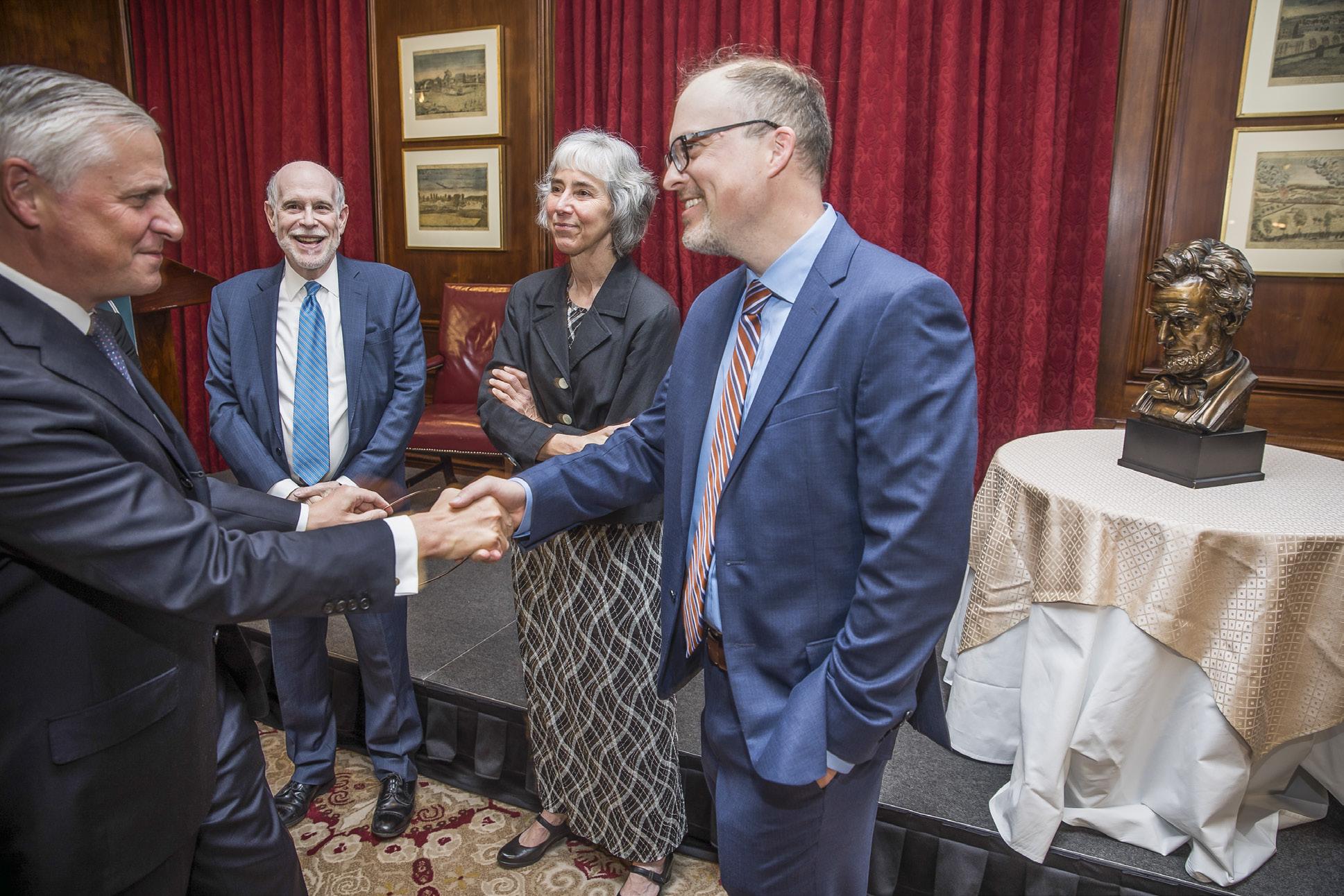
Civil War News last year, Harold Holzer wrote, “A House Built by Slaves is a welcome and crucial contribution to the Civil War literature, and should be cited as long as Lincoln biography is written.”

James G. Basker, president of the Gilder Lehrman Institute of American History, said, “And There Was Light and A House Built by Slaves powerfully humanize the story of the Civil War by re-examining the lives and legacies of those who lived it. Thousands of books have been written about Abraham Lincoln and his contemporaries, but these studies by Meacham and White stand out for their narrative skill and interpretive brilliance.”
Larry D. Walker, a trustee at Gettysburg College, added, “We are pleased to be able to honor two outstanding books.

Jonathan White’s work provides us with a deeper and important understanding of the view of Lincoln shared by African Americans in the Civil War era. Jon Meacham’s work is a major contribution to the long line of Lincoln biographies that will be read and re-read for decades.”
want to say something about a very great man, to whom we all owe a debt of gratitude—but to whom I am particularly thankful.
The prize jury consisted of Elizabeth Varon, Harold Holzer, and John Stauffer; they wrote that Meacham’s And There Was Light: Abraham Lincoln and the American Struggle (Random House) is “a timely and original biography of Lincoln, well informed by modern scholarship and full of educational value for the broad reading public.” They concluded, “Meacham’s superbly readable biography . . is one of the very finest that we have, and will stand the test of time.”
The jury wrote that White’s A House Built by Slaves: African American Visitors to the Lincoln White House (Rowman and Littlefield) “captures the symbolic importance of social equality as an issue to be addressed during— and after—the restoration of the Union and eradication of slavery.” In a review that appeared in
Jonathan W. White, who regularly writes reviews for Civil War News, delivered the following remarks when he accepted the award.
It is an honor to be here tonight. I thank the jury and the board of trustees for selecting A House Built By Slaves as one of this year’s recipients. I am especially thrilled to be sharing this honor with Jon Meacham.
My wife, Lauren, our daughters, Charlotte and Clara, and my parents, Bill and Eileen, have been steadfast support over the years. My poor kids—who are right over there—have been living with Lincoln for as long as they can remember. They’ve visited more Lincoln sites than most Americans ever see . . . although they don’t let me dress them up as Old Abe anymore.
Before I make a few remarks about the greatest American, I
Lewis Lehrman has transformed the field of American history. His founding of the Gilder Lehrman Institute has been a boon for scholars, and has brought history to life for thousands of schoolchildren. One of the first grants I ever received was a Gilder Lehrman Fellowship in 2006 that enabled me to come to New York for three weeks to do research for my dissertation.
In 2007, Lew sponsored a conference at Princeton for young scholars interested in American history. At that conference I met two professors from Christopher Newport University, and I guess I made a good impression, because two years later, they hired me as a postdoc, and I have been at Christopher Newport ever since. I would not be the scholar I am today were it not for Lewis Lehrman. His kindness and generosity set me on a path toward becoming one of the luckiest people in the world, a tenured professor at an extraordinary university.
In 2014, I started collecting
letters from African Americans to Lincoln, and I published them in 2021 in a book called To Address You As My Friend: African Americans’ Letters to Abraham Lincoln (University of North Carolina Press). One of my favorites came from a man named Hannibal Cox.
Cox had been born into slavery in Virginia, but after Lincoln issued the Emancipation Proclamation, he joined the Union Army; as a soldier he learned how to read and write. Cox was so proud of what he was learning that he wanted his commander in chief to know about it. So, in March 1864 he sent a letter to Lincoln, briefly describing his life story and praising the American flag. But the most touching part is the postscript in which he wrote: “I sends this for you to look at, you must not laugh at it.”
Hannibal Cox knew that people had a natural inclination to laugh at mistakes made by others. He knew that his grammar, spelling, punctuation, and penmanship were not perfect. And he worried that Lincoln might hold this letter in his hand and chuckle. But he sent it to Lincoln anyway.
Now, I don’t know what Lincoln’s reaction was when he held this letter in his hands, but I highly doubt that he laughed. You see, most letters Lincoln received were sent throughout the federal bureaucracy and are now housed in various record groups at the National Archives. But Lincoln held onto this one, and it remains in his personal papers at the Library of Congress. Clearly this letter meant something to the president.
In the course of my research I learned that African Americans did not simply write to Lincoln. They also went to the White House to meet with him. In doing so, they were claiming the right of U.S. citizens to speak freely, and to petition the government for a redress of grievances. A remarkable transformation took place during Lincoln’s presidency. Prior to the Civil War African Americans were more likely to be bought and sold by a sitting president, than to be welcomed as his guests. But Lincoln broke down barriers that
Vol. 49, No. 6 40 Pages, June 2023 $4.00 America’s Monthly Newspaper For Civil War Enthusiasts 14 – American Battlefield Trust 34 – Book Reviews 12 – Central Virginia Battlefield Trust 26 – Critic’s Corner 28 – Emerging Civil War 39 – Events 24 – The Graphic War 18 – The Source 20 – This And That 10 – The Unfinished Fight 16 – Through the Lens H Lincoln . . . . . . . . . . . . see page 4
Jon Meacham and Jonathan W. White greet one another with Harold Holzer and Elizabeth D. Leonard. (Photos by Ilir Bajraktari)
Lincoln Prize.
Civil War News
Published by Historical Publications LLC
520 Folly Road, Suite 25-379, Charleston, SC 29412 800-777-1862 • Facebook.com/CivilWarNews mail@civilwarnews.com • civilwarnews.com
Advertising: 800-777-1862 • ads@civilwarnews.com
Jack W. Melton Jr.C. Peter & Kathryn Jorgensen PublisherFounding Publishers
Editor: Lawrence E. Babits, Ph.D.
Advertising, Marketing & Assistant Editor: Peggy Melton
Columnists: Craig Barry, Salvatore Cilella, Stephen Davis, Stephanie Hagiwara, Gould Hagler, Chris Mackowski, Tim Prince, and Michael K. Shaffer
Contributor & Photography Staff: Greg Biggs, Curt Fields, Michael Kent, Shannon Pritchard, Leon Reed, Bob Ruegsegger, Carl Sell Jr., Gregory L. Wade, Joan Wenner, J.D.
Civil War News (ISSN: 1053-1181) Copyright © 2023 by Historical Publications LLC is published 12 times per year by Historical Publications LLC, 520 Folly Road, Suite 25 PMB 379, Charleston, SC 29412. Monthly. Business and Editorial Offices: 520 Folly Road, Suite 25 PMB 379, Charleston, SC 29412, Accounting and Circulation
Offices: Historical Publications LLC, 520 Folly Road, Suite 25 PMB 379, Charleston, SC 29412. Call 800-777-1862 to subscribe. Periodicals postage paid at U.S.P.S. 131 W. High St., Jefferson City, MO 65101.
POSTMASTER: Send address changes to: Historical Publications LLC 520 Folly Road Suite 25 PMB 379 Charleston, SC 29412

Display advertising rates and media kit on request. The Civil War News is for your reading enjoyment. The views and opinions expressed herein are those of its authors, readers and advertisers and they do not necessarily reflect the official policy or position of Historical Publications, LLC, its owners and/or employees.
P UBLISHERS :
Please send your book(s) for review to: Civil War News
520 Folly Road, Suite 25 PMB 379 Charleston, SC 29412
Email cover image to bookreviews@civilwarnews.com. Civil War News cannot assure that unsolicited books will be assigned for review. Email bookreviews@civilwarnews.com for eligibility before mailing.
ADVERTISING
Email us at ads@civilwarnews.com Call 800-777-1862
MOVING?
Contact us to change your address so you don’t miss a single issue. mail@civilwarnews.com • 800-777-1862
SUBSCRIPTION
Current Event Listings
To see all of this year’s current events visit our website at: HistoricalPublicationsLLC.com
Terms and Conditions
The following terms and conditions shall be incorporated by reference into all placement and order for placement of any advertisements in Civil War News by Advertiser and any Agency acting on Advertiser’s behalf. By submitting an order for placement of an advertisement and/or by placing an advertisement, Advertiser and Agency, and each of them, agree to be bound by all of the following terms and conditions:
1. All advertisements and articles are subject to acceptance by Publisher who has the right to refuse any ad submitted for any reason. Mailed articles and photos will not be returned.
2. The advertiser and/or their agency warrant that they have permission and rights to anything contained within the advertisement as to copyrights, trademarks or registrations. Any infringement will be the responsibility of the advertiser or their agency and the advertiser will hold harmless the Publisher for any claims or damages from publishing their advertisement. This includes all attorney fees and judgments.
3. The Publisher will not be held responsible for incorrect placement of the advertisement and will not be responsible for any loss of income or potential profit lost.
4. All orders to place advertisements in the publication are subject to the rate card charges, space units and specifications then in effect, all of which are subject to change and shall be made a part of these terms and conditions.
5. Photographs or images sent for publication must be high resolution, unedited and full size. Phone photographs are discouraged. Do not send paper print photos for articles.
6. At the discretion of Civil War News any and all articles will be edited for accuracy, clarity, grammar and punctuation per our style guide.
7. Articles can be emailed as a Word Doc attachment or emailed in the body of the message. Microsoft Word format is preferred. Email articles and photographs: mail@civilwarnews.com
8. Please Note: Articles and photographs mailed to Civil War News will not be returned unless a return envelope with postage is included.
2 CivilWarNews.com June 2023 2 June 2023 CivilWarNews.com
INFO:
RATES
Subscription
Subscribe securely at CivilWarNews.com Deadlines for Advertising or Editorial Submissions is the 20th of each month. Email: ads@civilwarnews.com Digital Issues of CWN are available by subscription alone or with print plus CWN archives at CivilWarNews.com Advertisers In This Issue: Ace Pyro LLC 31 American Battlefield Trust 25 Artilleryman Magazine 13 CWMedals.com, Civil War Recreations 15 Civil War Navy Magazine 9 College Hill Arsenal – Tim Prince 31 Day by Day through the Civil War in Georgia – Book 18 Dell’s Leather Works 18 Dixie Gun Works Inc. 25 Georgia’s Confederate Monuments – Book 34 Gettysburg Foundation 8 Gunsight Antiques 22 Harpers Ferry Civil War Guns 2 HistoryFix.com 23 The Horse Soldier 5 James Country Mercantile 9 Le Juneau Gallery 11 Lincoln Pocket Knife 30 Mercer University Press 27 Mike McCarley – Wanted Fort Fisher Artifacts 29 Military Antique Collector Magazine 38 National Museum of Civil War Medicine 9 N-SSA 8 Red Devil Militaria 15 Regimental Quartermaster 23 Richard LaPosta Civil War Books 34 Shiloh Chennault Bed and Breakfast 10 Suppliers to the Confederacy – Book 31 Ulysses S. Grant impersonator – Curt Fields 15 Events: MKShows, Mike Kent 3, 34 Military Antique Show – Virginia 31 Poulin’s Auctions 40 Southeastern Civil War & Antique Show 39
U.S.
rates are $41/year, digital only $29.95/year, add digital to paper subscription for only $10/year more.
Charleston Gun & Knife Show
Exchange Park Fairgrounds 9850 Highway 78 Ladson, SC 29456
June 3 & 4, 2023
Asheville Gun & Knife Show
WNC Ag Center 1301 Fanning Bridge Road Fletcher, NC
July 8 & 9, 2023


Charleston Gun & Knife Show





Exchange Park Fairgrounds 9850 Highway 78 Ladson, SC 29456
Sept. 9 & 10, 2023



Asheville Gun & Knife Show
WNC Ag Center 1301 Fanning Bridge Road Fletcher, NC
Oct. 7 & 8, 2023
Mike Kent & Associates, LLC • PO Box 685 • Monroe, GA 30655 770-630-7296 • Mike@MKShows.com • www.MKShows.com Military Collectible & Gun & Knife Shows Presents The Finest Williamson County Ag Expo Park 4215 Long Lane Franklin, TN 37064 Dec. 2 & 3, 2023 Middle TN (Franklin) Civil War Show Promoters of Quality Shows for Shooters, Collectors, Civil War and Militaria Enthusiasts
H Lincoln from page 1 had been in place for decades. He treated black visitors with kindness and cordiality, and he always shook their hands, something that few white Americans of his generation would ever do.
In August 1862, he met with the heroic South Carolinian, Robert Smalls, a former slave who had freed himself by stealing a Confederate ship. He met with Frederick Douglass three times during the Civil War to discuss matters of public policy. Douglass later remarked that Lincoln treated him as an equal and “received me . . . just as you have seen one gentleman receive another!”
He met with Paschal Randolph, a spiritualist and sex magician, who wanted to recruit black soldiers. Since my kids are in the audience, I’m not going to tell you what a sex magician was— you’ll have to pick up a copy of the book.
He met with officials from black nations like Liberia and Haiti,
including Alexander Crummell and Joseph Jenkins Roberts.
Despite opposition from his own family, he shook black hands at public receptions, including two army surgeons, Alexander T. Augusta and Anderson R. Abbott.
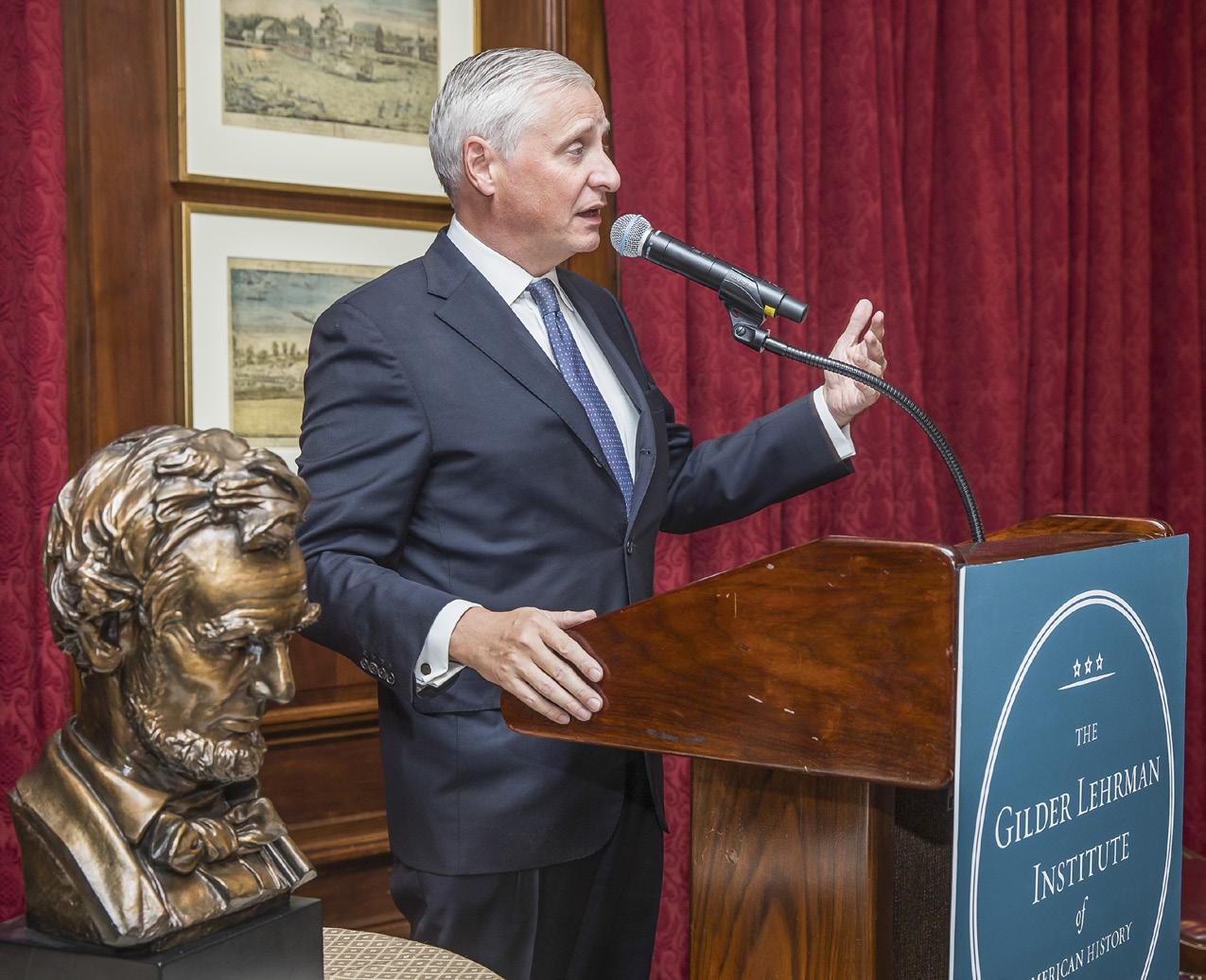



When black delegations came to the White House asking for the right to vote, Lincoln showed sympathy for their cause and began working behind the scenes to push for black suffrage.
In September 1864, black ministers from Baltimore gave Lincoln a beautiful Bible with this gold emblem on the front cover. The following month, Sojourner Truth marveled at the gift.
I could tell many, many stories tonight, but I will focus on just two.
In the spring of 1864, an artist from Philadelphia named Caroline Johnson decided to make a beautiful wax fruit display for Abraham and Mary Lincoln. The gift cost her about $150 to make, and it had a retail value of $350.
Mrs. Johnson and her black Baptist minister, James Hamilton,
presented the gift to the Lincolns in the White House library, on April 2nd. Now, the library was the large, oval-shaped room in the Lincolns’ private living quarters. It is the room where Lincoln would find quiet to read, think, nap, or play with his boys. It was not a public space. For Lincoln to invite a black woman into this room made a remarkable statement. In fact, this may be the first time a person of color, other than a servant or member of the White House staff, was invited into the private living spaces of the first family.
Rev. Hamilton opened the conversation by offering the gift to Lincoln as a symbol of African Americans’ gratitude for emancipation. He then said, “Perhaps Mrs. Johnson would like to say a few words?”
Caroline Johnson was understandably nervous. She gazed down at the floor, not knowing what to say. But after a few moments, she placed her hand on her chest, feeling as though a fire was burning inside of her. She later said: “It burned and burned till it went all over me. I think it was the [Holy] Spirit.”
Her mind went to Isaiah chapter 51, in which God promises everlasting comfort and salvation to the suffering. “Listen to me, you who pursue righteousness,” wrote the Old Testament prophet, “look to the rock from which you were hewn. . . . Look to Abraham your father.”
With these words in her mind, Mrs. Johnson looked at Lincoln and said, “Mr. President, I believe God has hewn you out of a rock, for this great and mighty purpose. Many have been led away . . . but you have stood firm, because God was with you, and if you are faithful to the end, he
will be with you.” Lincoln was visibly moved by these words. He thanked her for “the beautiful present,” and, choking back tears, he added, “You must not give me the praise—it belongs to God.”
Lincoln also met many black people around Washington, D.C. One Saturday morning, he went to the Contraband Camp on 7th Street, wanting to hear the exslaves sing. The commander of the camp asked a black refugee named Mary Dines to lead the singing. Mary’s knees trembled as she “stumbled” forward and began singing “Nobody Knows What Trouble I See, But Jesus.” She sang the first verse by herself, constantly glancing over at Lincoln. Then the rest of the contrabands joined in. They sang for an hour, as Lincoln wiped tears away from his eyes. The singers seemed to forget that he was there, and they “began to shout and yell” and dance. But Mary later said, “he didn’t laugh at them.”
In Mary’s recollection, we hear
the same concern that we heard in Hannibal Cox’s letter. These young black men and women feared that Lincoln might laugh at them for being different. But he didn’t. He treated them with kindness and respect, as human beings who had dignity and value. Mary Dines later added that Lincoln “was no President when he came to camp. He just stood and sang and prayed just like all the rest of the people.”
Lincoln’s empathy and humility helped transform the White House, at least for the final three years of his presidency. He strove to live up to the principles of the Declaration of Independence— that all people are created equal, and endowed by their Creator with certain unalienable rights. While Lincoln did not bring about perfect equality during the Civil War, something that would have been impossible to accomplish, he did set an example for future generations, and he serves as a model that we would be wise to never forget.
4 CivilWarNews.com June 2023 4 June 2023 CivilWarNews.com
White with his wife, Lauren, and daughters Charlotte (right) and Clara (left)
White delivering his acceptance speech.
Meacham and White with Gilder Lehrman Institute president James Basker answer questions from the audience. Meacham delivering his acceptance speech.
Jeffry Wert to Receive Atlanta Round Table’s Harwell Award
The Atlanta Civil War Round Table is pleased to announce that Jeffry D. Wert has been selected to receive the 2023 Richard Barksdale Harwell Award for The Heart of Hell: The Soldiers' Struggle for Spotsylvania's Bloody Angle

The Harwell Award is given annually by the Round Table for the best book on a Civil War subject published in the preceding year. “Mr. Wert is an outstanding scholar and a superb writer,” said Round Table president Loran Crabtree. “In The Heart of Hell the story of this fierce battle is told by the ordinary soldiers who fought it,” Crabtree added, “and is a valuable contribution to Civil War literature.”
Gary Barnes, chairman of the Harwell Award Committee, oversaw the selection process. “Our committee members carefully read numerous books written by some of the most accomplished Civil War scholars,” Barnes said, “and after much deliberation we picked Jeffry’s book as the best of the best.”
Consisting of a monetary prize and an engraved plaque, the award honors the late Richard Barksdale Harwell, nationally recognized librarian, bibliographer, and historian. Harwell served as the first president of the Atlanta Civil War Round Table from 1949 to 1951.
Books on any subject related to the Civil War can be considered for the award. Entries are judged on a variety of factors, including: originality of subject or treatment; historical accuracy; effectiveness of presentation; and the degree of original contribution to Civil War scholarship.
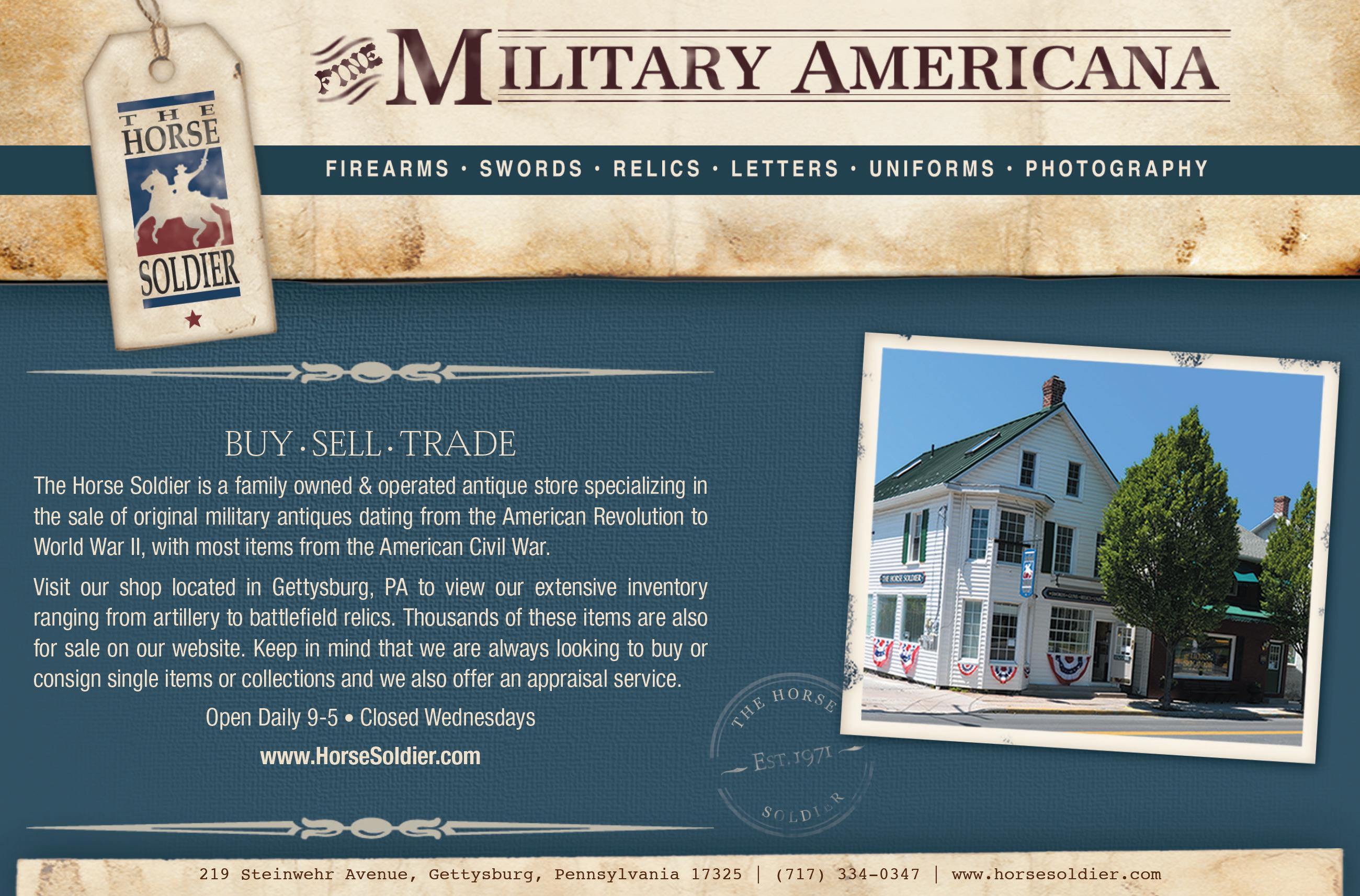
The Round Table first presented the Harwell Award in 1989. Recent recipients include Caroline Janney, Charles Knight, Stephen Davis, Hampton Newsome, and Wilson Greene. Wert previously won the award in 2012 for A Glorious Army: Robert E. Lee’s Triumph, 1862–1863
Wert will address the November
2023 meeting of the Round Table, at which time the award will be presented. The prizewinning work was published by the University of North Carolina Press.
The Round Table is now accepting nominations for the 2024 Harwell Award. To be considered for this year's award, all nominations and copies of
books from publishers or authors, must be received by the Atlanta Round Table by Dec. 31, 2023.
For more information please contact: Gary Barnes, Chairman, Harwell Committee 7535 Belton Bridge Road Lula, Georgia 30554-2346 770-561-3051

5 June 2023 5 June 2023 CivilWarNews.com CivilWarNews.com Want To Advertise In Civil War News? Email us at ads@civilwarnews.com Call 800-777-1862 Deadlines for Advertising or Editorial Submissions is the 20th of each month.
Jeffry Wert Speaking at Atlanta Round Table in 2019 (Gould Hagler)
Winner of the 2023 Richard Barksdale Harwell Award for Jeffry Wert’s book, The Heart of Hell: The Soldiers’ Struggle for Spotsylvania’s Bloody Angle.
The Same Day in June for one Soldier in 1863 and 1864
By Carl L. Sell Jr.
Upon hearing the Confederates had fired on Fort Sumter in April 1861, seventeen-year-old Henry Coddington Meyer immediately asked his parents for permission to join the Union Army. They refused, and it wasn’t until July the following year that Henry was able to go to war without their permission. He was eighteen and could make his own decision.
When word reached him that the Union Peninsula Campaign in Virginia was going badly, Henry wanted to help. Seeing an announcement in a New York newspaper that the Harris Light Cavalry was in town seeking recruits, he found the recruiters office at the Metropolitan Hotel and signed up for three years. He informed his parents the next day and was on his way the following night.

Still dressed as a civilian, Henry arrived in Washington City and checked in to the Willard’s Hotel. There he met his uncle, E.V. Price, who introduced him to General John Pope. The general had just been appointed as commander of the Army of Virginia and was staying at the hotel. The general, who was then organizing an assault on Richmond, provided Henry with a pass that enabled him to go through the Union lines and meet his regiment, the Second New York Cavalry (Harris Light).
After arriving in camp at Falmouth, Va., an interesting sidelight occurred. Henry was given a horse and a uniform. A fellow member of his company decided to desert and join Mosby’s Confederate command. He offered Henry $11 for his clothes. Henry agreed, but never received the $11. The Mosby tale also was bogus as Mosby himself was a private in the Confederate cavalry at the time and didn’t establish his independent band of guerrillas until the end of 1862.
Meyer’s arrival for duty coincided with General George McClellan’s retreat from the Virginia peninsula, ending one threat to Richmond at the city’s door step and Pope’s plan to attack the Confederate capital from the north. The Second New York performed rear-guard picket duty for the Army of Virginia but didn’t get close enough to hear “bullets whistle,” as Meyer put it, until Cedar Mountain.
At Second Manassas, the Second New York engaged in a charge that met a sheet of fire from both the enemy and Union infantry on their right flank which assumed they were firing
into a charge of enemy cavalry. Henry said in his memoirs that the charge was felt at the time to be a blunder, “one of the many from which our volunteer army constantly suffered in the early years of the war.”
After Pope’s army retreated
toward the defenses of Washington, the Second New York marched to Alexandria and subsequently returned to the Rappahannock River for picket duty, but was not actively involved in the Battle of Fredericksburg.
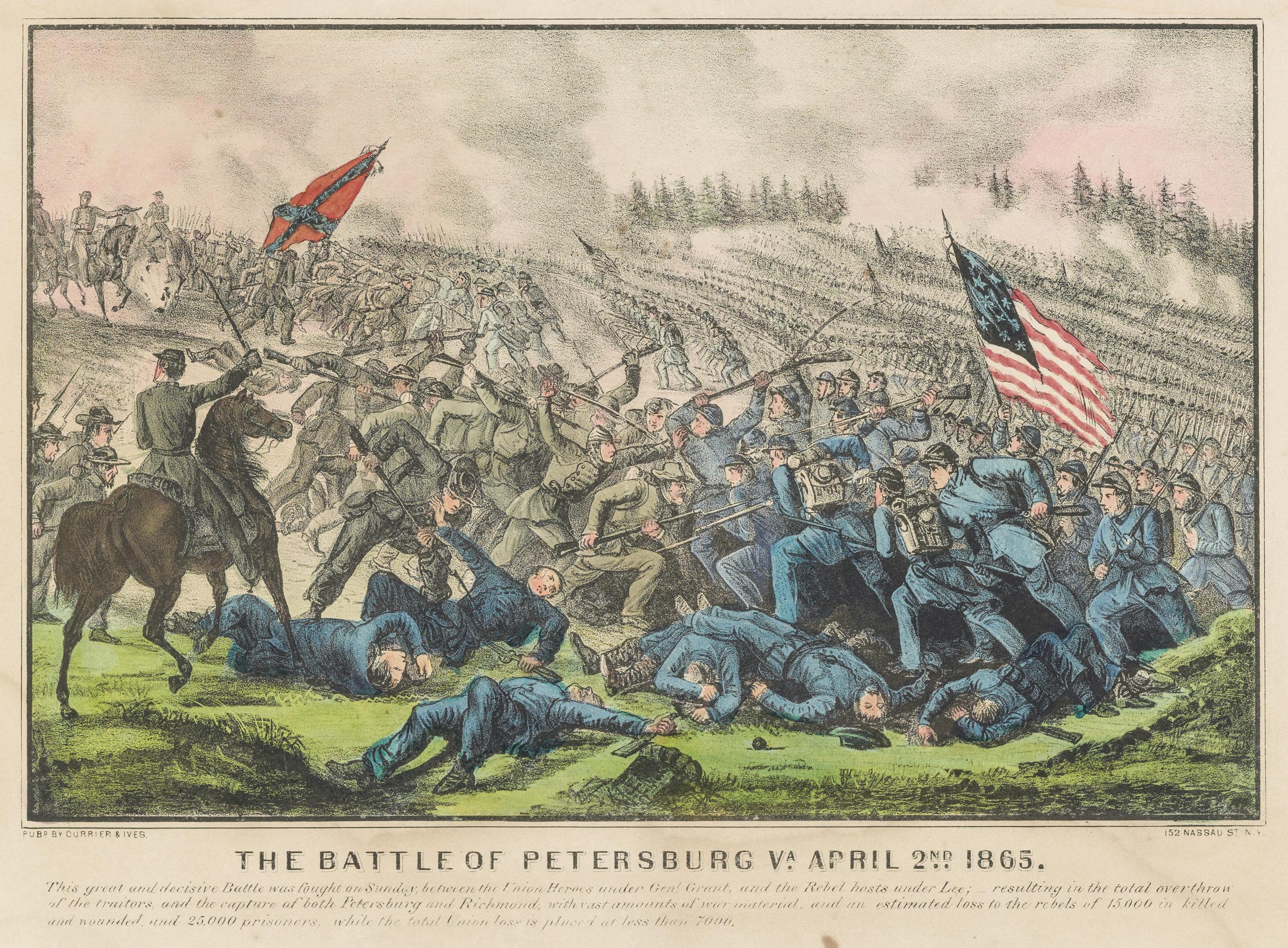
In November, General McClellan
was been relieved as commander of the Army of the Potomac; Major General Ambrose Burnside took over. After the defeat at Fredericksburg and a botched follow-up attack known as the “Mud March,” Major General Joseph Hooker took command.
Hooker was more attuned to the importance of cavalry’s role and the horsemen were worked hard to improve their riding and fighting skills. Previously, the recruits from northern cities were no match for the southern farm boys who grew up riding horses.

Meyer was “recruited” for duty as an orderly and, in December 1862, was detailed in that role to the headquarters of Brigadier
General David Gregg. Although still a private, he acted as an adjutant’s clerk on Gregg’s staff. Before the war, he had been a clerk in his uncle’s business of importing metal.
On June 9, Meyer was with the Union cavalry that made a surprise attack on Jeb Stuart’s Confederate cavalry at Brandy Station. After a spirited battle with charges being made back and forth, the Union riders were “withdrawn, without molestation, across the Rappahannock, the purpose of the movement being accomplished: which was to cripple Stuart’s cavalry, to prevent his starting on a raid to Pennsylvania, which was contemplated, and also to
6 CivilWarNews.com June 2023 6 June 2023 CivilWarNews.com
The Custer on horseback drawing is from Aldie and the Petersburg art shows the closeness of the lines where Meyer saved his comrade.
Henry Coddington Meyer.
The Battle of Petersburg Va. April 2nd 1865. Published by Currier & Ives, 1865?. (Library of Congress)
ascertain if Lee’s army was in that area.”
Meyer further stated that Brandy Station was a “great benefit to our troops engaged, in giving them experience in fighting large bodies mounted, with sabers, and added much to their confidence, as was demonstrated in later engagements.”
Early in the battle, Gregg’s troopers reached the grounds around Stuart’s headquarters but were repulsed, and Meyer suffered a sabre wound to his collarbone. Fortunately, his horse jumped a fence, and he avoided capture. Later that night, when he was making up the list of division casualties, he did not enter his name because it would appear in the newspapers and “needlessly alarm my mother.” He was patched up by a surgeon and continued to ride with the division, saying his wound was painful, but not dangerous.
Not long thereafter, Major General Hooker ordered Brigadier Generals Judson Kilpatrick and David Gregg to lead their cavalry to the summit of the Blue Ridge Mountains where they could observe Confederate movement in the Shenandoah Valley. They left Falmouth on the Rappahannock, crossed through the Bull Run Mountains at Thoroughfare Gap, and arrived on the outskirts of Aldie, Va., on June 17.
Before entering the village, the troopers stopped at the Little River to water their horses. A bizarre incident occurred that brought laughter to all involved, including an unfortunate captain. As the troopers lined their horses on one side of the Little River, impatient and flamboyant Captain George Custer decided to go across the river and allow his horse to drink alone.

After Custer’s horse had his fill, the captain urged him up the steep bank to leave the river bottom. The horse fell over backward, depositing Custer and his golden curls in the water. No one was hurt and Custer laughed along with his fellow cavalrymen.
The rest of the day was no laughing matter as the Yankees suffered major casualties trying to outfight Confederates under Colonel Thomas Munford, who was assigned to screen Lee’s movements. The decisive moments came as the Confederates kept up a withering fire from the protection of stone walls along Snickersville Turnpike. There, the First Massachusetts and Fourth New York suffered devastating losses. The battle ended at night when the Confederates retired to Middleburg.
Meyer, who had acted as an aide to Gregg for most of the battle, described the night after the fighting ended as a “rather
blue time for us.” He recalled that his command hired wheelwrights in the town to construct coffins.
As the campaign progressed, Stuart’s riders kept the Union cavalry away with murderous fire from defensive positions in Middleburg and Upperville while General Lee’s infantry moved down the valley toward Maryland.
At Upperville, General Gregg’s horse was hit in the stomach by a piece of shell, with the general’s leg being grazed. The general changed horses but soon was surprised to see his wounded horse trying to keep up despite being badly wounded. At the general’s request, Meyer pulled his pistol and killed the horse.

The Union riders crossed into Maryland by moonlight at Leesburg and were greeted enthusiastically at Frederick. At New Windsor, Meyer and his comrades were given items necessary for a bath, followed by a breakfast served by girls from a nearby boarding school. They rode all the way to York, Pennsylvania, before they were recalled to Gettysburg. They went via Hanover, arriving there the day after a clash involving Stuart and Kilpatrick’s cavalry.
Gregg’s division was sent to guard the Federal position on Cemetery Hill. The next day, reinforced by Custer’s Brigade, Gregg’s Division fought Stuart to a standstill at East Cavalry Field, an encounter that stopped the Confederates from piercing Union defenses from the rear. By then, Custer was a brigadier general because of what Meyer called his “conspicuous gallantry.”
After Gettysburg, Meyer spent his time relaying messages
and information to and from General Gregg, acting as an officer although still a private. It wasn’t until he was transferred to General Kilpatrick’s staff that the oversight was corrected, and he was promoted to second lieutenant, a position he would hold until the army reached Petersburg.
In early March 1864, Meyer rode with Kilpatrick as part of the ill-fated Dahlgren Raid on Richmond. Brigadier General Kilpatrick and Colonel Ulrich Dahlgren moved toward Richmond in separate attacks designed to free Union prisoners and capture Confederate leaders. The Confederates claimed the raid was designed to assassinate Confederate President Jefferson Davis and his cabinet. Federal officials denied the charge. Dahlgren was killed and the Union riders retreated.
As part of the 1864 Overland Campaign, Meyer commanded troops in action at the Wilderness, Spotsylvania, and Cold Harbor, while at the same time serving as Kilpatrick’s aide. On some occasions, he delivered messages to headquarters, including those from General Grant. On others, he was in the field directing fighting against the enemy.
Meyer described the crossing of the James River toward Petersburg as “two steps forward, one back” because the roads were very sandy. General Grant had hoped to attack shortly after reaching Petersburg, but the slowness of the march and Confederate reinforcements stymied the advance. Meyer was promoted to captain, skipping over first lieutenant.
On June 17, the Federals
advanced but were repulsed in heavy fighting. Meyer escaped the fire, but afterward noticed Lieutenant James Randall lying severely wounded between the lines, lying face down in a corn field. Meyer cleaned Randall’s face so he could breathe but had trouble carrying the wounded man. He then was struck by a ball alongside his spine. Comrades lifted Meyer and Randall to safety. Miraculously, both survived despite bullets hitting all around them.
After being pulled from the line of fire, Meyer knew he had been hit but didn’t think the wound was serious. He told Lieutenant Colonel Walter Newberry that he had a “thirty-day” wound and would be back in action soon. Colonel Newberry assigned two men to help get Meyer to an aid station. There, he once more encountered Randall, again wiping dirt from the man’s face so he could breathe.
Meyer was evacuated to City Point and then Seminary Hospital at Georgetown in Washington City. Although the ball was successfully removed, pieces of both the ball and cloth worked their way to the surface until June 1865. He walked with a cane for another year and was limited to clerical work and writing the rest of his life. He married and fathered two children before passing away at the age of 90 in 1935. Meyer became an advocate for improved sanitary conditions, authoring a widely acclaimed article that led to an improved sewer system. He is buried in Montclair, Essex County, N.Y. Newberry was promoted to colonel and then Brevet Brigadier General just before the war ended.
7 June 2023 7 June 2023 CivilWarNews.com CivilWarNews.com
Spot where Custer fell into the Little River. (Bill Kamenjar)
Brigadier-General George A. Custer. (Harper’s Weekly, March 19, 1864.)
Afterwards, he served as mayor of Petersburg and then moved to Chicago, where he served as postmaster before being elected to the United States Congress in 1891, but he was not a candidate for reelection in 1893.
On April 11, 1893, Newberry wrote to Secretary of War Russel A. Alger recommending Meyer as a Medal of Honor recipient for his act of saving a brother officer acting well beyond his regular duty. He also cited the high position Meyer held in
Want To
In Civil War
?
the scientific world as a proper person to receive such a high and distinguished honor from the government. Meyer was honored as a Medal of Honor recipient on March 29, 1899.
According to Meyer, Randall was hit five times before being helped from the Petersburg battlefield. He started his long, painful road to recovery in a wagon over rutted roads to City Point. Randall was discharged as disabled on December 9, 1864. After the war, he lived on Ninth Street in Washington, D.C., while working as a bookkeeper at the Treasury Department. He died in 1893 and is buried in Phillipsburg, Orange County, N.Y. He never married.

Information for this article came from Meyer’s “Civil War Experiences under Bayard, Gregg, Kilpatrick, Custer, Raulston, and Newberry.” Research by the author and genealogist Karen Connair, and research and editing by historian Ben Trittipoe.

Carl Sell is a frequent contributor to the Civil War News. His book “Battle of Aldie” includes Meyer’s description of Custer’s fall into the Little River. Sell can be reached at sellcarl@aol.com or 703-971-4716.

The N-SSA is America’s oldest and largest Civil War shooting sports organization. Competitors shoot original or approved reproduction muskets, carbines and revolvers at breakable targets in a timed match. Some units even compete with cannons and mortars. Each team represents a specific Civil War regiment or unit and wears the uniform they wore over 150 years ago. Dedicated to preserving our history, period firearms competition and the camaraderie of team sports with friends and family, the N-SSA may be just right for you.

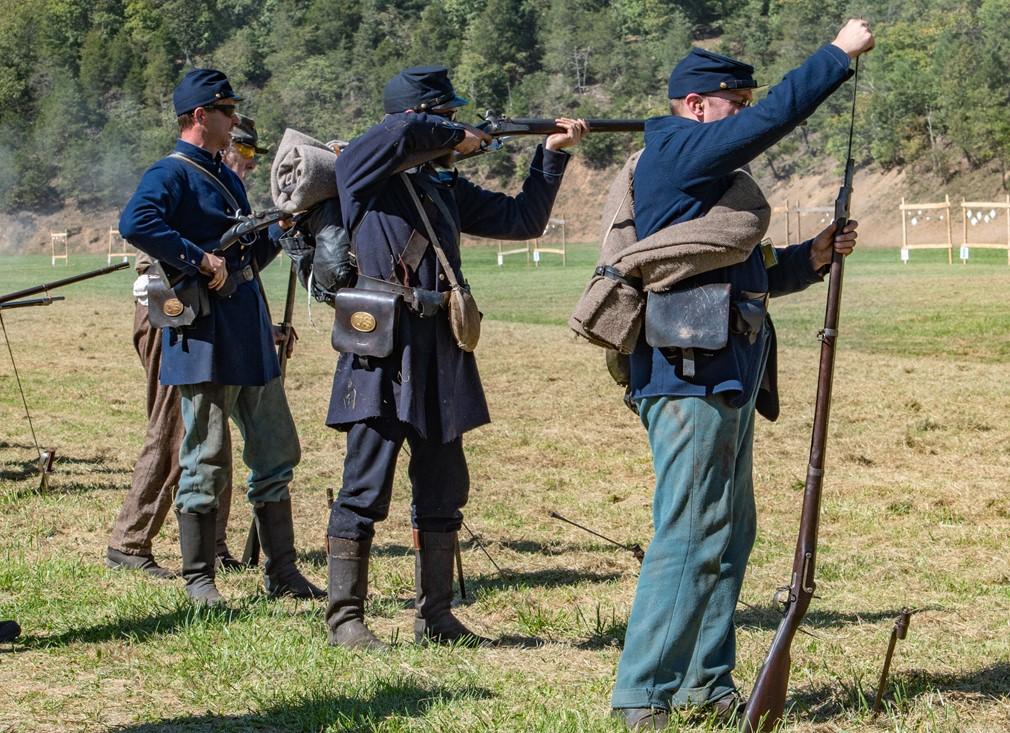
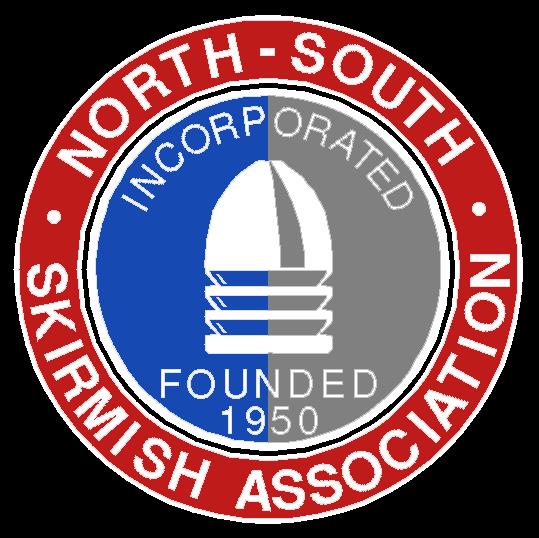


For more information visit us online at www.n-ssa.org.

8 CivilWarNews.com June 2023 8 June 2023 CivilWarNews.com
Advertise
News
Email us at ads@civilwarnews.com Call 800-777-1862 CW N Civil War News Inside this issue: H Day see page Remembrance Day, 2019, Gettysburg–-when Wikipedia estimated there--(Alexander Glisson)
Military Courts and Courts-Martials –
to Guide Rulings
By Joan Wenner, J.D.
In the Civil War, notwithstanding 'command responsibility' issues, it's been estimated about 80,000 actual Federal courts-martials were conducted. These largely targeted lower ranking soldiers, involving some 178,000 men. Some resulted in acquittal. More than half the military trials were held in the border states of Missouri, Maryland, and Kentucky.

Many case files for the army, for example, are searchable by regiment at the National Archives at: archives.gov/research/ military/army/court-martial-casefiles. (Records of General CourtsMartial and Courts of Inquiry of the Navy Department 1797-1867 are available at Microscopy 273.)
Of the three types of military courts over which a Judge Advocate presides, a general court-martial is the most serious.
Some military courts were major events as with the Fitz John Porter trial. Read about the slew of charges and his trial: en.wikipedia.org/wiki/
court-martial_of_Fitz_John_

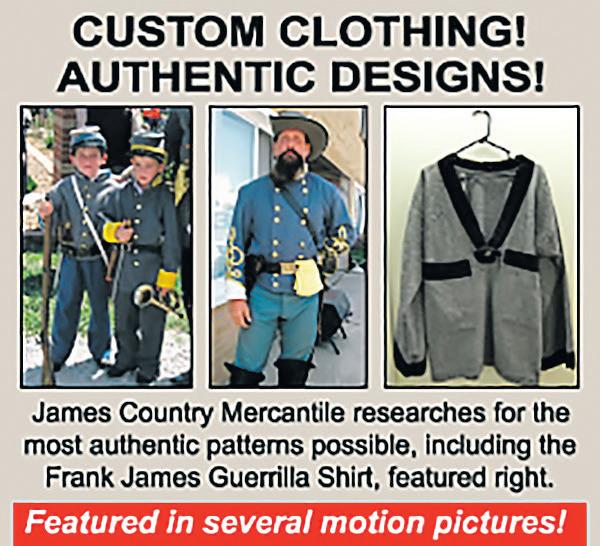
Porter
At the Second Battle of Bull Run, the Federals had to cross a wide expanse of open land to attack Jackson's troops who were protected by an unfinished railroad bed and cut. Marching across open fields toward a fortified enemy worried General Porter and caused him to ignore orders from General Pope, an action for which he was later court-martialed.
At Folly Island, South Carolina, where the court-martial assembled to hear the case of Captain Henry Krausneck, Company D, 7th Pennsylvania Volunteers, stemming from his actions at Gettysburg on July 1 and 2, 1863. For a link to the trial transcript see story reported at: Gettysburgcompiler. org/2011/10/13 (written by Mary Roll.)
Union General Henry Halleck was among the first to recognize the need for administering justice within the military; on January 1, 1862, he issued General
Order No.1 to implement courts. Halleck’s General Order No. 38 addressed “declaring disloyal sentiments and opinions with the object and purpose of weakening the power of the government.”
The U.S. Code of Military Justice was first drafted, then passed by Congress in 1950. Its latest reincarnation was the Military Justice Act of 2016.
Joan Wenner, J.D. has contributed for many years to the Civil War News and The Artilleryman among other history publications and has a law degree. Comments are welcomed by email to joan_writer@yahoo.com

9 June 2023 9 June 2023 CivilWarNews.com CivilWarNews.com Letters to the Editor: Please email: mail@civilwarnews.com Want to Advertise in Civil War News? Email: ads@civilwarnews.com Join the Crew! civilwarnavy.com 1 Year—4 Issues: $37.95 Subscribe Now at civilwarnavy.com Or send a check to: CSA Media, 29 Edenham Court, Brunswick, GA 31523 International subscriptions subject to postage surcharge. 19th CENTURY LIVING HISTORY! James Country MERCANTILE 111 N. Main Liberty, MO 64068 816-781-9473 • FAX 816-781-1470 www.jamescountry.com Ladies – Gentlemen Civilian – Military • Books • Buttons • Fabrics • Music • Patterns • Weapons Mens, Ladies and Children’s • Civilian Clothing • Military Clothing • Military Accessories • Accoutrements Everything needed by the Living Historian! Our Clothing is 100% American Made! The home of HOMESPUN PATTERNS© Visit our website at: HistoricalPublicationsLLC.com 48 E. Patrick St., Frederick, MD. 301-695-1864 / civilwarmed.org Divided by Conflict. United by Compassion.
only a ‘skeleton of direction’
19th Century Cocktails: The Mint Julep
The mission of this column in Civil War News is to research relevant aspects of the material culture of the 1860s. To fully appreciate the antebellum heritage of the South, one must develop an appreciation for their most famous cocktail, the mint julep. The first mention of the julep cocktail in America dates from 1784 when a Briton traveling through Virginia noted that many men of middle class would start the day, “…with a julap made of rum, water and sugar.” It was taken as a precaution against malaria. A “julap” or “julep” was a term of Mediterranean origin for medicine mixed with alcohol. The first mention of adding mint was in 1803. What became the essential Southern libation was described at that time as “…a dram of spirituous liquor that





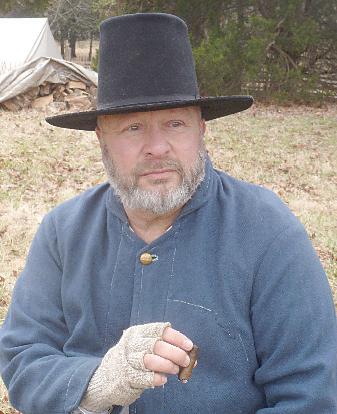
has mint steeped in it, taken by Virginians of a morning.” It is a fine way to begin the day and, of course, also an equally fine way to end one. No specific or exact place in Virginia is mentioned, however in 1804 a student at the College of William & Mary in Williamsburg noted that his classmates were entirely too devoted to the consumption of them.
Records at the Old White Tavern at Hot Springs, Virginia, now West Virginia, show that as early as 1816 the drink was already a feature of their summer menu. The cost was reasonable too — three drinks for 50 cents. If the Commonwealth of Virginia can lay claim to inventing the mint julep, the Commonwealth of Kentucky soon afterwards popularized the concoction as the perfect vehicle for their local bourbon whiskey.
As far as commonly enjoyed drinks go, getting a decent mint julep outside of Kentucky Derby Day at Churchill Downs can be
famously difficult. Most bars, if they serve the drink at all, do a poor job of it by using packaged drink mixes with artificial mint flavor which smell and taste like mouthwash.
Hence, if you want a mint julep that lends any insight at all into the famous Southern cocktail, plan on mixing it yourself. Since the drink contains only four main ingredients—bourbon, ice, sugar and spearmint—how can it be that the mint julep is so difficult to get right? Kentuckian Simon Bolivar Buckner Jr., son of the famous Confederate general, explained: “…a mint julep is not a product of a formula. It is a ceremony and must be performed

10 CivilWarNews.com June 2023 10 June 2023 CivilWarNews.com
Two unidentified soldiers in Union uniforms drinking whiskey and playing cards. (Library of Congress)
Simon Bolivar Buckner (Library of Congress)
by a gentleman possessing a true sense of the artistic, a deep reverence for the ingredients and a proper appreciation of the occasion. It is a rite that must not be entrusted to a novice, a statistician, nor a Yankee. It is a heritage of the Old South, and emblem of hospitality, and a vehicle in which noble minds can travel together upon the flowerstrewn paths of a happy and congenial thought.”
To a gentleman of the 1860s, recipes appear to be unnecessary in the realm of the ceremonial mixing of proper mint juleps.
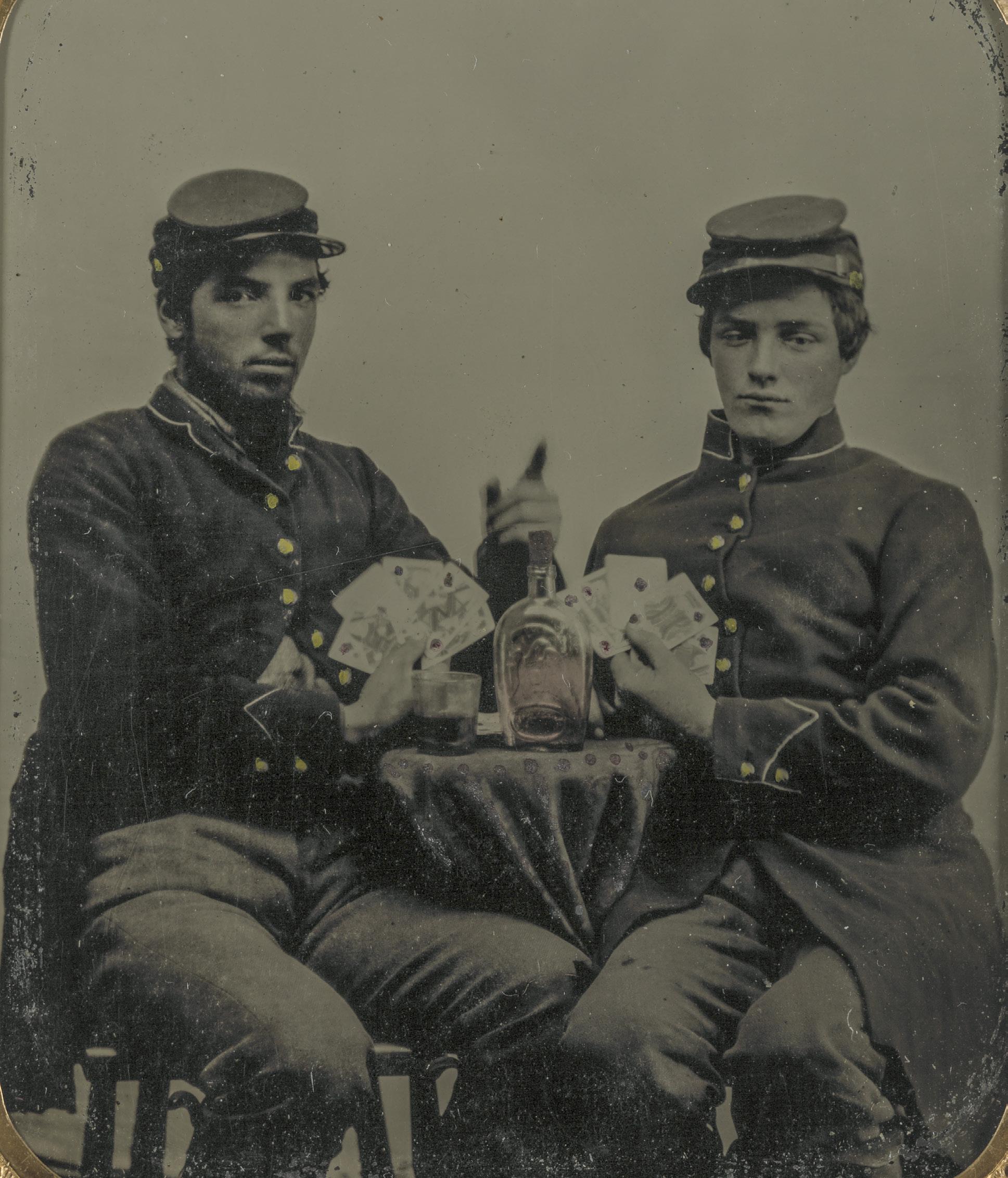
After all, do we really need a recipe for everything? The Kentucky Housewife (1839) by Letice Bryan contains a recipe for buttering bread. It stipulates that the bread should be cut from the loaf before it is buttered. One would think that antebellum cooks who were old enough to read a cookbook would know how to spread butter on a piece of bread. This is just my opinion, of course.
On the other hand, with alcohol consumption about three times higher in the 1860s than modern norms, we appear to have lost touch with the finer points of



the drink mixing rituals of the 1860s. It would be remiss not to provide a recipe for a period correct mint julep. Here is one from Bon-Vivant’s Companion by Jerry Thomas, which dates back to 1862.
Mint Julep No. 1
3/4 to 1 cup brandy or cognac
1/2 tsp. rum

2 and 1/2 tbs. water

1 tbs. sugar
Several fresh mint leaves Dissolve one tablespoon of white pulverized sugar in two and one-half tablespoons of water.
Take two sprigs of fresh mint and press them well in the sugar and water, until the flavor of mint is extracted. Add one wine glass of cognac brandy, and fill the glass with fine shaved ice, then draw out the sprigs of mint and insert them in the ice with the stems downward, so that the leaves will be above, in the shape of a bouquet. Dash with Jamaican rum, and sprinkle white sugar on top. Place a straw across the top of the glass, and there is your mint julep.
If that seems too complicated, here is a simpler receipt called The Civil War News mint julep. It is also in the spirit of the times.
The only stipulation is that it requires two separate glasses for mixing the four ingredients. Put a double shot of the best Kentucky bourbon in one glass and masticate a sprig of spearmint with shaved ice and sugar in the other. Throw out the glass with the mint mixture and drink the bourbon.
Craig L. Barry was born in Charlottesville, Va. He holds his BA and Masters degrees from UNC (Charlotte). Craig served The Watchdog Civil War Quarterly as Associate Editor and Editor from 2003–2017. The Watchdog published books and columns on 19th-century material and donated all funds from publications to battlefield preservation. He is the author of several books including The Civil War Musket: A Handbook for Historical Accuracy (2006, 2011), The Unfinished Fight: Essays on Confederate Material Culture Vol. I and II (2012, 2013). He has also published four books in the Suppliers to the Confederacy series on English Arms & Accoutrements, Quartermaster stores and other European imports.

11 June 2023 11 June 2023 CivilWarNews.com CivilWarNews.com HistoricalPublicationsLLC.com Buying and Selling The Finest in Americana 11311 S. Indian River Dr. • Fort Pierce, Florida 34982 770-329-4985 • gwjuno@aol.com George Weller Juno
Refreshing glass of mint julep.
Brotherly Bonds Broken at Spotsylvania


While there were occasions during the Civil War where brothers opposed each other in battle, it was far more common for family members to serve together in companies and regiments. Such was the case with Lt. Irby Goodwin Scott and his younger brother Pvt. Nicholas Ewing “Bud” Scott, who both served in Co. G, 12th Georgia Infantry. Irby, an eager volunteer, joined in June 1861. Young Bud had to wait until he turned 18 but enlisted two years later.

In his collection of letters, edited by Johnnie Perry Pearson, and published by the University of Tennessee Press, Irby often commented about Bud before his younger brother was able to enlist. From his earliest letters, Irby encouraged Bud to remain at home. Writing to his family from Richmond on June 25, 1861, Irby noted, “Tell Bud I think that he had better remain at home that there is enough men here for the present the whole country is alive with them.” A month later Irby reiterated his caution to his younger brother: “Tell Bud that I do not want him to come for he will find it different from what he expects there is many things he has never thought of and many quite different from his idea of it there are some in our company who were badly mistaken and wish now they had staid at home, but it is to late for them now to get out it.”
In a March 1862 letter, Irby gave several reasons for Bud not to join yet. Among them, Irby believed that Bud still lacked a mature “constitution,” and thus his health could suffer from serving. He also warned that the army was not a good place for a young man to acquire habits. Irby also thought that the army did not need Bud at the present time and that Bud could help the family more by remaining at home.
As Bud’s 18th birthday approached in April 1863, Irby had fewer reasons to discourage his brother’s enlistment. In a letter from “near Fredericksburg” that month, Irby advised his family about how to get Bud to
the army’s present position and that he had made arrangements for Bud to join his regiment and company. Irby cautioned though, that, “I cannot get him in my mess yet for we already have too many, but I can make arrangements for him for the present, and then I will see what can be done.”
Bud arrived in Richmond by train on June 5, 1863. Coming along with him was an enslaved man from the Scott family named Franklin, who served as a camp servant. By June 17, Bud and Franklin were with Irby and the 12th Georgia. In a letter that day, Irby noted that both brothers’ health was good and that “Bud has stood the march very well.”
Although Irby had fought in several previous battles, Bud’s first taste of combat came at Gettysburg. Irby wrote home five days after the battle from Hagerstown, Maryland. In that letter he related that “both of us have escaped thus far unhurt through the protection of a divine providence.” Due to illness, Irby missed the first day’s fight, but Bud fought all three days. Irby
12 CivilWarNews.com June 2023 12 June 2023 CivilWarNews.com
Irby buried Bud near the McCoull House on the Spotsylvania battlefield. A local resident wrote Irby and Bud’s father in 1867 that he found Bud’s body buried “about 20 feet south of & old log stable.” (Library of Congress)
Bud Scott was killed during Col. Emory Upton’s May 10, 1864, assault on the southwest edge of Confederate “Muleshoe” salient defensive line. This photograph is from the Confederate perspective. (Tim Talbott)
left some writing space for Bud in a letter dated July 16. In it, Bud was able to tell his father a little about his Gettysburg experience and explained that “I don’t expect to see home soon unless I get wounded.” In closing, he mentioned having diarrhea but hoped that he could continue to avoid contracting measles.
Through the summer and fall of 1863, Irby and Bud went through the routines of camp life. Unfortunately, they do not express much about their relationship in their letters. Their primary concerns seemed to be informing their Georgia family about their health and war news. Few letters tell about the brothers’ experiences during the winter and early spring of 1864, but that winter they were part of a detachment sent to the Shenandoah Valley to scout. They remained in the Valley until mid-April.
Back with the 12th Georgia in Gen. George Doles’ brigade, Bud wrote his father at the end of April that “I am looking for a big fight to come off every day both sides are making preparations for a fight.” He included a postscript that he turned 19 that day. Irby and Bud next fought in the tangled Wilderness near Saunders Field against Maj. Gen. Gouverneur K. Warren’s V Corps. Irby wrote home, “In line of Battle,” on May 6, informing his father about the casualties in the regiment and his company and relating that “Bud was shot through the leg of his pants,” but was apparently otherwise unharmed.
During the furious fighting of Col. Emory Upton’s Federal attack at Spotsylvania the evening of May 10, 1864, Bud was killed in action. In a letter that apparently did not survive, Irby wrote home to inform his parents. He wrote again on May 16 explaining: “I wrote you of Buds death he died fighting gallantly for his Country and his rights. I had him buried in a garden at the house of Mr. McCool [McCoull] about two miles north of Spotsylvania Court House. His name was marked upon a board at the head of his grave.” That was all Irby wrote about Bud in that letter. Possibly feeling physically, mentally, and emotionally spent, that was all he could endure at present. Lending some evidence to that notion, Irby also mentioned that “I hope the fighting is over though I fear not. The men are all broke down.”

Perhaps realizing that his folks may wish for additional details about Bud’s death, Irby included more information in a May 25 letter from Hanover, Virginia. After explaining he had not “received the least injury” in the
latest battles, Irby said that Bud’s death on May 10 was from “the ball entering his head above the left eye, passing out at the back of the head.” Caught up in the fury of the fight, Irby did not learn of Bud’s death until the following morning when a company comrade located Bud “within a few feet of the trenches.”
One can almost feel Irby pour out his brotherly emotions in the next few lines: “I cannot describe my feelings when I learned his fate. I try to console myself that he died in a good cause, fighting gallantly for his country. He was a brave boy and a more gallant soldier never lived.” The grief Irby must have suppressed came spilling out: “I think of him every hour in the day and feel lonely for I always had an eye to his comfort. More than for myself. I would rather if it had been the will of God for him to have been spared.” Irby expressed that, “I must stop writing upon the subject and try to dismiss it from my mind. It makes me feel so sad.”
Irby soldiered on without Bud, fighting outside Washington, D.C., and in the Shenandoah Valley with Gen. Jubal Early’s command, and eventually at Petersburg. He survived the war and lived until 1925. Bud’s remains eventually received

interment in the Spotsylvania Confederate Cemetery where he presently rests.
CVBT has preserved over 150 acres at Spotsylvania.
Tim Talbott is the Chief Administrative Officer with the Central Virginia Battlefields Trust.
The mission of CVBT is to preserve land associated with the four major campaigns of: Fredericksburg, Chancellorsville, Mine Run, and the Overland Campaign, including the Wilderness, and Spotsylvania Court House. To learn more about this grassroots preservation nonprofit, which has saved over 1,700 acres of hallowed ground, please visit: www.cvbt.org.

13 June 2023 13 June 2023 CivilWarNews.com CivilWarNews.com Want to Advertise in Civil War News? Call 800-777-1862 or email ads@civilwarnews.com
Nicolas Ewing “Bud” Scott is buried in the Spotsylvania Confederate Cemetery. (Tim Talbott)
Brothers Irby and Bud Scott served in the 12th Georgia Infantry, a regiment in Gen. George P. Doles’ brigade. (Public domain)
e Artilleryman is a quarterly magazine founded in 1979 for
collect and
and
primarily from the Revolutionary War, Civil War to World War II. Now expanded and fully illustrated in rich color throughout the entire magazine. 520 Folly Road, Suite 25 PMB 379, Charleston, SC 29412 • 800-777-1862 • mail@artillerymanmagazine.com www.ArtillerymanMagazine.com The Artilleryman Magazine FOUR INCREDIBLE ISSUES A YEAR
enthusiasts who
shoot cannons
mortars
An Unparalleled Chance to Save 20 Acres Associated with the Final Attack at Antietam


The September 17, 1862, Battle of Antietam remains the single bloodiest day in American history. While the battle was a draw from a military standpoint, Lee’s army withdrew, giving Abraham Lincoln the “victory” he had been waiting for. Now, the Trust is launching a campaign to preserve 20 acres at Antietam— the site of some of the fiercest fighting associated with the Final Attack—at the historic Jacob Avey Farm.
The property marks one of the last and largest unprotected locations remaining at the Antietam Battlefield, where the Trust has helped preserve 464 acres of hallowed ground. With the parcel having a total transaction value of $730,000, the Trust has already secured nearly half the total cost but is now racing against the clock to raise the final $369,652 before July.
The 2020 discovery of the 1864 Elliott Burial Map revealed the Avey Farm as the location of several Confederate graves. It is truly sacred ground, consecrated by bloodshed. Yet there was nothing the Trust could do to preserve it at the time of the map’s discovery, as these 20 acres were in private hands and not for sale. Now, suddenly, the Trust has been offered the chance to buy the acreage and the historic farmhouse where the Avey family lived.
When war ravaged the nation beginning in 1861, farmers became fighters and homes became hospitals but for Jacob Avey, his quiet family farm became a bloody battlefield.
Much of the fighting on September 17 culminated on and around Avey’s Farm and South Carolina troops sheltered in Jacob Avey’s orchard. Throughout the day, Confederate artillery fought, maneuvered, and retreated around Avey’s field. However, these forces could not stop the Union juggernaut that had its eyes set on the nearby spires of Sharpsburg.
Confederate Gen. A.P. Hill came at the last moment, having
marched his Light Division from Harpers Ferry and arriving just in time to undo the Union assault. The next day, Union forces moved across the river to the Virginia shore, marking the end of the Battle of Antietam and forever
etching the Jacob Avey Farm in history. To learn more about this preservation opportunity, visit www.battlefields.org/preserve.
Introducing “Boots on the Ground: A Manual for Battlefield Friends Groups”
With funding from an American Battlefield Protection Program planning grant, the Trust contracted with the Walker Collaborative to create “Boots on the Ground: A Manual for Battlefield Friends Groups.” The Trust views this manual as an invaluable tool for both friends groups and preservation-minded citizens, immediately and for years to come.
one-hour webinar with primary collaborator Phil Walker on May 8, 1:00 p.m. EST. An in-depth analysis of the resource will be given with an opportunity for questions and answers at the end of the session. For more information, visit www. battlefields.org.
Shiloh National Military Park is the Star of the Trust’s Latest Video Driving Tour
To mark the engagement’s 161st anniversary, the American Battlefield Trust debuted a nearly two-hour online video tour of Shiloh National Military Park. While not a substitute for an in-
With development threats becoming more prevalent and powerful, the Trust believes it is of critical importance that local groups galvanize to help keep our nation’s heritage alive and protected. Currently, there are over 100 friends groups in 26 states that are directly involved in either Civil War, War of 1812, or Revolutionary War historic sites and the number continues to grow. Friends groups tend to serve as a battlefield’s first line of defense and the first party aware of any potential threats or preservation opportunities.
With “Boots on the Ground,” those seeking to start a new friends group or those who wish to sustain and improve existing groups, will have the thorough and user-friendly guide to empower them in the process.
The “Boots on the Ground” manual was launched on May 1. Following, the Trust will host a
person battlefield experience, this technology-filled tool emphasizes the importance of digital products in expanding access to historic landscapes, a concept proven via the battlefield preservation organization’s mobile apps and vastly popular YouTube channel.
Armed with GoPro cameras mounted on his vehicle and a mind molded by years of dedicated study, Dr. Timothy B. Smith, a longtime ally of the American Battlefield Trust, former National Park Service ranger at Shiloh and professor of history at the University of Tennessee (Martin), guides viewers through the twists and turns of Shiloh National Military Park. Using the same route that visitors experience if trekking the battlefield themselves, Smith familiarizes audiences with iconic spots like Pittsburg Landing, Grant’s Last Line of Defense, Shiloh Church, and the Hornet’s Nest, along

14 CivilWarNews.com June 2023 14 June 2023 CivilWarNews.com
The Avey Farmhouse at Antietam National Battlefield in Sharpsburg, Md. (Photo by American Battlefield Trust)
Shiloh National Military Park in Shiloh, Tenn. (Photo by Tommy Kays)
with a handful of lesser-known locations. Aided by on-screen maps, historical imagery, and out of the car experiences, those watching online can better frame the unfolding of the Battle of Shiloh than they could through reading words on a page.
The Trust’s release of the video tour is a much-anticipated follow-up to its Gettysburg video driving tour, which was released in November 2021. Created in coordination with the National Park Service, the free tour of the Shiloh Battlefield is now available at www.youtube.com/ americanbattlefieldtrust.
National Medal of Honor Day Recognized Through New Digital Endeavor
Guests marking Medal of Honor Day, March 25, with a visit to the Medal of Honor Museum at Patriots Point Naval & Maritime Museum were among the first to experience a new interactive exhibit—a touchscreen-enabled global citation map pinpointing each of the 3,516 actions for which Americans were awarded the Medal of Honor. It is the first on-site component of the Medal of Honor Valor Trail™, a joint effort of the American Battlefield Trust and the Congressional Medal of Honor Society (CMOHS).
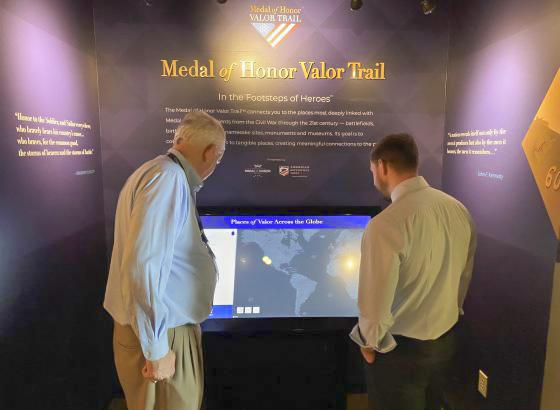
To celebrate Medal of Honor Day—marking the 160th anniversary of the first medals being awarded to the Andrews’ Raiders, whose exploits 200 miles behind Confederate lines were immortalized as The Great Locomotive Chase—Patriots
Point Naval & Maritime Museum and CMOHS hosted special behind-the-scenes storytelling tours throughout the weekend. Those who attended these special tours were among the first to experience the new Valor Trail exhibit, a precursor to a broader reimagining of the Medal of Honor Museum in the coming years.
The Medal of Honor Valor Trail™ initiative spans the full lineage of the Medal of Honor, from its Civil War origins into the 21st century. It is designed to connect the places most deeply connected to the lives and legacies of recipients. Learn more at www.valortrail.org.

The Trust Celebrates Sending More Than 40,000 Students to Battlefields and Beyond

Starting in 2014, the Trust began efforts to help send classrooms to historic sites to experience place-based learning with its Field Trip Fund. Since then, the funding program has sent more than 400 trips and 40,000 students to insightful sites relating to the Revolutionary War, War of 1812, or Civil War, including Independence Hall, the Smithsonian Museum of American History, Mount Vernon, Gettysburg National Military Park, and so many more!
Now, in 2023, the program will be renamed the History Field Trip Grant Program. The funding possibility will increase to $3,000 per trip, with the final amount granted to each selected applicant
Journey to Franklin, Tenn., for the Trust’s 2023 Annual Conference!
Join the Trust for its 2023 Annual Conference on May 18-21, in Franklin, Tenn. The conference poses a chance for all Trust members to gather. Whether you’re a seasoned veteran or an enthusiastic newcomer, the organization has a great deal planned, with site visits to places such as Stones River, Spring Hill, Parker’s Cross Roads, and, of course, Franklin. With a slew of talented historians in tow, the annual conference is sure to satisfy any history enthusiast. For more information, visit www.battlefields.org/events.
Ulysses S. Grant


HQ: generalgrantbyhimself.com
E-Telegraph: curtfields@ generalgrantbyhimself.com
Portrayed by E.C. Fields Jr., Ph.D.
Signal Corps: (901) 496-6065 Facebook@ Curt Fields
15 June 2023 15 June 2023 CivilWarNews.com CivilWarNews.com Visit our website at: HistoricalPublicationsLLC.com Red Devils Militaria Ashley Rhodes (318) 419-0535 or email luckydog530@yahoo.com Original Colonial, Revolutionary War, Antebellum & Civil War, Documents, General Orders, Newspapers, Images, and Imprints. Visit my eBay store at: www.ebay.com/str/reddevilsmilitaria Over 15,000 sales and 100% Positive Feedback
Trust members enjoy the 2022 Annual Conference with a tour at Manassas National Battlefield Park. (Photo by Buddy Secor)
Joined by CMOHS Executive Vice President John Falkenbury, Medal of Honor recipient Ryan Pitts explores the freshly installed exhibit. (Photo by American Battlefield Trust)
based on demonstrated need. To learn more or apply, visit www. battlefields.org/learn/educators.
The Bravest Brigade
“Beauregard is not such a fool as to leave his base of operations and attack us in ours.

There is no enemy nearer than Corinth.” – U.S. Gen. William T. Sherman


In March 1862, attention turned towards “the vertebrae of the Confederacy,” Corinth, Miss. Considered by both sides as essential to the Confederacy’s survival, Corinth was a major Confederate railroad hub and logistics center. In preparation for attacking Corinth, U.S. Gen. Ulysses S. Grant, Army of the Tennessee, had assembled 40,000 men at Pittsburgh Landing, Tenn. Gen. Don Carlos Buell’s Army of the Ohio, 35,000 men, was coming from Nashville, Tenn., to reinforce the attack.

C.S. Gen. Albert Sidney Johnston’s, Army of Central Kentucky, 17,000 men, joined Gen. P.G.T. Beauregard’s, Army of the Mississippi, 35,000, men to defend Corinth. Having officially taken command of the combined force, Johnston determined that he needed to attack the Federals before Buell joined Grant. Between bad weather and the greenness of the men, it took longer than expected for the Confederates to travel the 20-miles north.
The Battle of Shiloh, Tenn., April 6-7, 1862, began before dawn. Pickets’ claims that the Confederates were nearby had been ignored. Having failed to convince his superior officer, Brigadier Gen. Benjamin Prentiss to strengthen their position, Col. Everest Peabody, 25th Mo., authorized a reconnaissance force of 300 men. Encountering
C.S. Gen. William Hardee’s skirmishers, the Federals pushed them across Farley field to join the main Confederate force. The Federals fell back as Hardee’s men moved forward. The Southern advance slowed as the men plundered Federal camps for food and souvenirs.
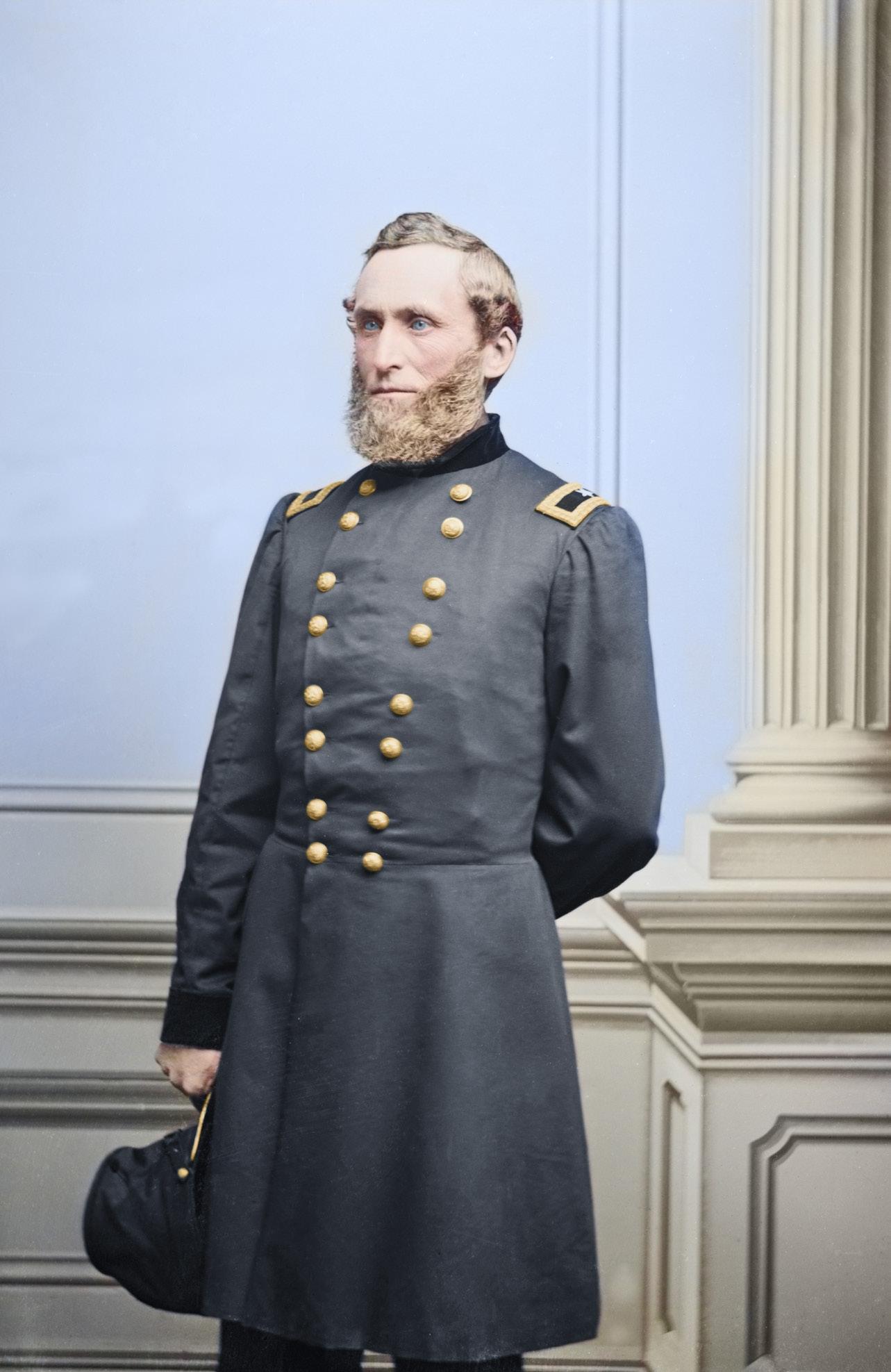
The divisions of generals William T. Sherman and Prentiss were closest to Corinth, first attacked and with the least experienced men. As the enemy approached Sherman’s Division, a colonel yelled “Retreat! Save yourselves!,” then led the running. Sherman was able to gather enough men to hold his ground against four successive charges before giving way during the fifth.
The battle had opened before either side was ready. The sounds of gunfire ended Beauregard’s attempt to call off the attack.
Johnston was sensitive to usurping command of Beauregard’s larger army in a location previously agreed as Beauregard’s. He had graciously assigned Beauregard the commander’s position behind the battleline while Johnston rode up front with his troops. Johnston devised his attack plan to accommodate the inexperience of the troops; he assumed it would be followed. Beauregard interpreted his own assignment as agreement to his complicated, three wave attack plan.
Grant, hearing the guns, rode his horse up the bluff to investigate. Grant had injured his ankle and took a crutch with him. Intercepting retreating men, his first act was to establish a straggler line with a battery of guns. By 10:00 a.m., he reached Sherman, who had been wounded twice and needed more ammunition. Next to Sherman, Grant visited Gen. John McClernand, near Shiloh Chapel. Afterwards, Grant rode over to Prentiss. He was positioned at what would become known as the Hornets’ Nest, a wagon track, a.k.a. the sunken road, near heavy woods with a thick undergrowth and fields on either side. The hickory and oak trees to his front allowed the Federals to shoot
16 CivilWarNews.com June 2023 16 June 2023 CivilWarNews.com
Maj. Gen. Benjamin Prentiss. Colorization © 2023 civilwarincolor.com, courtesy civilwarincolor.com/cwn. (Library of Congress)
Battle of Shiloh – April 6th, 1862. Advertising print copies a portion of Théophile Poilpot’s painted panorama. (Library of Congress)
Maj. Gen. Benjamin F. Cheatham, C.S.A. Colorization © 2013 civilwarincolor.com, courtesy civilwarincolor.com/cwn. (Library of Congress)
through the trees while screening their location. Grant told Prentiss to “maintain that position at all hazards.” He would interpret the order literally. Prentiss had been commissioned a brigadier general on the same day as Grant. Grant’s former army rank made him senior to Prentiss. Sorting out the seniority issue had caused tension between the men.
The Rebel yell announced the arrival of C.S. Col. R.G. Shaver’s men at the Hornets’ Nest. The Federals kept low to the ground as the Confederates ran out of ammunition firing over their heads. The Federals poured metal hail on the departing men. One of Gen. Benjamin Cheatham’s batteries fired on Prentiss’ men with four Napoleons and two 6-pounders.
The Hornets’ Nest was interfering with Johnston’s plan to wheel his army left and advance. Johnston watched the fighting and corrected the aim of a battery. He moved forward to lead a charge towards a peach orchard on the left. Johnston, mortally wounded in the advance, passed command to Beauregard.
Beauregard sent in Col. Randall Gibson’s Brigade, part of Gen. Daniel Ruggles Division to attack the left side of the Hornets’ Nest. Gibson’s three charges were met with withering fire, and he withdrew his men for the day.

Uncoordinated infantry attacks did not dislodge Prentiss. Ruggles gathered 51 artillery pieces for a massive barrage.
describing the action. Thousands of visitors paid 50 cents each to see it. The painting’s popularity inspired an advertisement with a McCormick Harvester & Twine Binder, unscathed amid the panorama.
In 1894, the battlefield of Shiloh was named a national park. David W. Reed, 12th Iowa’s historian, was appointed as the park’s commissioner. Reed placed monuments to tell the story of the Hornets’ Nest and other positions.

Modern scholars debate whether the importance of the Hornets’ Nest was genuine or hypothetical. Grant would later describe Prentiss as “a brave and very earnest soldier. No man in the service was more sincere in his devotion to the cause for which we were battling; none more ready to make sacrifices or risk life in it.”
Everything considered, Prentiss had held the Hornets’ Nest at all hazards. As he surrendered his
2,200 men, Prentiss had ridden around the field, waving the white flag. He had rose in his stirrups and proclaimed to the Confederates, “Yell boys, you have a right to shout for you have captured the bravest brigade [sic division] in the U. S. Army.”
Sources: Cunningham, O. Edward. Shiloh and the Western Campaign of 1862: Savas Beatie, 2009
Nevin, David, and the Editors of Time-Life Books. The Road to Shiloh: Early Battles in the West: Time-Life Books, Alexandria: VA, 1983
Stephanie Hagiwara is the editor for Civil War in Color.com and Civil War in 3D.com. She also writes a column for History in Full Color.com that covers stories of photographs of historical interest from the 1850’s to the present. Her articles can be found on Facebook, Tumblr and Pinterest.
About 4 p.m. the guns opened fire. The Confederate infantry advanced. The Federals returned fire. The “whole earth seemed in a blaze—the sharp, ringing crash of our musketry—our batteries belching forth their shot and shell, and roaring like the deep toned thunder,” recalled U.S. Pvt. William Swan, 3rd Iowa Infantry. The Confederates made between 8 – 14 separate assaults on the Hornets’ Nest. After seven hours, Prentiss still held his position between Sherman and McClernand. Running out of ammunition, both generals were falling back, exposing Prentiss’s flanks. Prentiss stayed, allowing the other units and batteries to retreat. Rushing forward, the Confederates mixed with the Federals, both sides still firing. Prentiss finally had to “yield the fight.”
The assertion that the “Hornets’ Nest” saved the day at Shiloh spread through Iowa veteran reunions in the 1880’s. In 1885, French artist Théophile Poilpot was commissioned to paint a panorama painting of the Battle of Shiloh. Poilpot chose to focus on the Hornets’ Nest. His team photographed the battlefield, interviewed veterans, and collected 2,000 carte de viste photographs of the combatants. The 50 feet high and 400 feet long painting was displayed in a specially constructed building in Chicago. Shrubs, weapons, and trees were placed at the base of the canvas. Prentiss gave lectures

17 June 2023 17 June 2023 CivilWarNews.com CivilWarNews.com Subscribe online at CivilWarNews.com
View of the Hornet’s Nest at Shiloh. (Photographs in the Carol M. Highsmith Archive, Library of Congress, Prints and Photographs Division.; Battle of Shiloh, April 6-7, 1862.)
ShipIndex.org
Whether researching the brown water or navigating high-seas naval action during the American Civil War, this month's source— https://www.shipindex.org— provides a quick method to learn more about individual vessels. This site offers both free use as well as a subscription service. The standard access provides more than 150,000 citations, while the subscription service (fee starts at $8 per month) contains over 3.2 million records. Start your quest at https:// blog.shipindex.org/2023/04/
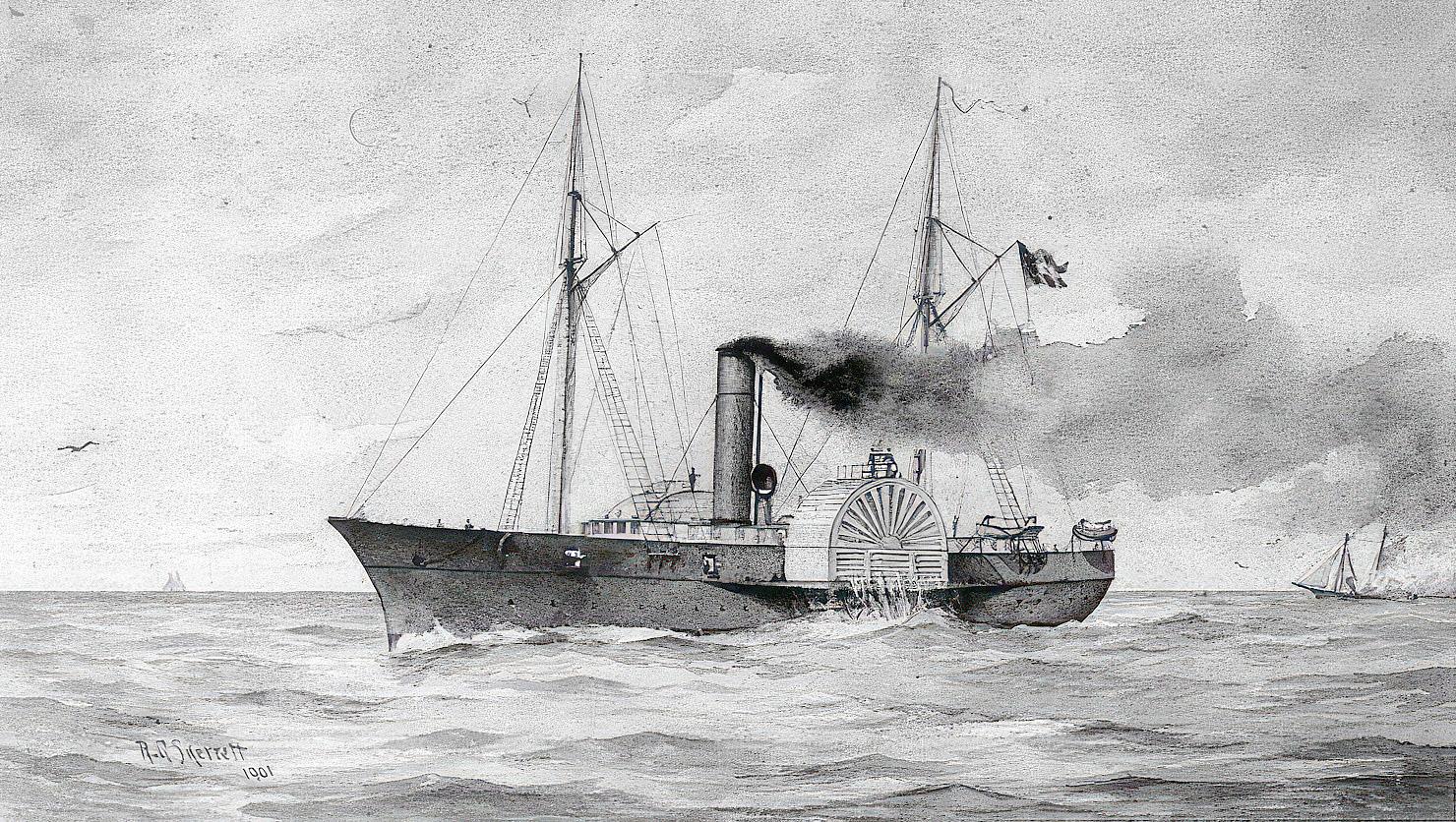
Day by Day through the Civil War in Georgia

introduction-to-searchingshipindex-org/ to learn about search tips!

This writer selected the CSS Nashville to demonstrate the types of information one will discover while exploring the site. A search of the Confederate ship - which formally carried the names Thomas L. Wragg and Rattlesnake—yielded the results in the image below. An additional 28 entries—from links to books, websites, journal articles, and newspaper articlesprovide additional information from various sources. Note: some links, primarily to newspapers, require a subscription to access the material on the referenced site. (Example: Accessible Archives.)
Sail (or steam) through these records and continued success researching the American Civil War!

Michael K. Shaffer is a Civil War historian, author, lecturer, and instructor who remains a member of the Society of Civil War Historians, Historians of the Civil War Western Theater, and the Georgia Association of Historians. Readers may contact him at mkscdr11@gmail.com or request speaking engagements at www.civilwarhistorian. net. Follow Michael on Facebook, www.facebook.com/ michael.k.shaffer, and Twitter @ michaelkshaffer.
Until now, a daily account (1,630 days) of Georgia’s social, political, economic, and military events during the Civil War did not exist. In Day by Day through the Civil War in Georgia, Michael K. Shaffer strikes a balance between the combatants while remembering the struggles of enslaved persons, folks on the home front, and merchants and clergy attempting to maintain some sense of normalcy. Maps, footnotes, a detailed index, and bibliographical references will aid those wanting more.
February 2022 • $37.00, hardback
Michael K. Shaffer is a Civil War historian, instructor, lecturer, newspaper columnist, and author. He is a member of the Society of Civil War Historians, Historians of the Civil War Western Theater, and the Georgia Association of Historians. Contact the author: mkscdr11@gmail.com
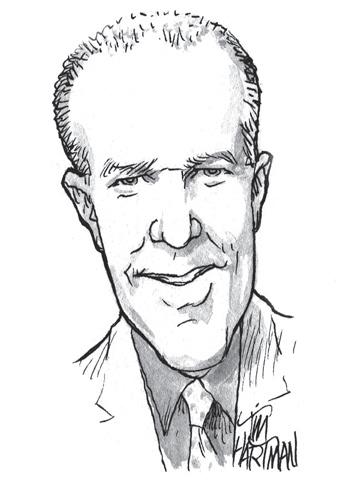
www.mupress.org

• 866-895-1472 toll-free


18 CivilWarNews.com June 2023 18 June 2023
CivilWarNews.com
Shipindex.org home page header. CSS Nashville. (U.S. Naval Historical Center) – MAKER –LEATHER WORKS (845) 339-4916 or email sales@dellsleatherworks.com WWW. DELLSLEATHERWORKS.COM For Advertising Information in Civil War News call 800-777-1862 or email us ads@civilwarnews.com
CSS Nashville search results.
Private Benjamin Franklin Rogers Is Remembered
By Charles H. Bogart
At the beginning of the 19th century, Adam Rogers settled in the southern end of Madison County, Ky. Here he established a farm of over 500 acres. In 1811, he built a two-story brick house on his farm at the junction of Big Hill Road and Lexington Road.

In 1847, Adam’s son, Adam C. Rogers and his wife Martha, were blessed with a son, who they named Benjamin Franklin Rogers. The Rogers’ farm, worked with slave labor, was a prosperous endeavor, but this all changed in August 1862.
On August 29 and 30, 1862, a Confederate Army under Generals Edmund Kirby Smith and Patrick Cleburne was invading Kentucky. The Confederate force collided with a Federal Army under General William Nelson at the Rogers’ family farm. At this time, Benjamin Franklin Rogers was 15 years old. During the battle, the Rogers’ family took shelter in the farmhouse basement. When the Battle of Richmond, Ky., was over, the farm grounds were covered with bodies of dead and wounded Confederate and Federal soldiers, along with the remains of numerous horses and mules.
This battle was an overwhelming victory for the Confederates. The majority of the Federal troops of General Nelson’s command were either dead, wounded, or captured. Those who were not casualties were fleeing for Louisville, Kentucky, or Cincinnati, Ohio. Without additional Federal opposition, Confederate troops went on to occupy Lexington and Frankfort, Ky. At Frankfort, they inaugurated Richard Hawes as the Confederate Governor of Kentucky. However, the Battle of Perryville, fought Oct. 8, 1862, so weakened the Confederate Army that they pulled out of the Commonwealth shortly thereafter and never again returned in strength.
The Rogers’ farm had been destroyed by the fighting that turned it its land into the Richmond Battlefield. The farm’s outbuildings were either destroyed or heavily damaged, while the farm’s livestock and
crops was confiscated by the Confederate Army. The farm’s slaves dispersed. The Rogers’ family went overnight from being one of the rich elite families of central Kentucky to being impoverished gentry. The Rogers’ family would, within a few years, lose their farm, as they were unable to pay its debts.
In 1872, at the age of 25, Benjamin Franklin Rogers joined the U.S. Army at Louisville, Ky. On his enlistment papers, he listed his occupation as farmer. At the time of his enlistment, the 7th Cavalry Regiment, under the field command of Lt. Col. George Custer, was conducting peacekeeping operations in Kentucky and South Carolina. Benjamin Franklin Rogers was assigned on Feb. 5, 1872, to Co. G, 7th Cavalry at Spartanburg, S.C. Custer’s military rank in 1872 was that of lieutenant colonel, but he had been a brevet general of volunteers during the Civil War and was normally referred to as General Custer by the press.
It would appear from Private Benjamin Franklin Rogers’ army records that he had a drinking problem, although no cause for the following events has been found. On November 29, 1872, Rogers was sentenced by general court martial to four months confinement and four months of forfeiture of pay; then on Feb. 26, 1876, he was again sentenced by general court martial to four months confinement and four months of forfeiture of pay.
In June 1876, Co. G of the 7th Cavalry was part of Major Marcus A. Reno’s battalion during the Little Big Horn Campaign. Major Reno’s assignment on June 25 was to attack the lower half of an Indian camp discovered on the Little Big Horn River, while Custer attacked the camp’s upper portion. To reach the village, Major Reno’s command had to ford the Little Big Horn River. Once across the river, the battalion then had to maneuver, forming on line to charge into the Indian camp. Before Major Reno and his men reached the Indian camp, they came under attack, were forced to retreat, and then driven across the Little Big Horn
to higher ground where the men took up a defensive position.
During the fighting on the far side of the river, Private Benjamin Franklin Rogers was killed. His body was recovered some months after the battle and is buried as an “Unknown” in the Little Big Horn Military Cemetery.

On February 7, 2023, to commemorate the life of Private Benjamin Franklin Rogers, the Battle of Richmond Association, Sgt. Elijah P. Marrs Camp No. 5,
Kentucky Department of the Sons of Union Veterans of the Civil War, and the Madison County Civil War Roundtable placed an historical marker for Private Rogers next to his childhood home. The historical marker reads: “In memory of Benjamin Franklin Rogers Pvt Co G US 7th Cavalry – Born 1847 this house – Killed in action June 25, 1876 Battle of Little Big Horn Montana Territory”
Charles H. Bogart has a BA from Thomas More University and an MCP from Ohio State University. He is employed as a tour guide at the Fort Boone Civil War Battle Site in Frankfort, Ky., serves as President of the Frankfort Civil War Roundtable, and is a board member of the Kentucky Civil War Roundtable. He has written several books and articles on military and naval history.
19 June 2023 19 June 2023 CivilWarNews.com CivilWarNews.com Subscribe or Renew Online at CivilWarNews.com
Private Benjamin Franklin Rogers’ historical marker. (Charles Bogart)
The Rogers’ House serves as the Battle of Richmond Visitors Center. The Private Benjamin Franklin Rogers historical marker is located on the grounds to the right of the porch. (Charles Bogart)
The Chickamauga Campaign Trail
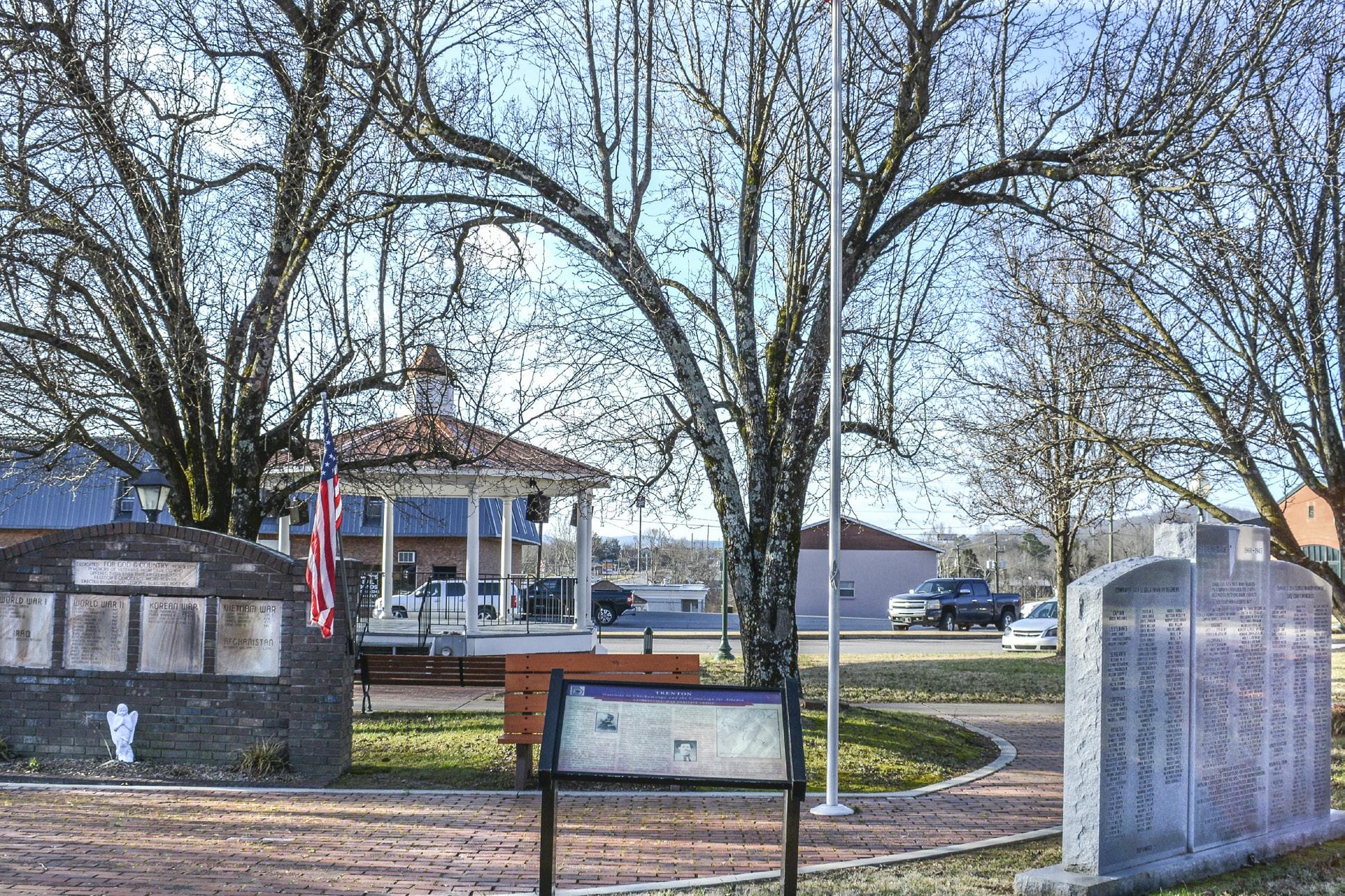
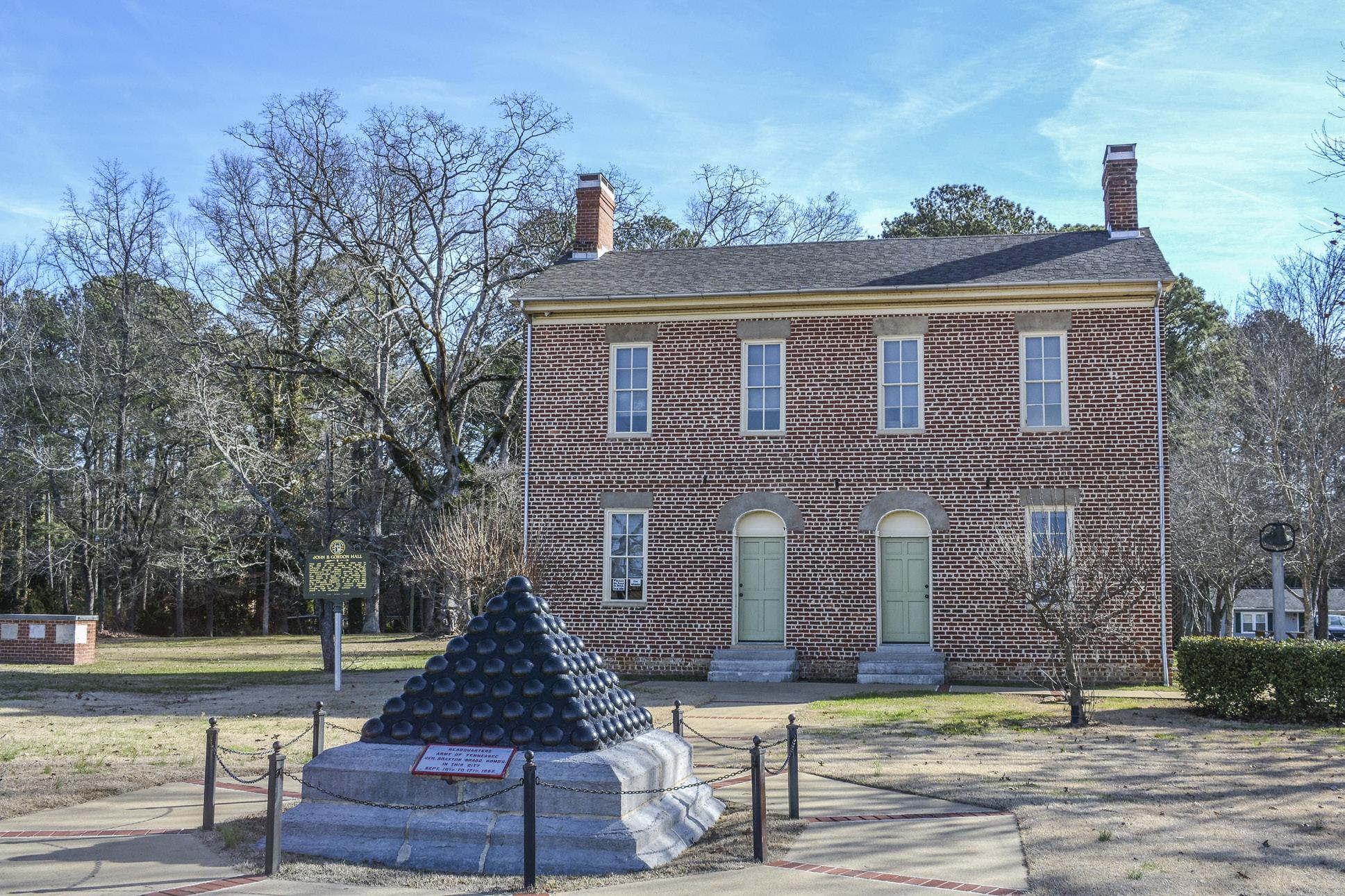

Until late in the Civil War’s third year, Federal forces had made no major incursions into the Confederacy’s third most populous state. Virginia had been a battleground from the start, and from early 1862 Union and Confederate forces had battled in Tennessee. However, except for some small-scale action on the coast, Georgia witnessed no significant fighting through most of 1863. That changed late in that summer, when Federal Maj. Gen. William Rosecrans’s Army of the Cumberland maneuvered into Chattanooga and beyond, forcing Confederate Gen. Braxton Bragg’s Army of Tennessee to retreat into northwest Georgia. Georgia Civil War Heritage Trails has installed a series of interpretive markers that tell the story of this campaign and its climax, the great battle fought in the valley of Chickamauga Creek on September 19 and 20. The trail begins at the GCWHT marker on the town square in Trenton, in the extreme northwestern edge of the state.
On Sept. 4, Federal troops moving from Tennessee and northern Alabama began to pass through Trenton, “with an ultimate goal of capturing
Atlanta.” Rosecrans established his headquarters here and “his men spread over all of Dade County, foraging for food and animals.”
Rosecrans believed that Bragg, having evacuated Chattanooga, was in full retreat. He summoned Maj. Gen. George Thomas, commander of the XIV Corps, for a meeting to discuss “arrangements for the pursuit.” Thomas urged caution and advised Rosecrans “to consolidate his army, then spread over fifty miles.” In the following days the opposing forces marched over the area’s hills and through its valleys, the Federals moving to unite their separated columns, the Confederates trying to catch Rosecrans’s isolated units and defeat the invaders in detail.
Before catching up with the armies, let’s linger in Trenton for a brief paragraph, to see what the future held for the town’s people after Rosecrans and the foragers moved on. Two months later, the Federals returned to burn mills and factories. Many townspeople then “fled to the nearby mountains and hid what belongings they could.” They suffered further when Unionists from northern Alabama and Tennessee raided in and around Trenton. Still, the proConfederate people continued to do their bit. “With most men away at war, the women

and children, with the help of slaves, kept their farms going. They supported themselves plus produced a surplus for the war effort. The women met regularly to roll bandages, make uniforms,
and prepare food to send to the men at the front.”
Rejoining the Army of the Cumberland, we now take a scenic drive eastward over Lookout Mountain through Steven’s Gap. This was the route taken by Thomas’s corps, with the division commanded by Maj. Gen. James Negley leading the column. We descend to Davis Crossroads in McLemore’s Cove, where the GCWHT marker for this location tells of a battle that did not happen.
Negley’s 4,000 men were outnumbered. He faced one Confederate force moving from the east, over Pigeon Mountain. A second force, under Maj. Gen. Thomas Hindman, was ordered by Bragg to move in from the north and trap the Federals in the narrow valley. Hindman hesitated. By the time Hindman
moved, Negley recognized the danger and on Sept. 11 withdrew to the protection of Steven’s Gap. According to the marker’s text, “Timid generalship squandered an opportunity to severely damage the Federal army. General Rosecrans subsequently decided to consolidate his divided army. General Bragg would try again to strike the Federal army before it reunited at Chickamauga, but he had perhaps lost his best chance.” Our next stop is LaFayette,* in the next valley, east of Pigeon Mountain. Bragg headquartered here from Sept. 10 to Sept. 17. According to the marker at Chattooga Academy, the general “worked each day under the shade of a large oak tree in front of the school.” The marker also tells us that Bragg rode over to Davis Crossroads on Sept. 11 to “observe the activities,” i.e.,
20 CivilWarNews.com June 2023 20 June 2023 CivilWarNews.com
Chatooga Academy. (Gould Hagler)
Trenton. (Gould Hagler)
Wartime view of Chattanooga, Tenn. (Library of Congress)
the battle that didn’t happen. The marker does not discuss the controversy over the failure to trap Negley, but Bragg blamed Hindman, and was quite vocal about it.
Except for Bragg’s work under the shady oak, there was no action in LaFayette during the Chickamauga Campaign. “Bragg’s Oak” stood until 1925, when it was destroyed by lightning.
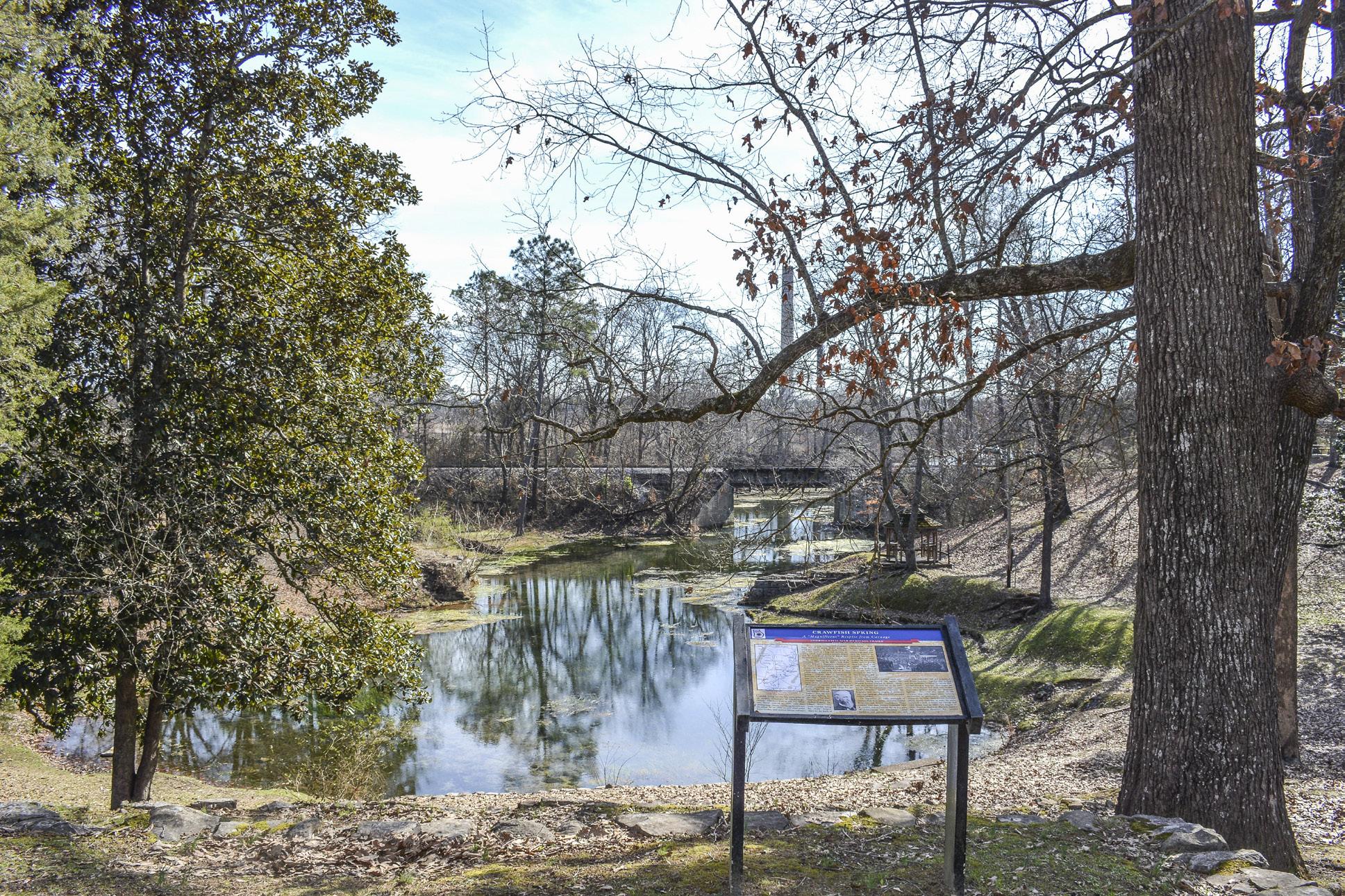
The marker also tells the story of Chattooga Academy, built in 1836. A century later it was renamed in honor of Maj. Gen. John B. Gordon. Gordon lived in this area from an early age, but his martial exploits were in another theater of the Civil War. He served in the Army of Northern Virginia and late in the war rose to corps command.

LaFayette was the site of a minor battle nine months later, during the Atlanta Campaign. In June 1864, Confederate cavalry attacked the small Federal force occupying the town. The attack was initially successful; however, as the Federals were on the verge of surrendering, a mounted infantry regiment rode to their rescue. This was a small affair, of course, nothing like the scale of the battle fought north of LaFayette nine months earlier.
The trail next goes to Crawfish Spring. Before the Battle of Chickamauga, Rosecrans headquartered at the Gordon House across the road from the spring. During the dry summer of 1863, this was one of the few sources of water large enough to quench an army-sized thirst. The Federals established hospitals near the spring. Many sick and wounded, but not all, were evacuated after the battle. Cavalry under Maj. Gen. Joseph
Wheeler captured the hospitals, with twenty wagons of medicine and camp equipage, plus over 1,000 wounded Federal soldiers. The community was incorporated in 1891 and named Chickamauga. The GCWHT marker at the spring tells of an important gathering held 26 years after the battle. “On September 20, 1889, thousands of veterans of both armies…met at Crawfish Spring in a spirit of reconciliation and friendship…. Their reunion furthered efforts already underway to make the entire battlefield a park to honor the courage and valor shown here in 1863. On August 19, 1890,
President Benjamin Harrison signed a bill establishing America’s first national military park.” The trail’s next stop is Lee and Gordon’s Mill, two miles north of Crawfish Spring. Bragg set up headquarters here on Sept. 8 and 9, after evacuating Chattanooga and before moving on to LaFayette. On the 12th and 13th, as the armies jockeyed for position, the mill witnessed heavy skirmishing. The marker explains what occurred here the following week. “As the Battle of Chickamauga raged less than two miles north of the mill on Saturday, September 19th,

Union Brigadier General William H. Lyttle’s Brigade defeated a detachment of Confederate Major General John C. Breckinridge’s Division attempting to capture the nearby ford.”
More fighting occurred here the next day. The marker quotes a Confederate soldier who had a close call with death on Sept. 20 but managed instead to take a dip in the cool waters of Chickamauga Creek. The Alabama cavalryman, fighting dismounted, wrote that “a number of us started to run across the [mill] dam; but an officer shouted ‘Get off! They are going to rake you with grapeshot!,’ and we leaped into the water like so
21 June 2023 21 June 2023 CivilWarNews.com CivilWarNews.com
Crawfish Spring. (Gould Hagler)
Lee and Gordon's Mill. (Gould Hagler)
Lee & Gordon’s Mills Marker. (Georgia Civil War Heritage Trails)
In my April column I mentioned the action at Tunnel Hill on May 7, 1864, when Federal artillery fired on the Confederates’ advance positions near the tunnel. I heard from Terry Orr, who edited and self-published the diary of George Stolp, a soldier in the Illinois battery that fired the opening shots of the Atlanta Campaign.

Mr. Orr was kind enough to send a copy of the book, We Gave Them the Best We Had: The Diary of George A. Stolp, Battery I, 2nd Illinois Light Artillery Stolp wrote that his day started early, with reveille at 3:00 a.m. After breakfast the battery moved forward “three or four miles to the little town of Tunnel Hill, where the Rebs planted two Batt.” Federal infantry drew up in line of battle. The Confederate artillery “opened on us with shell,” Stolp wrote. A few replies from the Illinois guns made things “too warm for them” and caused the Confederates to pull back. With a few shots from Confederate guns and an answer from the Federals, the campaign was underway.
I always appreciate hearing from readers. Thanks, Terry, for your interest and for a copy of your book.
Georgia Civil War Heritage Trails has clearly marked the route with directional signs which lead to the interpretive markers. The organization’s website (https://www. civilwarheritagetrails. org/) also contains each marker’s GPS coordinates. Brochures for the Atlanta Campaign Trail and other driving routes, available from GCWHT, contain much useful information, including excellent maps. I suggest that travelers make use of all three resources. If you use only the GPS coordinates to get from one stop to the next you will be led upon modern roads and miss much of the fun. If you are like me you will miss a sign now and then or take a wrong turn.
When this happens the GPS coordinates will get you back on track. GCWHT’s address is PO Box 1864, Evans, GA 30809.
many bullfrogs.”
For two hours Wheeler’s 6,000 cavalrymen battled Union infantry and cavalry. The Federals were ultimately pushed back to Crawfish Spring, the site of the Federal hospitals, but the delay “enabled most wounded Federal soldiers to be hurriedly moved to safety.”

As we have seen on markers in other locations, the one at Lee and Gordon’s Mill reminds the visitor that armies moved through northwest Georgia more than once. My April column discussed Maj. Gen. James McPherson’s march through Snake Creek Gap in May 1864. The tablet at Lee and Gordon’s Mill tells us that McPherson’s 24,000 men “began their portion of the Atlanta Campaign by massing
at and near the mill.” From there they marched through the gap “southwest of Dalton, forcing Confederates to abandon that city leading to the Battle of Resaca.”
The original mill burned shortly after the war. The building pictured here was built on the same site soon after. The mill continued to operate until 1967.
From Lee and Gordon’s Mill the trail leads north through the Chickamauga and Chattanooga National Military Park. Visitors should stop briefly at the visitors center and spend as much time as possible on the battlefield. There is more here than one can learn in a lifetime.
The last marker on the trail is at McFarland’s Gap. After the two-day battle, the defeated Federals retreated to the safety

of Chattanooga. According to the marker here, by nightfall on Sept. 20 “more than two-thirds of the surviving Federal ‘Army of the Cumberland’ had retreated from the Chickamauga battlefield through this narrow gap in Missionary Ridge.”
The battle had been lost, but with Thomas holding on until late afternoon at Horseshoe Ridge, thousands of men, in varying degrees of disorder, managed to march or stumble through the gap to the open ground on the other side.
“By 3:00 pm,” the marker adds, “the Federal panic waned, as officers continued reorganizing some semblance of an army.” By the next morning “The bulk of the Federal army had reached Rossville safely, and eventually Chattanooga.”
So ends the Chickamauga Campaign Trail. The Army of the Cumberland suffered a serious defeat, with some 16,000 casualties. However, the bulk of the army was safe in Chattanooga. Reinforced, and with a new commander, the Federals in Chattanooga would break out in November, and in the following spring resume their drive into Georgia.
*Pronounced luh FAY it. You are in Georgia.
Gould Hagler is a retired lobbyist living in Dunwoody, Ga. He is a past president of the Atlanta Civil War Round Table and the author of Georgia’s Confederate Monuments: In Honor of a Fallen Nation, published by Mercer University Press in 2014. Hagler speaks frequently on this topic and others related to different aspects of the Civil War and has been a regular contributor to CWN since 2016. His email is gould.hagler@gmail.com.
22 CivilWarNews.com June 2023 22 June 2023 CivilWarNews.com
Valleys and ridges dominate the terrain of much of northwest Georgia. (Gould Hagler)
Part of the Chickamauga battlefield. (Library of Congress)
Wert Wins Unprecedented Third Austin Civil War Round Table Book Prize for Bloody Angle Book
AUSTIN, Texas—Jeffry


Wert has won the 2022 Austin Civil War Round Table’s book prize for his book, The Heart of Hell: The Soldiers’ Struggle for Spotsylvania’s Bloody Angle published by the University of North Carolina Press Wert will be presented with the prize at the June 15 meeting of the Round Table in Austin, Texas. The prize represents the Round Table’s twenty-eighth annual Daniel M. & Marilyn W. Laney Book Prize, with Wert winning an unprecedented three of them.


Wert’s previous winning works were A Brotherhood of Valor (2000) and The Sword of Lincoln, The Army of the Potomac (2006) both from Simon & Schuster. Wert is the author of about a dozen books centered on Civil War history particularly in the eastern theater of operations.
Wert’s winning book for 2022 tells the story of the nearly 24hour battle that occurred on May 12, 1864, for a salient in the Confederate entrenchments called the Mule Shoe. Twentyfour hours later the Mule Shoe would be known as the Bloody Angle for the ferocity of the combat waged under harrowing conditions with the combatants mere feet apart. Wert’s book focuses on the common soldiers and their experiences in the battle instead of the generals.
A. Wilson Greene, a former Laney Prize winner for his book A Campaign of Giants—The Battle for Petersburg, said of the book, “Jeff Wert’s latest masterpiece is the most complete treatment of the fighting on May 12, 1864, at Spotsylvania Court House ever written. Mining an extensive volume of eyewitness accounts, Wert’s narrative puts readers in the midst of Spotsylvania’s bloody trenches, indeed, in the heart of hell.” Chris Mackowski in his review of the book for the magazine America’s Civil War
wrote, “It is to Wert’s credit that he can weave together such a dark story in a way that keeps it moving while also insisting that readers bear witness. It is the soldiers’ struggle, and as Wert reminds us, it is a struggle unlike any other in the war.”

The Laney Prize includes a stipend and is awarded annually by the Austin Civil War Round Table, Inc., for distinguished scholarship and writing on the military or political history of the Civil War.


Established by the membership of the Austin Civil War Round Table, the Prize honors the Laneys for their splendid efforts on behalf of the Austin Civil War Round Table, Inc. and especially, for their many efforts to protect the endangered battlefields of the Civil War.
Among the previous winners of the Laney Prize are William C. Davis for The Cause Lost, Gary Gallagher for The Confederate War, Richard McMurry for Atlanta: 1864, Gordon C. Rhea for Cold Harbor, Craig L. Symonds for Lincoln and His Admirals, Edwin Bearss and J. Parker Hills for Receding Tide, S.C. Gwynne for Rebel Yell, Donald Miller for Vicksburg, H. W. Brands for The Zealot and the Emancipator and Robert Elder for Calhoun: American Heretic


23 June 2023 23 June 2023 CivilWarNews.com CivilWarNews.com Visit our website at: HistoricalPublicationsLLC.com Deadlines for Advertising or Editorial Submissions is the 20th of each month. Stream history on multiple devices Your favorite videos, wherever you want www.historyfix.com Escape into history through movies, documentaries, docudramas, and how-tos! Available on multiple devices Your favorite videos, wherever you want Try a 7 day free trial today and access exclusive content tailored to history buffs!
Jeffry Wert.
the North. White Northerners were often more sympathetic to and accommodating of, white refugees than black refugees.”6
Why the lithographic firm of John H. Bufford elected to publish this print is a mystery. The creator of the print was a relatively obscure artist, Joseph E. Baker. Early lithographic historian Harry Peters thought Baker “a very competent artist and lithographer who did ‘The March of Miles Standish’ for Armstrong, ‘Abraham Lincoln’ and theatrical portraits for Bufford, theatrical portraits for
The Union Refugees

The Graphic War highlights prints and printmakers from the Civil War discussing their meaning and the print maker or artist’s goals.
When first encountering this lithograph, one has to be puzzled by its subject matter and title: The Union Refugees. Surely, this family must not be fleeing the Union! Additionally, they are not runaway slaves leaving the bondage in the Confederacy. In fact, these are southerners, loyal to the Union fleeing to the safety of Federal lines. They are victims, as in every conflict, of the disruption of war. According to author Clayton Butler “White southern Unionists illustrate better than most of their contemporaries the terms of attachment to the Union in nineteenthcentury America,” and the north’s concept of liberty “worth fighting for.” Or, in the case of this lithograph, worth fleeing to.1

Particularly hard hit during the Civil War was the state of Arkansas, although most southern states dealt with Union loyalists within their political boundaries. According to the Encyclopedia of Arkansas, the war’s need for supplies and food “left many citizens utterly destitute, threatened with starvation.” As a result, military suppression of dissidents “turned thousands of Arkansans into refugees who sought the charity of bare sustenance within Union lines or by leaving Arkansas altogether.” Those who fled were no better off than those who stayed. Those left behind “suffered from the depredations of guerilla bands.”2
Even before the War, secession managed to divide Arkansans “with most loyal Unionists residing in the Ozark Mountains in northern Arkansas.” Most families were destitute and could not afford to have their male head of household absent.3 Regardless, once Missouri was rendered “safe” for the Union, “thousands of loyal Union men organized into what ultimately totaled seventeen units of Arkansas regulars that served in the Federal war effort.” After the war, the term refugee applied to another class of citizen, the defeated Confederate who sought refuge in South America.4
Other southern states suffered the loss of “refugees.” Virginia was not much different although it was closer to Union lines. Three classes of refugees fled the state: slaves, Confederates and white Unionists. “White and black Unionists and dissidents who fled to Union lines contributed to the war effort.”5 White refugees “did not necessarily support the Union cause; they primarily did not want to support the Confederate cause by risking their lives on the battlefield. As refugees in the North, white dissidents often fared better than blacks. While blacks were often confined to “contraband camps,” white Northern-born refugees could capitalize upon family connections to secure livelihoods throughout
Forbes, cartoons, etc. He was an apprentice at Bufford’s with J. Foxcroft Cole and Winslow Homer.” He thought Baker’s large portrait of Lincoln taken from life by Springfield Illinois resident Charles Barry was “outstanding.”7
The print was probably published late in the war, although it is undated. The title margin reveals Bufford’s business was at 313 Washington Street in Boston, an address he occupied between 1856 and 1864. Bufford had worked previously for Nathaniel Currier.
24 CivilWarNews.com June 2023 24 June 2023 CivilWarNews.com
The Union Refugee, by J. Bufford, lithographers. (Library of Congress)
June 2023
According to Peters, “Bufford… represents all the perplexities of these early lithographers with their various cross-hookups with artist and publishers. His work is almost invariably good, his sense of the essential in the general field seems to have been second only to that of Currier and Ives, his importance can be seen, and his contribution to Americana is in the very first rank.”8 Further “The house of Bufford was one of the major lithographic establishments of the period, and produced an enormous mass of lithographs of all kinds and degrees of excellence.”9
One can only imagine the fate of the small nuclear family depicted in Baker and Bufford’s poignant lithograph. Did they return home, did they fight for the Union, did they throw in their lot with the Confederacy, did they support emancipation after the war or leave for South America?
Endnotes:
1. Clayton Butler, True Blue: White Unionists in the Deep South During the Civil War and Reconstruction. Baton Rouge: Louisiana State University Press, 2022, 1.
2. “Civil War Refugees,” Encyclopedia of Arkansas, https:// encyclopediaofarkansas.
net/entries/ civil-war-refugees-6389/
3. Ibid.
4. Ibid.
5. “Refugees during the Civil War,” Encyclopedia Virginia, https://encyclopediavirginia. org/entries/refugees-duringthe-civil-war/
6. Ibid.
7. Harry Peters, America on Stone, 87,119.
8. Ibid., 127.
9. Ibid., 118.
After 43 years in the museum field, Cilella devotes his time collecting American prints and maps and writing. His most recent books are Upton’s Regulars: A History of the 121st New York Volunteers in the Civil War (U. Press Kansas, 2009). His two-volume Correspondence of Major General Emory Upton, (U. of Tennessee Press, 2017), received the 2017–2018 American Civil War Museum’s Founders Award for outstanding editing of primary source materials. Upton’s love letters 1868-70, (Till Death Do Us Part) was published in 2020 by the Oklahoma University Press. His current book, the Memoirs of Dewitt Clinton Beckwith of Upton’s Regulars (McFarland Press) was released this Spring.
CivilWarNews.com
Thousands of blackpowder hobbyists and aficionados, from history buffs and re-enactors to modern hunters and competitive shooters, trust Dixie Gun Works for its expertise in all things blackpowder: guns, supplies, and accessories and parts for both reproductions and antique guns. Whether you’re just getting started or you’re a life-long devotee, everything you need is right here in the 2023 DIXIE GUN WORkS’ catalog.

Step into a summer o Events
WALK THE BATTLEFIELDS of history with historical experts who bring the military, human and social stories to life! This summer’s schedule is full of engaging tours, talks and more hosted by the American Battlefield Trust and our partner organizations. Share your interest in history with people who share your passion! Events are geared toward novices and experts alike. We’ll see you on the battlefield!
JUNE 2 TO AUGUST 25
General Lee’s Gettysburg Headquarters Open House
Every Friday and select weekends, 10:00 a.m. – 3:00 p.m. Gettysburg, PA

JUNE 3
Cold Harbor Battle Anniversary Tour
Cold Harbor Visitor Center Mechanicsville, VA
JUNE 17
Park Day at Bulltown Camp
9:00 a.m. – 2:00 p.m. Napier, VA
JUNE 30
Generations Event General Lee’s Headquarters Gettysburg, PA Scan
JULY 22
Buffington Island Memorial Service
11:00 a.m. – 2:00 p.m. Portland, OH
JULY 24–26
Virtual Teacher Institute
Daily, 10:00 a.m. – 5:30 p.m. ET
AUGUST 5–6
260th Battle of Bushy Run Reenactment Jeannette, PA
CivilWarNews.com
25
25
2023
June
With the help of our supporters and partners, the American Battlefield Trust has saved more than 56,000 acres at 150+ sites in 25 states
— creating outdoor classrooms where the past can come alive. For a full schedule of events year-round, visit www.battlefields.org/events.
for
more events & details
The Trust leads an interpretive tour of the Cedar Mountain Battlefield, Culpeper County, Va. COLLEEN CHESLAK-POULTON
DIXIE GUN WORKS, INC. 1412 W. Reelfoot Avenue PO Box 130 Union City, TN 38281 INFO PHONE: (731) 885-0700 FAX: (731) 885-0440 EMAIL: info@dixiegunworks.com VIEW ITEMS AND ORDER ONLINE! www.dixiegunworks.com Major credit cards accepted FOR ORDERS ONLY (800) 238-6785 PROFESSIONAL SERVICE AND EXPERTISE GUARANTEED ORDER TODAY! STILL ONLY $5.00! The tried-and-trusted choice of today’s blackpowder enthusiasts.
Visit our new website at: HistoricalPublicationsLLC.com
Gun Works, Inc.
Sherman’s famous words
We’re all familiar with General Sherman’s famous remark on the hellish nature of war.
On August 11, 1880, Cump was addressing a big crowd of G.A.R. veterans at the fairgrounds of Columbus, Ohio. It was an outdoor event, and it was raining. Sherman escorted President Hayes to the speaker’s stand; the
president delivered a short speech standing under an umbrella. The drenched veterans, however, wanted more. “Sherman! Speech!
Uncle Billy!” they cried.
The general stepped forth. “Fellow soldiers: My speech is not written,” he began; “I came as part escort to the President, and not for the purpose of speaking to you.”
No matter; Cump held forth.
The veterans’ reunion was being covered by a reporter for the Ohio State Journal. He must have gotten to writing quickly, for the Journal carried an article on the event the very next day, August 12. The correspondent had jotted down what he thought were the general’s words, for the Journal published what looked like Sherman’s prepared text. Included, of course, was this: “There is many a boy here to-day who looks on war as all glory, but, boys, it is all hell.”1
There’s another Shermanism that’s harder to document.
For three weeks after Confederates abandoned Atlanta,
Gen. John B. Hood’s Army of Tennessee lay encamped at Palmetto, twenty-five miles southwest of Atlanta. Even after the demoralizing loss of the city, Hood’s army remained strong. Returns for September 20 showed 47,431 officers and men present for duty.2

But what to do with it? Sherman’s much larger force rested comfortably in Atlanta’s fortifications and could not be assailed. For Hood to remain idle would further dishearten the men and provoke desertion. The only alternative—Hood’s strategic problem was that he had so few of them—was to launch an offensive campaign into north Georgia and perhaps lure the Yankees into an open-field fight. If they didn’t cooperate, Hood could move into north Alabama, maybe Tennessee.
On September 22, Hood announced his idea for an advance in a telegram to General Bragg, President Davis’ advisor. Three days later, when the president visited the army at Palmetto, Hood and Davis discussed the forward movement. The president wired Bragg in Richmond and informed him of Hood’s proposed raid. Bragg objected, though, doubtless recalling his earlier failure in Kentucky: “Raids are injurious to our troops and unprofitable in results.” Undaunted, Davis then

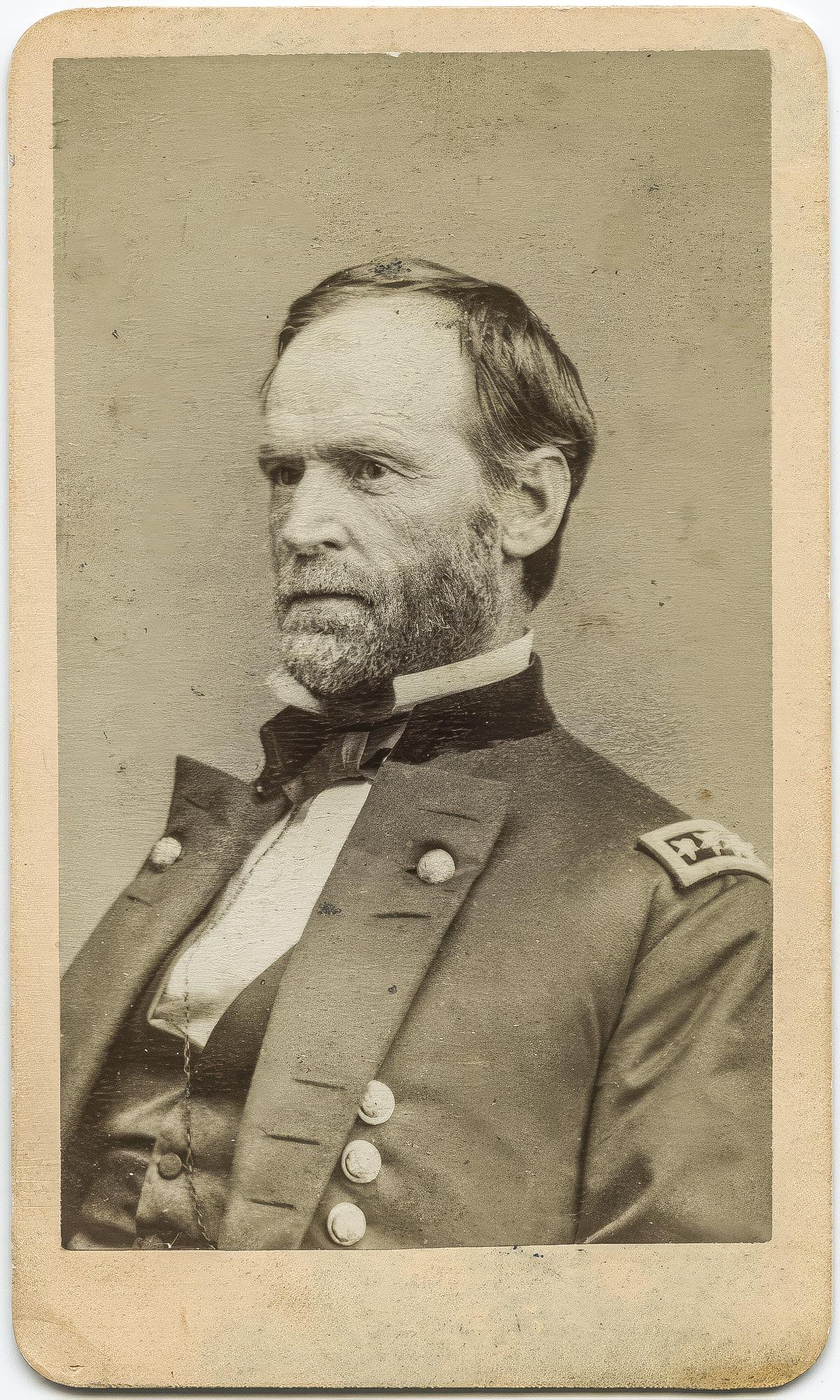

26 CivilWarNews.com June 2023 26 June 2023 CivilWarNews.com
Gen. William T. Sherman on horseback at Federal Fort No. 7 in Atlanta, Ga. (Library of Congress)
traveled to Montgomery and let Dick Taylor in on the plan. (Taylor didn’t like it either.)3
Hood got his army marching north on September 29. Sherman picked up quickly on the Rebels’ move and warned Federal garrison commanders at Rome and Allatoona. Sherman himself followed with several infantry corps. Because Hood’s troops had cut the telegraph, Sherman’s signalmen had to wig-wag the commander at Allatoona, Brig. Gen John M. Corse: “General Sherman says hold fast. We are coming.”

…except that he wasn’t. When, on October 5, Confederate Maj. Gen. Samuel G. French’s division, 3,200 strong, attacked Corse’s garrison of 2,000, they were repulsed in a 3 1/2-hour fight.4
Sherman was at Kennesaw Mountain, fourteen miles away.5
As Sherman’s biographer John Marszalek writes, the general “supposedly signaled ‘Hold the fort! For I am coming’” (italics added). He notes also that Sherman never recalled sending such a message, though conceding, “he probably said something like that.6

Somehow the story got to a Northern hymn writer, Philip Bliss (1838–1876), who was a contemporary of fellow hymnwriter Ira Sankey and a friend of Chicago preacher D. L Moody. In 1870 he composed “Hold the Fort” with this chorus: “Hold the fort, for I am coming,/Jesus signals still,/ Wave the answer back to heaven,--/By thy grace, we will.”
So by the composer’s magical hand, William T. Sherman metaphorically becomes, well, Jesus. Cump, ever the egotist, would be smiling. In 1887 he joked that even though he couldn’t remember saying “hold the fort,” he conceded, “It makes little difference and we had better allow Moody and Sanky’s hymn of ‘Hold the Fort, for I am Coming’ to stand uncontradicted.”7
Sherman even jumbled the famous hymn’s composer. It was Philip Bliss, not Sankey and Moody, who musically enshrined the conqueror of Atlanta.
Music, though, can get you in trouble. I remember, a few decades ago, a Democratic presidential candidate coming to Georgia. At a campaign rally, his band director blundered
by playing a tune he thought would play well with the local constituency: “While We Were Marching Through Georgia.”
White Southerners took offense: we remembered this was an air centered on Sherman’s infamous march through our state.
The bandleader was so informed, and the tune was dropped from the group’s repertoire.
Endnotes
1. Lloyd Lewis, Sherman: Fighting Prophet (New
York: Harcourt, Brace & World, 1932), 635-37.
2. Stephen Davis, Into Tennessee and Failure: John Bell Hood (Macon: Mercer University Press, 2020), 30.

3. Ibid., 44-47, 68-69.
4. Brad Butkovich, The Battle of Allatoona Pass (Charleston: History Press, 2014), 95-132 passim.
5. John F. Marszalek, Sherman: A Soldier’s Passion for Order (New York: Free Press, 1993),
291.
6. Ibid., 291.
7. Ibid., 291-92.
Stephen Davis of Atlanta has been a Civil Warrior since the fourth grade. At Margaret Mitchell Elementary, in the school auditorium hung the oil painting of Vivien Leigh as the imperious Scarlett O’Hara that Selznick commissioned for his famous film.
Some years back, when visiting Sherman’s homeplace in Lancaster, Ohio, his host (Dave
Roth of Blue & Gray) introduced Steve as visiting from the city that Sherman burned. The horrified docent stammered, “Should I call the police?”
Note: “Cump,” by the way, was Sherman’s nickname from boyhood. In the first edition of Historical Times Illustrated Encyclopedia of the Civil War (1986), the biographical entry for Sherman contains this slip: “Sherman, called ‘Chump’ by his friends....”


The typo has been corrected, but we Southerners delight in the miscue.
February
27 June 2023 27 June 2023 CivilWarNews.com CivilWarNews.com
Eliza Frances Andrews (1840–1931) received a strong education and was a successful writer and educator. Her War-Time Journal of a Georgia Girl surely ranks among the most observant and intelligent wartime memoirs by a Southern woman.
Edited with commentary by Stephen Davis, I Thank the Lord I Am Not a Yankee includes selections of her wartime and postwar journals which are most expressive of her Confederate patriotism and Southern pride.
“I Thank the Lord I Am Not a Yankee...” www.mupress.org 866-895-1472 toll-free www.mupress.org
2023 • $35.00, hardback Stephen Davis is author of ten books on the Civil War, most of which treat the Atlanta Campaign. His two recent volumes on Confederate General John Bell Hood have won several prizes, including the Fletcher Pratt Award of the New York CWRT.
Subscribe online at CivilWarNews.com
www.emergingcivilwar.com
From the Editor
Most people assume I teach history at St. Bonaventure University, which I’ve been proud to call my academic home for twenty-three years. I’m actually a writing professor, though, who has come to the Civil War “sideways.” As a writer, I happen to write about the Civil War, which is how my two avocations intersect.
As a writer, I’m fascinated by good stories, and the Civil War has no shortage of them. (The war is, in fact, our great national story.) I love language—both the craft and the art of it—and I place a huge premium on not just factual and technical accuracy but on readability. After all, I
want to share these stories, so I want people to want to read them.
It’s within this context that I recently made my first trip to England thanks to the kind invitation of the American Civil War Roundtable of the United Kingdom. My friend Frank O’Reilly I and spoke at their annual conference, focused on the Overland Campaign. I have visited some wonderful roundtables over the years, but the members of the U.K. Roundtable were all deeply engaged in discussion and highly knowledgeable. It was as rich an intellectual environment as I’ve experienced in a long while. It was a privilege to participate in.
I gave myself a few extra days prior to the conference to do some sightseeing, and Darren Rawlings of The American Civil War and U.K. History page was kind enough to serve as my guide. I absorbed a tremendous amount of fascinating history as we toured, but my main objectives were literary, not historical. I wanted to visit the graves of the poets in Westminster Abbey. I wanted to visit Stratford-upon-Avon and go to Shakespeare’s home. I wanted to have a drink at the pub where J. R. R. Tolkien and C. S. Lewis and their fellow Inklings once shared ideas. The trip took on the feel of a pilgrimage.
Most moving for me was my visit to Shakespeare’s tomb in

Holy Trinity Church. I savor Shakespeare’s plays and can still recite lines I once learned for performances. Unexpectedly, I choked up as stood there, caught off guard by the emotional power of fulfilling a lifelong dream to pay my respects to a writer I admired so much.
I’ve returned stateside inspired, my writing energies renewed. As we approach the spring “battlefield season,” where so many of us finally get to do some battlefield tromping and get in touch again with the landscapes that mean so much to us as students of the Civil War, my hope for you is that you, likewise, find renewed inspiration and meaning.
—Chris Mackowski, Ph.D. Editor-in-Chief, Emerging Civil War
Ninth Annual Emerging Civil War Symposium at Stevenson Ridge
We hope to see you this summer for the 9th Annual Emerging Civil War Symposium at Stevenson Ridge, August 4-6 in Spotsylvania, Virginia. Our theme is “1863: The Great Task Before Us” with keynote speaker Timothy B. Smith. We have a line-up of ten speakers plus a great tour of part of the Chancellorsville battlefield.

Tickets for the full weekend at $250. For details, or to snag one of those few remaining tickets, visit: https://emergingcivilwar.com/ ecw_event/2023-symposium/.
ECW Bookshelf
Earlier this month, ECW authors Jon-Erik Gilot and Kevin Pawlak released John Brown’s Raid: Harpers Ferry and the Coming of the Civil War, the latest volume in the Emerging Civil

War Series published by Savas Beatie (https://www.savasbeatie. com/john-browns-raid-harpersferry-and-the-coming-of-thecivil-war-october-16-18-1859)
John Brown, the infamous fighter on the Kansas plains and detester of slavery, led a band of nineteen men on a desperate nighttime raid that targeted the Federal arsenal at Harpers Ferry. There, they planned to begin a war to end slavery in the United States.
But after 36 tumultuous hours, John Brown’s Raid failed, and Brown himself became a prisoner of the state of Virginia.
Brown’s subsequent trial further divided north and south on the issue of slavery as Brown justified his violent actions to a national audience forced to choose sides
ECW News and Notes
Neil Chatelain recently signed a contract with McFarland and Company for his next book, tentatively titled Treasure and Empire in the Civil War: The Panama Route, the West, and the Campaigns to Control America’s Mineral Wealth. On April 15, he presented for The Historian’s Lounge about his paper “Postwar Identity Crisis of the Confederate Navy’s Officer Corps,” published last year in US Military History Review
Doug Crenshaw has been giving a series of tours on both the Seven Days and the Cold Harbor Campaign. Doug and Drew Gruber will be speaking on May 18 at Hanover Tavern on their new book To Hell or Richmond.
Dwight Hughes and Neil Chatelain teamed up with historian and author (and occasional ECW contributor) John Quarstein to propose a three-paper Naval Civil War panel at the biannual U. S. Naval Academy McMullen Naval History Symposium in Annapolis, the largest gathering of naval historians in the world. Their proposal was accepted for the next symposium in September.
Dwight will speak on “The Naval Civil War in Theaters Near and Far,” an overview of the naval war based on a new ECW Series volume he and Neil are working on. Neil will talk about “Tactical Confederate Naval Evacuations of Military Forces: Two Case Studies in Joint Cooperation,” and John’s presentation addresses “The Fall of Gosport Navy Yard, April 1861.”
On April 15, Jon-Erik Gilot hosted a one-day symposium at the Captain Thomas Espy Post in Carnegie, PA. Lecturers included
Dan Welch, Pete Miele, Hampton Newsome, Dana Shoaf, and Rich Condon, each with an emphasis on the Gettysburg Campaign. The Espy Post hosts a monthly 2nd Saturday Lecture Series in Carnegie (also streamed on Zoom and Facebook), and an annual symposium each April. For more information, please visit the Andrew Carnegie Free Library and Music Hall website: https://carnegiecarnegie.org.
Brian Matthew Jordan spoke to the North Central Texas, Fort Worth, and Dallas Civil War Round Tables in April. He likewise gave a paper at the McCormick Civil War Institute’s spring symposium in Winchester, Virginia, where he got to catch up with fellow ECW historians Jon Tracey and Sarah Kay Bierle. He appeared at the Antietam Institute on April 22.
Chris Kolakowski recently participated in a discussion on the importance of military history for the Consortium of Indo-Pacific Researchers as part of their Vanguard: IndoPacific podcast series. The discussion is available on all popular podcasting platforms. A direct link can be found here: https://podcasters.spotify. com/pod/show/vanguard-indopacific/embed/episodes/Episode20-Importance-of-MilitaryHistory-e22iphu.
Chris Mackowski was selected as the 2023 recipient of the Frank Vandiver Award of Merit, presented each year by the Civil War Roundtable of Houston, Texas.
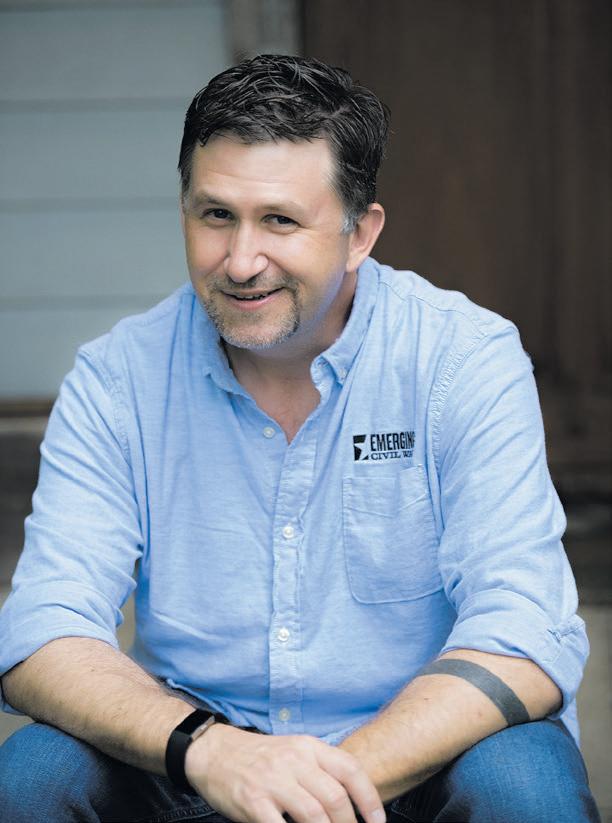
Mackowski also spoke at the American Civil War Roundtable of the U.K.’s annual conference on April 14-16. The conference theme focused on the Overland Campaign, and Chris spoke on the battle of Spotsylvania Court House and the missed opportunities along the North Anna River.
Shrouded Veterans
Frank Jastrzembski offers an update on one of his latest projects through Shrouded Veterans, an organization devoted to getting headstones for Civil War veterans:
A government-issued headstone was recently placed at Colonel Richard Hudson Woolworth’s grave.
A stockbroker and militia officer before the Civil War, Woolworth was appointed major in the 3rd Pennsylvania Reserves on June 21, 1861. Before heading to the Virginia Peninsula, he was made lieutenant colonel of the 4th Pennsylvania Reserves on June 1, 1862.
28 CivilWarNews.com June 2023 28 June 2023 CivilWarNews.com
Chris Mackowski
Chris Mackowski has “a moment” at the grave of William Shakespeare. (Photo by Darren Rawlings)
The latest book in the Emerging Civil War Series looks at one of the triggers of the war.
Woolworth was severely wounded at Charles City Cross Roads on June 30, and on the following day he was captured while lying in the hospital. He remained imprisoned in Richmond until he was paroled on July 17. Thirty days after the battle, portions of Woolworth’s uniform were extracted from his wounds.



In December 1862, he rejoined his regiment and led it at the Battle of Fredericksburg where he was struck by a spent ball and confined to the hospital for two weeks. On December 24, 1862, he was promoted to colonel.


Towards the end of 1863, Lewis Cooper desired to form a business partnership with Woolworth and asked his uncle, Charles Gilpin, to forward the proposition to him. Woolworth turned it down and chose to remain with his men. He replied:

“Dear Uncle:— I duly received thine of the 7th, and am truly grateful to our friend for his kind
and generous offer. I should feel it my duty to accept it under other circumstances; but as I have voluntarily sworn to serve the United States well and truly for three years, I do not feel at liberty to tender my resignation. I think that the officers are as much bound by their oath as the enlisted men, particularly as many of the latter have enlisted through the example of those higher in position. Officers who resign now are not much thought of by those who remain in the service. The remaining ten months will soon slip around, and then, should I be spared, I hope to be with you again. Tell my friend I am very sorry to decline his proposal, and hope I may have an opportunity of expressing my thanks to him personally.”
At the Battle of Cloyd’s Mountain on May 9, 1864, Woolworth was mortally wounded while gallantly leading his men. He was buried on the field beneath a locust tree close

to where he fell. He left behind a widow and three children.
Woolworth’s remains were taken to Philadelphia and buried at Odd Fellows Cemetery. However, they were disinterred and relocated to Lawnview Cemetery in Rockledge, Pennsylvania.


A special thanks to David Callihan for adopting Woolworth’s grave and covering the cemetery’s installation fee.

ECW Multimedia
On the Emerging Civil War Podcast in April:
We hit the trail with Drew Gruber, executive director of Civil War Trails, to talk about some new map projects the Trails have released.
We spoke with historian Dave Powell about his new book, Decisions at Shiloh, part of the University of Tennessee Press’s Command Decisions of the Civil War Series.
We chatted with Jon Tracey about his co-edited hardcover, Civil War Monuments and Memory, part of the Emerging Civil War 10th Anniversary Series.

The Emerging Civil War Podcast is available through Spotify, Apple Podcasts, and wherever fine podcasts are available. You can also subscribe to our podcast through Patreon (https://www.patreon.com/ emergingcivilwar), where we are now also offering exclusive bonus content for subscribers. For as low as $1.99/month, you can help support ECW. Proceeds go
toward defraying the production costs of the podcast.
On the ECW YouTube page:
We continued our exploration of sites around Vicksburg with videos by Kris White and Chris Mackowski, with appearances by Garry Adelman
We spoke with Tim Smith about his upcoming appearance at this summer’s ECW Symposium.
We chatted with Bertram Hayes-Davis, a descendant of Jefferson Davis.
We visited Abraham Lincoln’s statue in London.
We also shared video versions of our podcast interviews with Drew Gruber, Dave Powell, and Jon Tracey.
You Can Help Support Emerging Civil War
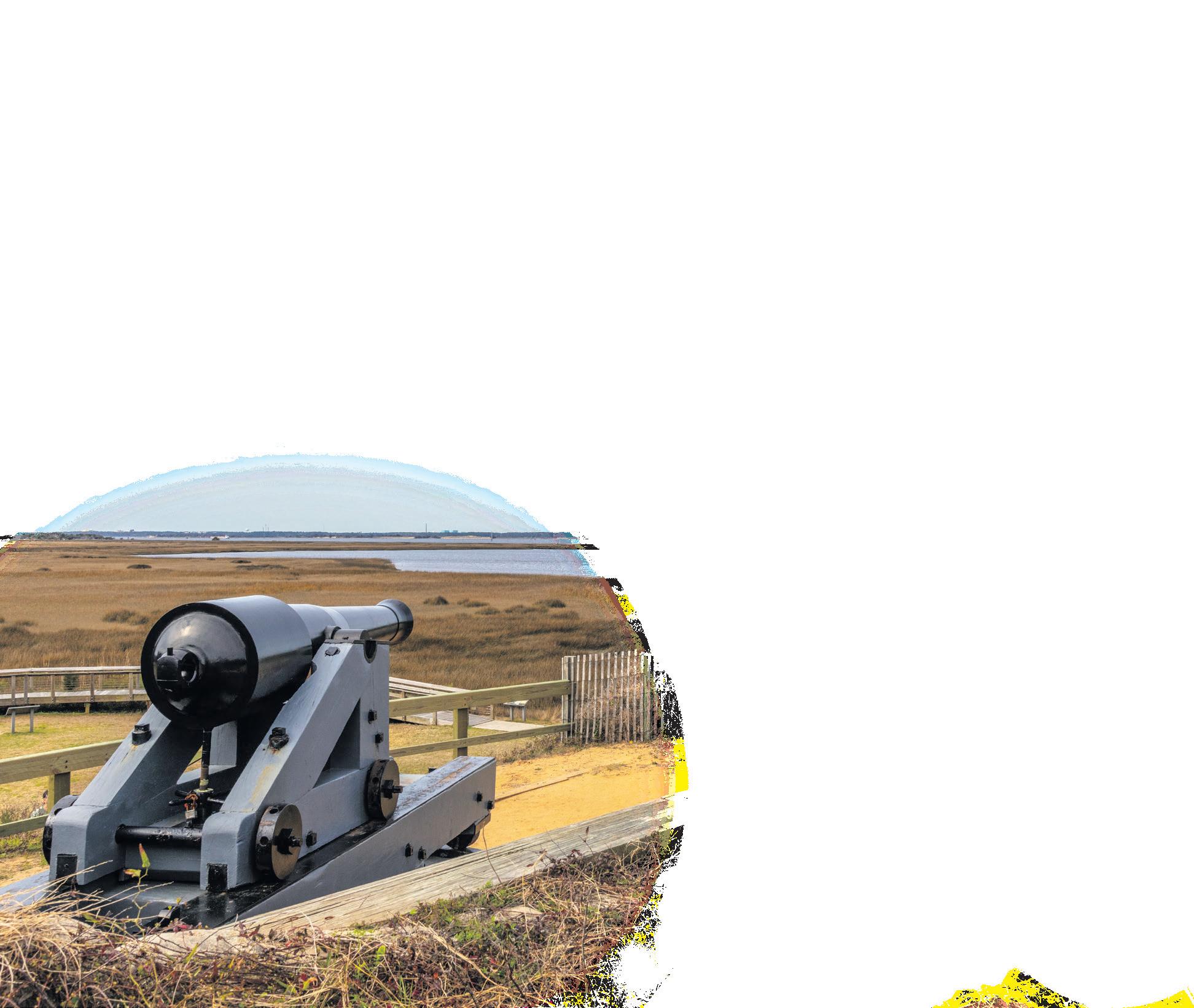
Emerging Civil War is a 501(c)3 not-for-profit organization. If you’re interested in supporting “emerging voices” by making
a tax-deductible donation, you can do so by you can do so by visiting our website: www. emergingcivilwar.com; you can mail us a check at the address below (make checks payable to “Emerging Civil War”); or you can make a gift through PayPal: https://www.paypal. com/donate/?hosted_button_ id=2L46N85FH8VWE
29 June 2023 29 June 2023 CivilWarNews.com CivilWarNews.com Subscribe online at CivilWarNews.com
Dave Powell discussed his new book, “Decisions at Shiloh,” on the Emerging Civil War Podcast.
Col. Richard H. Woolworth (pictured above) was killed at the battle of Cloyd’s Mountain in western Virginia.
Contact Mike at: 910-617-0333 • mike@admci.com Provenance a Must! Fort Fisher items wanted
By Leon Reed
“We had an almost mystical visit to the cemetery. Walked in via the route Lincoln took and visited the soldiers monument plus the now famous rhododendron bush where Lincoln stood to deliver his speech. Then after arcing along to the speakers stand and Lincoln bust behind it, thunder started erupting like an artillery salvo and we barely got to the bus before a surreal downpour overtook the town. Another great memory for our participants.”
(Harold Holzer describing the culminating event of a student visit to Gettysburg.)
What makes a college president within a few months of retirement bring a group of 20 college students for a 2 ½ day visit to Gettysburg? Then what makes



The lasting appeal of Gettysburg
a group of college students who have no course requirement or assignment give up several precious days of Spring Break to make that trip? Why does someone with funds to “take students to historic places” pick Gettysburg first? What is it about Gettysburg, 160 years after the battle and speech, that continues to attract pilgrims, historians, student groups, and families?
Hunter College president Jennifer Raab provided some ideas. “The trip was made possible by a generous gift from Dick Gilder. He made a fortune on Wall Street and decided to invest in better understanding of our history. Toward the end of his life, he came up with and idea of taking students into the field to
see where our history actually happened.” This wasn’t a “class trip.” “It’s not about courses, or grades, or credit,” Raab said. “The students are volunteers; they saw something in this trip that made them willing to give up spring break.”
Why Gettysburg first? “It’s been on my bucket list for a long time,” said Raab. “It’s about our history, our ideals, our democracy, who we are. I tell our students it’s about our ideals and our democracy, about the struggle to preserve it. If you don’t understand that, then we as a people are doomed.”
The students had a daunting schedule during their visit; one that wouldn’t necessarily be available to every visiting group: a private after-hours visit to the Cyclorama, dinner at the Visitor Center, and a crowd-free, after closing hour to wander through the museum; a private look at some relics of the Lincoln assassination on the 158th anniversary of
his fatal wounding; a tour of Spangler Farm; a whirlwind three hours plus battlefield tour led by Gettysburg College professor
Peter Carmichael; a pre-opening private tour of the new Adams County Historical Society; and, on their last morning, a stormdefying visit to the National Cemetery.
The students were a diverse group, including students born in the United States and many other countries, sophomores through seniors, and both history majors and non-majors. At least seven planned to become history teachers after graduation.
A few random comments reflected the students’ individual thoughts. “My dad was a history fanatic and he brought me when I was little. I didn’t pay much attention and now I want to learn about it. … Lincoln redefined our whole national purpose here … I wanted to get out of New York City … So many sacrificed so much. … We can’t understand the

present without understanding the past … I wanted to understand why these men were ready to die in battle and what they fought for … I don’t know much about history and I want to know more. … It’s heart-breaking. There were so many casualties and it could have been avoided. … There were so many heroes. … I wanted to see where it happened, to walk over the ground where these men struggled. … It’s the greatest battle in our history. … Seeing where it happened is so important for understanding it.”
Harold Holzer, head of the college’s Eleanor Roosevelt Center and a leading Lincoln scholar, concluded : “I think our Hunter College students left Gettysburg convinced of the power of place to bring history alive. Seeing the spots where Pickett and Pettigrew launched their fateful charge, where photographers encountered dead bodies strewn among boulders near Little Round Top, where Lincoln delivered his famous address, and where ‘our own’ Franklin Roosevelt dedicated the peace memorial on the 75th anniversary of the battle, made the ongoing contest over freedom and memory more vivid, important, and urgent than ever. We are so grateful to the Gettysburg Foundation, the new Beyond the Battle Museum, and all the professionals who hosted us. Above all, kepis off to Prof. Peter Carmichael for the best battlefield tour ever, Unforgettable!”
30 CivilWarNews.com June 2023 30 June 2023 CivilWarNews.com
Peter Carmichael’s tour of the battlefield. (Photo by Leon Reed)
Group photo of the students. (Photo by Leon Reed)
Students silhouetted at Cyclorama. (Photo by Peter Sclafini)







31 June 2023 31 June 2023 CivilWarNews.com CivilWarNews.com Want to Advertise in Civil War News? call 800-777-1862 or email us at ads@civilwarnews.com Visit our website at CivilWarNews.com and it will take you to HistoricalPublicationsLLC.com. The calendar is online and an updated before the print issue. To submit an event send it to: ads@civilwarnews.com www.CollegeHillArsenal.com Tim Prince College Hill Arsenal PO Box 178204 Nashville, TN 37217 615-972-2418 www.CollegeHillArsenal.com
Bennett Place State Historic Site – General Johnston’s Surrender
 By Bob Ruegsegger
By Bob Ruegsegger
General Joseph E. Johnston and General William T. Sherman met in James Bennett’s farmhouse parlor to negotiate the surrender of Johnston’s Confederate forces. The parley would go down in history as the largest surrender of soldiers during the Civil War.

Today, Bennett Place exists as a North Carolina State Historic Site. It appears, in essence, as it did on April 17, 1865, when the two opposing generals met privately in the parlor to discuss the terms of surrender.


“Prior to Johnston and Sherman meeting here, Sherman had just received a telegram in Raleigh notifying him of Lincoln’s assassination,” said Matthew Gregg, site manager at Bennett Place. “That might have been one of the reasons that Sherman wanted to meet with Johnston in private.”

Nobody in the area knew of President Lincoln’s assassination. Sherman and the telegraph operator in Raleigh were the only ones who knew of Lincoln’s death when Sherman and Johnson entered the Bennett house.
“The first thing Sherman did
was pull out the telegram and hand it to Johnston. Johnston read it,” said Gregg. “Johnston exclaimed that the worst possible calamity has happened. That was what was going on that first day.”
The news of Lincoln’s assassination had arrived.
Johnston and Sherman were trying to bring about the end of this war specifically between the two opposing armies of their respective commands.
It was sheer coincidence that Bennett Place was chosen as the surrender site. It was simply in the right place at the right time.
Johnston was in Greensboro, and Sherman left Raleigh by train and rode down to Durham Station. They planned to meet about midday along the Hillsborough Road on April 17th.
General Sherman was escorted by the 9th Pennsylvania Cavalry led by Judson Kilpatrick. General Johnston was accompanied by the South Carolina Cavalry led by Wade Hampton. Sherman was headed west. Johnston was traveling east from Hillsborough to the Raleigh road.
Sherman and Johnston met each other. Although they were
both West Point graduates, this was the first time that they had personally met. Sherman asked Johnston if he knows of a place where they can sit down together privately. Johnston told Sherman about a farmhouse nearby that might prove suitable for negotiating an armistice.
“They turned around and they stopped right here at the Bennett farm,” said Gregg. “James Bennett ended up coming out of the house. The generals politely asked James Bennett if they could use his house for a private meeting,” he said. “James agreed to it.”

While the generals met in the farmhouse parlor, James Bennett took his wife Nancy and their daughter Eliza and their grandchild Alphonso Duke to another building. Bennett and his family stayed in the kitchen house while the generals occupied their residence for the parley.
Inside the farmhouse the commanders were involved in delicate negotiations. Outside on the property, Kilpatrick and Hampton were engaged in a heated confrontation.
“I’ve also read where the altercation gets bad enough that Johnston and Sherman have to step out of the house,” said Gregg. “They had to come out here and actually separate the two cavalry officers.”
Gregg imagines that the generals might have been “pretty irate” with their cavalry commanders. While the generals were in the farmhouse attempting to bring an end to the war, their cavalrymen were outside trying to start up hostilities again.
The terms Sherman and Johnston agreed to on April 18th were drafted by Sherman. The terms were conditional, contingent upon approval from Washington. As drawn up, the terms exceeded Sherman’s authority. Sherman’s negotiations were partly involved in civil matters, the politics of reconstruction.
Secretary of War Stanton was displeased. Sherman was only authorized to deal with military matters. Stanton ordered Grant down to Raleigh to relieve Sherman of command and end hostility with Johnston’s forces.
“That didn’t happen,” noted Gregg. “Grant came down here (Raleigh area) and told Sherman to try and fix this issue since they were on the cusp of finally bringing this war to a complete close.”
Contact was reestablished between the two generals. They agreed to meet back at the Bennett Place on April 26th. Johnston surrendered his command. No civilian politics were involved whatsoever, just military matters. “Johnston’s surrender actually encompassed North Carolina troops, South Carolina, Georgia, and Florida,” said Gregg. “Technically, he surrendered Confederate troops in North Carolina, South Carolina, Georgia, and Florida. It ended up covering 89,270 troops,” he said. “In comparison, the troops surrendered here numbered three times those surrendered at Appomattox.”
32 CivilWarNews.com June 2023 32 June 2023 CivilWarNews.com
Matthew Gregg is the site manager at Bennett Place Historical Site. He has nine years of experience as an interpreter with North Carolina Historical Sites, Department of Cultural Resources.
Overview of buildings on the Bennett Place Historical Site.
Bennett Farm house with the original chimney.
This historical highway marker offers a summation of the historical significance of Bennett Place. (Photos by Bob Ruegsegger)
This signage offers an overview of the notable general officers who met at the Bennett site in April 1865.
This site sign marks the entrance to Bennett Place Historic Site.
Sherman and Johnston ended up forming a friendship. Gregg suspects that their friendship developed from the time they spent together on the Bennett property. For three days, the generals were engaged for hours in negotiation and additional hours walking the Bennett property together.

The two generals corresponded regularly while writing their memoirs. Johnston served as an honorary pall bearer at Sherman’s funeral. Out of respect, Johnston removed his hat at Sherman’s funeral. When one of Johnston’s associates suggested that Johnston cover his head to avoid catching a cold, Johnston responded that, if Sherman was in his place, he’d be doing the same thing out of respect for him. Unfortunately, Johnston passed away from pneumonia about a month after Sherman’s funeral. Their friendship and respect for each other had endured until their deaths.
In the early 20th century, local officials wanted to preserve Bennett Place as it was for its historical significance. The
property had been abandoned for about 30 years. It was still owned by the family.
After 30 years of neglect, the house was literally falling apart. Samuel Morgan acquired the property with the intention of restoring the site to what it once was, the site of the largest surrender of the Civil War, but Morgan passed away soon after he acquired the site.


On October 12, 1921, the dilapidated Bennett house mysteriously burned to the ground. The fire was attributed by some to hobos traveling by rail who needed a temporary place to stay. There was no clear evidence of how the blaze started. The only part of the original house that remains was the fireplace and chimney.
“Samuel Morgan’s family, especially Sarah Morgan, wanted to carry out the wishes of her late husband, and the Morgan family started moving to preserve the site,” said Gregg. “They contacted local and state officials to get this place memorialized,” he said. “That came about by erecting the Unity Monument on October 12, 1923. It was erected exactly two years from the day the house burnt down.”
The Unity Monument symbolizes the reunification of the country after four years of bloody fighting. It was officially unveiled on November 8, 1923. An inscribed tablet summarizes the historically significant events that occurred on this revered ground in April 1865. A single crosspiece connects a pair of Corinthian columns signifying the reunification of the South and the North.
“Whenever visitors come to Bennett Place, they’re going to be stepping into a period piece. The house we actually have out here is the Proctor House. The house was originally located in Durham,” said Gregg.
The Bennett Place Historical Society wanted to restore the property to what it once was in time for the centennial celebration (1965). The Proctor House was disassembled and transported to the Bennett site.
The reconstruction process began.

“Even though they’re not stepping into the Bennett home, our guests are stepping into a period piece. It is a home from the same time period,” said Gregg. “The inside of the house is designed exactly as the original Bennett House was.”

Sketches of the Bennett parlor made by Theodore Davis on April 18, 1865, formed the basis for interpreting the parlor as it was when Johnston and Sherman were negotiating the surrender. The terms of surrender at Bennett Place and Appomattox were almost identical,” said Gregg. “The soldiers were able to retain their sidearms. The horses were retained by the troops as well,” he said. “The Confederate arms and munitions were confiscated by the Federals.”
While General Grant never actually stepped foot on the Bennett property, he received the amended documents of surrender. Grant reviewed the terms and officially approved them. He took the surrender documents with him to Washington.
During a recent staff visit to Appomattox, Bennett Place Site Manager Matthew Gregg learned something very surprising from talking with Pat Schroeder, Appomattox park historian.
“Bennett Place was designated as an historic park on November 8, 1923. At the dedication of the Unity Monument, the Morgan family transferred the park to the state. From what Schroeder was telling me, Appomattox wasn’t actually a part of the National Park Service until 1940.”
Bob Ruegsegger is an American by birth and a Virginian. His assignments frequently take him to historic sites throughout Virginia, the Mid-Atlantic, and the Southeast. His favorite haunts include sites within Virginia’s Historic Triangle— Jamestown, Yorktown, and Williamsburg. Bob served briefly in the U.S. Navy. He is a retired educator and has been an active newspaper journalist for the last twenty years.

33 June 2023 33 June 2023 CivilWarNews.com CivilWarNews.com
153rd Anniversary Historic interpreters gathered at Bennett Place to commemorate the 153rd anniversary of General Johnston’s surrender to General Sherman in North Carolina. (Photo courtesy of Kevin Odom –On the Wild Side Photography – via Bennett Place Historical Site).
This stone bandstand-gazebo was built by the Durham Rotary Club in 1916. It was moved to this location to complement the memorial park.
Interior of the Bennett kitchen.
These colorful signs identify Civil War sites throughout North Carolina.
The family stored butter, cream, and cheese in the dairy. The clay floor helped the building to stay cooler than outside temperatures.
Ewer and basin stand ready in the kitchen.
Civil War News book reviews provide our readers with timely analysis of the latest and most significant Civil War research and scholarship. Contact email: BookReviews@CivilWarNews.com.



XV Corps in Georgia and the Carolinas
Soldiers From ExperienceThe Forging of Sherman’s Fifteenth Army Corps 1862–1863. Eric Michael Burke. Maps, Endnotes, Bibliography, Index. 338 pages. Louisiana State University Press, www.lsupress. org. $50.00

Reviewed by Tom
 Elmore
Elmore
Civil War Artillery Book
392 page, full-color book, Civil War Artillery Projectiles – The Half Shell Book. For more information and how to order visit the website www. ArtillerymanMagazine.com or call 800-777-1862.
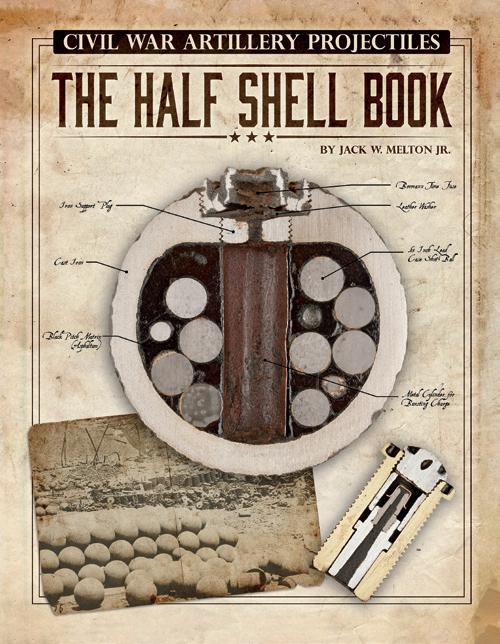
$89.95 + $10 media mail for the standard edition.
GEORGIA’S CONFEDERATE MONUMENTS In Honor of a Fallen Nation

Gould B. Hagler, Jr.
This unique work contains a complete photographic record of Georgia’s memorials to the Confederacy, a full transcription of the words engraved upon them, and carefully-researched information about the monuments and the organizations which built them. These works of art and their eloquent inscriptions express a nation’s profound grief, praise the soldiers’ bravery and patriotism, and pay homage to the cause for which they fought.
The XV U.S. Army Corps was one of the north’s finest units in the American Civil War. Established in 1862, it was attached for the duration of the war to the Army of the Tennessee. Despite having Maj. Gen. Ulysses S. Grant and Maj. Gen. William T. Sherman as its first two commanders, the corps went through a lot of growing pains during its early days.
Author Burke holds a PhD in
History from the University of North Carolina and is a historian at the U.S. Army Combined Arms Center. In this book he focuses on the corps’ beginnings. Most men in the corps were “westerners,” what we would today call “midwesterners.” They were not spit and polish like their eastern counterparts. Many were bluecollar workers, whose skills proved to be a major asset over time, especially on engineering projects. Some regiments were influenced by the Zouave style of fighting of rapid movement and firing.
As one can imagine, life was often hard when the unit was stationed in Louisiana and Mississippi as Grant tried to capture Vicksburg. Food was sometimes scarce, the weather was unbearable, and they often had trouble finding drinkable water. Disease was a constant problem. The corps lost a staggering 5,000 men from illness alone between January and April of 1863, more than they had lost in battle up to that point.
But the corps learned from their experiences and by the time Maj. Gen. Francis Blair, Jr. took command during the Chattanooga, Tenn., Campaign, the corps had evolved into a veteran corps, famous as the “Diabolical 15th.”
While the focus of the book is on how the XV Corps became an elite fighting force, it also shows how Sherman evolved
as well. The Sherman who first took command of the corps was an aggressive fighter, not the cautious general he was by war’s end. This resulted in heavy losses and repulses early on that eventually resulted in Sherman and his men developing a tendency to avoid frontal assaults by all possible means. Sherman’s command of the corps only further strengthened his close bond with Grant which ultimately led to Sherman commanding the Army of the Tennessee and the Military Division of the Mississippi.
Though the writing and the research is quite good, the book would have been helped if the author had spent a little more time on what was going on behind the scenes in terms of organization and personal conflicts among Sherman’s top generals and less on the battles. Some background on the major figures within the corps would have been useful. Also, photos and illustrations would have been nice.
Nonetheless, this book a refreshing change since most of what has been written about the XV Corps deals with their actions in Georgia and the Carolinas. Anyone with a strong interest in the western theatre of the war will enjoy this book.
Tom Elmore wrote about the XV Corps in his 2012 book A Carnival of Destruction – Sherman’s Invasion of South Carolina.
Deadlines for Advertising or Editorial Submissions is the 20th of each month.
l34 CivilWarNews.com June 2023 34 June 2023 CivilWarNews.com
www.mupress.org 866-895-1472 toll-free
lPromoters of Quality Shows for Shooters, Collectors, Civil War and Militaria Enthusiasts Mike Kent and Associates, LLC • PO Box 685 • Monroe, GA 30655 (770) 630-7296 • Mike@MKShows.com • www.MKShows.com December 2 & 3, 2023 Middle TN (Franklin) Civil War Show
Mike@MKShows.com • www.MKShows.com Admission Coupon To Any MKShows Event $1 Off 770-630-7296
Want to Advertise in Civil War News? call 800-777-1862 or email us at ads@civilwarnews.com
Years of Research Pays Off
Small but Important Riots: The Cavalry Battles of Aldie, Middleburg,
 and
By Robert F. O’Neill. Illustrated, maps, notes, appendices, bibliography, index, 319 pp. Potomac Books. Potomacbooksinc.com 2023, $36.95.
and
By Robert F. O’Neill. Illustrated, maps, notes, appendices, bibliography, index, 319 pp. Potomac Books. Potomacbooksinc.com 2023, $36.95.
Upperville.
artillery, directed Pleasonton to undertake reconnaissance toward Harper’s Ferry, Winchester, and Berryville.
Significant History of Southern Women in Virginia
Reviewed by Jeffry D. Wert
When the Yankees entered Aldie, they encountered Stuart’s Rebel horsemen, whose duty was to protect the Blue Ridge gaps, shielding their comrades moving in the Shenandoah Valley. For Stuart and his troopers, their tactics meant giving ground slowly while buying time. The engagement at Aldie followed this pattern, with the Confederates defending the Ashby Gap and Snickerville pikes west of the village. Mounted and dismounted fighting characterized the action. In the end, Stuart’s men retired west to Middleburg while the Yankees held Aldie.
The Weaker Sex in War: Gender and Nationalism in Civil War Virginia. By Kristen Brill. Photos, notes, index, 206 pp., 2022. University of Virginia Press, www.upress.virginia.edu. $35.

Reviewed by Jonathan A. Noyalas
A significant aspect of the six-week Gettysburg Campaign was the operations of the opposing cavalry commands. Engagements between mounted troops and/or infantrymen began within a week of the campaign’s outset at Brandy Station on June 9 and at its end on a Maryland bluff above the Potomac River on July 14. These cavalry operations were highlighted by Jeb Stuart’s controversial “ride” and the Federal cavalry’s continuing emergence as a fighting force.
As the Army of Northern Virginia and the Army of the Potomac moved north along parallel routes toward Gettysburg, their mounted units performed light cavalry’s traditional roles of reconnaissance and screening. In the campaign’s early days, the Army of the Potomac’s commander Joseph Hooker ordered his cavalry chief, Alfred Pleasonton, to locate the Confederates. In turn, Robert E. Lee directed Stuart to protect the army’s flank and screen its movements. These opposing objectives resulted initially in three clashes in Loudoun Valley between the Blue Ridge Mountains to the west and the Bull Run Mountains to the east.
The first engagement came June 17 at Aldie, Va., when Pleasonton pushed his troopers west on Hooker’s instructions. The Union commander, wanting to resolve conflicting reports on the whereabouts of Lee’s infantry and
The Federal movements continued toward the Blue Ridge, resulting in engagements at Middleburg on June 19, and at Upperville on June 21. With each clash, the fighting involved more units and the combat increased in duration and intensity. Stuart’s veterans ultimately accomplished their mission although Pleasonton’s horse soldiers fought with a prowess and tenacity similar to Brandy Station.
This fine book, written by one of our foremost historians on cavalry operations in the East, is the best work on Aldie, Middleburg, and Upperville. The author, Robert F. O’Neill, has devoted years of study to the three battles; it is evident in these pages. The book is characterized by impeccable research, astute profiles of regimental, brigade, and division commanders, graphic combat details, and sound judgment of the engagements’ importance. The well-written narrative is graced by many clear maps prepared by Julie Krick.
Other historians have devoted a chapter or more to Aldie, Middleburg, and Upperville in their works on the Gettysburg Campaign. No previous study, however, matches this book in the depth of research and its breadth of detail. Small but Important Riots will stand as the best, if not definitive, book on the subject for a long time. It is recommended without reservation.
Jeffry D. Wert is author of the award winning book The Heart of Hell: The Soldiers’ struggle for Spotsylvania’s Bloody Angle.
Publishers Note: See page 6 for an article on Middleburg and Upperville.
At the Sept. 17, 1897, dedication of the North Carolina monument in Winchester’s Stonewall Confederate Cemetery, Rev. James Battle Avirett used his keynote address as an opportunity to thank the Shenandoah Valley’s Confederate women for “all” they did “in the hospital… [and] on bended knee” in prayer. Until recent decades the popular narrative surrounding how Southern women supported the Confederacy customarily centered around their roles caring for the wounded, offering sons and husbands for military service, or gathering supplies. While Confederate women certainly contributed to the Confederacy in the aforementioned ways, scholarship in recent years by such notable historians as Stephanie McCurry and Angela Esco Elder has highlighted additional ways Confederate women influenced the Confederacy and were impacted by it. Kristen Brill’s excellent study about middle and planter class white women who supported the Confederacy in Virginia further enriches this burgeoning historiography.
Brill, a lecturer in American history at Keele University (United Kingdom), relying on a substantial cache of primary material, reveals the myriad ways middle and planter class white women in Virginia helped strengthen the Confederacy and influence its political landscape. Central
to Brill’s thought-provoking history are examinations of various organizations, including the Mount Vernon Ladies’ Association, Ladies Defense Association, and Richmond’s Home for Needy Confederate Women, personalities such as Rose O’Neal Greenhow, Belle Boyd, and Sally Tompkins, and the Richmond Bread Riot. Each of the above-mentioned lenses affords much insight into the ways that Virginia women exerted influence. For example, the author’s examination of the Ladies Defense Association, organized in Richmond, during March 1862 and presided over by Maria Gaitskell Clopton, reveals the organization wielded power not only through its interactions with Confederate officials and fundraising efforts to support the purchase of ironclad vessels for the Confederate navy, but developed tactics to coerce donations. Through an arrangement with Blanton Duncan, a printer and “political organizer,” newspapers throughout Richmond published the names of prominent donors. Brill correctly notes that while these notices appropriately recognized those who contributed, it also proved a powerful mechanism to “expose those in the community of means not contributing to the cause” and therefore shame them into doing so.
Sharp analysis of Greenhow and Boyd underscores the valuable role Confederate women played in the Confederacy’s bid to receive international recognition. While both, as the author asserts, “carved out new and influential diplomatic relationships with… British as well as French leaders on both sides of the Atlantic,” Brill carefully argues that they were only part of the Confederacy’s strategy to gain foreign recognition. Highlighting the ways in which Confederate women were victimized and suffered “at the hands of the Union military,” including through “print culture and political speeches,” proved another method Confederate officials employed in their attempt to cultivate support. This emphasizes the book’s main premise that powerful middle and planter class women impacted the Confederacy in varied and significant ways, but the Confederacy never hesitated to use images of Confederate women as “the weaker sex” for
the Confederacy’s benefit. While much of Brill’s excellent study focuses on the war years, the volume’s final chapter, arguably the finest in the book, explores the oft-neglected Home for Needy Confederate Women (HNCW) in Richmond. Chartered in 1898, the HNCW operated until the Commonwealth of Virginia ceased funding it in 1989. Brill’s history of the HNCW is superb, but the author’s exploration of tensions between it and the United Daughters of the Confederacy in the early twentieth century is fascinating. At a time when Confederate monuments were erected throughout the former Confederacy with great frequency, HNCW’s president Elizabeth Lyne Hoskins Montague, condemned the “lifeless stone monuments.” Montague abhorred the monuments, not because they represented the Confederacy, but because she believed the money utilized to build them could have been put to better use in caring for the “needy widows, wives, sisters, and daughters of Confederate soldiers.” This discussion adds another intriguing layer to studies of Confederate memorialization. Those interested in the ways a portion of Virginia’s Confederate women exerted political influence, were utilized by Confederate officials to cultivate nationalism, and the intricacies of postwar commemoration will find Brill’s prodigiously researched and cogently argued study an excellent resource.
Jonathan A. Noyalas is director of Shenandoah University’s McCormick Civil War Institute in Winchester, Virginia, a professor in Civil War Era Studies at Shenandoah University, and founding editor of Journal of the Shenandoah Valley During the Civil War Era. He is the author or editor of fifteen books including most recently Slavery and Freedom in the Shenandoah Valley during the Civil War Era, published by the University Press of Florida.
35 June 2023 35 June 2023 CivilWarNews.com CivilWarNews.com Want To Advertise In Civil War News? Email us at ads@civilwarnews.com Call 800-777-1862
Military Analysis of Confederate Command in the Trans-Mississippi West
The Confederate Military Forces in the Trans-Mississippi West, 1861–1865: A Study in Command. By William Royston Geise. Edited by Michael J. Forsyth. Maps, photos, bibliography, index, 240 pp., 2022. Savas Beatie, savasbeatie. com, hardcover, $32.95.
Reviewed by C. Michael Harrington
Invaluable American Historical Reference 1809–1866
faults poor staff work by the War Department in Richmond for the divided command and resulting military inefficiency.
In mid-July 1862, President Davis appointed his crony, Gen. Theophilus Holmes, as department commander, despite Holmes’ lackluster performance in the Seven Days battles. The choice of the near deaf and feeble Holmes would prove to be, as Geise rightly notes, one of Davis’ biggest military blunders of the war.
Holmes made Little Rock, Ark., his departmental headquarters. Although titularly in charge of the entire department, Holmes made no attempt to exercise command beyond Arkansas. Holmes’ hands-off approach worked well enough with the highly competent Gen. Richard Taylor in Louisiana and the rejuvenated Gen. John Magruder in Texas, but it failed miserably in other districts.
Taylor’s defeat of Gen. Nathaniel Banks in the 1864 Red River Campaign. Against Taylor’s advice, Kirby Smith decided to lead an expedition into Arkansas rather than allow Taylor to pursue Banks with the bulk of his command. The result was Kirby Smith’s stunning defeat at Jenkins’ Ferry, and his falling out with Taylor, a fractious but accomplished general in a department replete with generals who had failed in the East.
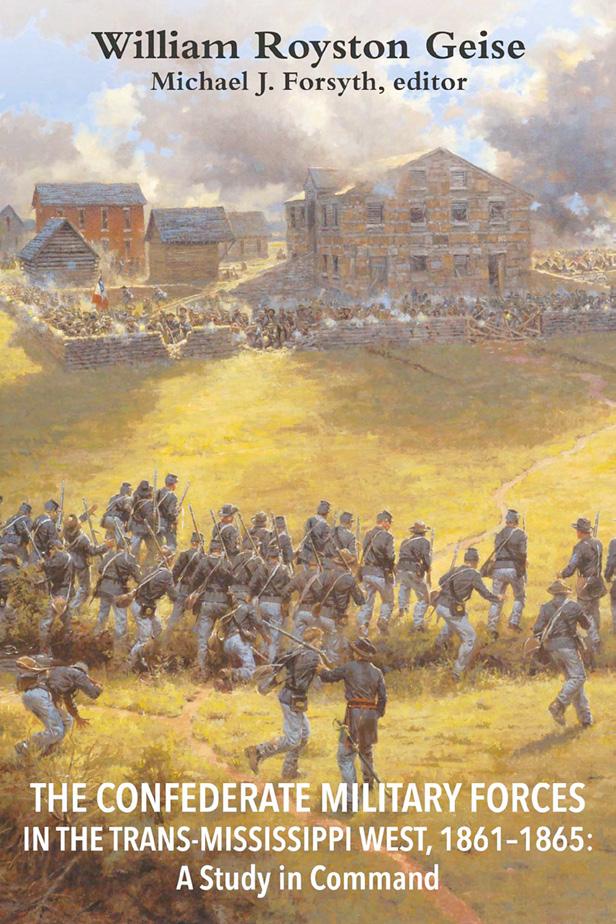
General Sterling Price’s abortive cavalry raid into Missouri in late 1864 effectively ended Confederate military operations in the Trans-Mississippi West.
Abraham Lincoln and His Times: A Sourcebook on His Life, His Presidency, Slavery and Civil War. Compiled and edited by Thomas J. Ebert and Allen Carden. List of documents, appendix, bibliography, footnotes, index. 461 pp., 2022, McFarland and Co., www. mcfarlandpub,com $125.00.

Reviewed by Joseph A. Derie
26, 1861 (Sectionalism and Political Ambition); February 27, 1961–April 11, 1861 (The Presidency Won, the Union Shattered); April 12-December 31, 1861 (War Begins); 1862 (The Year That Transformed America); 1863 (No Turning Back); 1864 (War Weariness and Uncertainty); and 1865-1866 (Victory and Aftermath, So Many Loose Ends).
Most Civil War books focus on battles or leaders. Departing from the norm, this book chronicles the development of Confederate command structures in the Trans-Mississippi West from start to finish. Military operations are mentioned only as they relate to organizations and command structures within the Confederacy’s Trans-Mississippi Department– Texas, Arkansas, Missouri, the Indian Territory, and western Louisiana. Both the author and editor were career U.S. military officers turned Civil War historians, giving them keen professional insights into the book’s subject matter.
The book began about fifty years ago as the late Col. William Geise’s doctoral dissertation. Rather recently, a Civil War researcher stumbled across the manuscript and passed it on to publisher Ted Savas. Savas convinced Col. Michael Forsyth to bring the work to publication. The result is a unique study that merits wide readership.
Geise explains how, early in the war, the lack of a unified chain of command hampered Confederate war efforts in the TransMississippi West, especially in Arkansas and Missouri where multiple commanders held sway in overlapping territories, often bickered, and generally failed to coordinate their efforts. Geise
The command situation in the department improved materially when Davis replaced Holmes with Gen. Edmund Kirby Smith in July 1863. With the Trans-Mississippi cut off from the Eastern Theater by the fall of Vicksburg and Port Hudson, Kirby Smith soon evolved into a “viceroy” of a “virtual principality,” to quote Geise. From his headquarters in Shreveport, La., Kirby Smith created a de facto western War Department, plus a plethora of both military and civil bureaus and agencies, all intended to bring some semblance of order to his sprawling department. Richmond, however, declined to appoint a shadow Secretary of War in the West and instructed Kirby Smith to fulfill that function as part of his duties as military commander.
Some of Kirby Smith’s organizational efforts proved successful, but his attempts to control cotton exports and foreign trade defeated him. His quixotic venture into foreign policy with the French in Mexico also came to naught.
During his nearly two years in the Trans-Mississippi West, Kirby Smith improved the command structure in his department, although difficulties of communicating across the vast expanse of the department precluded a totally unified command structure.
With Kirby Smith in overall command, Rebel forces achieved some success in military operations, in particular Richard
For all its resources, the Trans-Mississippi Department proved ancillary to the Eastern Theater. As the Confederate war effort petered out beyond the Mississippi, Kirby Smith’s department likewise melted away. During April and May 1865, several of Kirby Smith’s district commanders surrendered their commands, making Kirby Smith’s formal surrender of the entire department on June 2, 1865 a fait accompli.
Geise’s prose is lively; and his analysis is convincing. In preparing the manuscript for publication, Forsyth updated Geise’s impressive but preInternet research, and he expanded Geise’s footnotes without drowning them in minutiae.
Like Savas Beatie books generally, this one is beautifully crafted. The double-spaced text is easy on older eyes. Notes are helpfully placed at page bottoms. Each of the 20 photos of major characters appears in the text near where the character is introduced. The four maps are large and easily decipherable.
This book will appeal to readers interested in the war in the TransMississippi Theater, in general, and in military organizational and command structures, in particular. I thoroughly recommend it.
C. Michael Harrington is a retired lawyer, mainly resident in Houston. He’s authored several published articles on South Carolina soldiers, and he’s lectured to Civil War organizations in Houston on multiple topics, including Yale’s Confederate alumni and South Carolinians in the war. He’s a past president of the Houston CWRT.
Abraham Lincoln and His Times is “a one-of-a-kind hybrid reference work that combines chronology with almost 400 primary source papers to contextualize Lincoln’s life within his historical era.”
The oversized paperback (8.5" x 11") is divided into eight chapters covering Lincoln’s life and eras from 1809 until 1866, shortly after his death. Each chapter begins with a detailed introduction by the compilers and editors and then proceeds chronologically through the era covered, giving Lincoln biographical entries, dates of key events, and published Union, Confederate, and private documents (letters, speeches, articles, public laws, resolutions, etc.). For ease of reference and research there is a list of the documents contained in each chapter. The appendix is some 34 pages of biographical sketches of personalities mentioned in the text.
The eight chapters cover the periods 1809–1850 (The Formative Years); 1851-February
Each chapter’s contents are eclectic and absorbing. Writers range from the well known (Lincoln, Davis, Frederick Douglas, Grant, Lee) to those only well known to Civil War history buffs (Mary Chestnut, John B. Jones, Edmund Ruffin) as well as to the obscure (Edmund Dargan, William D. Shipman). Important documents include those promulgated by the U.S. and Confederate Congresses, Lincoln and Davis’ inaugural addresses, the Emancipation Proclamation, and the 13th and 14th Amendments to the Constitution. Other documents are more obscure such as the American Party Platform for 1856, the National Union Party Platform for 1864, and the Articles of Agreement between Texas and Santa Anna, May 14, 1836.
Abraham Lincoln and His Times is heavily researched and documented by the editors and is an especially valuable resource for the amateur as well as professional historian. Albeit pricey, it is highly recommended to those with special interest in Abraham Lincoln, his presidency, the era leading up to the Civil War, the Civil War era itself, the slavery question, and emancipation
CAPT Joe Derie is a longtime Civil War buff with a special interest in Civil War naval history and the Civil War in the West. He is a retired USCG officer and a licensed officer of the Merchant Marine, currently self-employed as a marine surveyor and marine accident investigator in Portland, Ore.
36 CivilWarNews.com June 2023 36 June 2023 CivilWarNews.com Publishers/Authors Send your book(s) for review to: Civil War News 520 Folly Road, Suite 25-379 Charleston, SC 29412
COLLECTION
Left: Thomas Alston Martin enlisted May 8, 1861, into Company E, 13th North Carolina State Troops as a private, he would soon be promoted to corporal and then sergeant. His leadership skills leading his company did not go unnoticed. He received his 1st commission as 3rd lieutenant. April 26, 1862, he would be promoted twice more until a captain November 17, 1862. Captain Martin is photographed wearing regulation double breasted frock coat with captain’s collar insignia probably late 1862 after promotion.
1, 1863,
wounded with a gunshot to left hip. He was evacuated to a Richmond military hospital, then sent home to recuperate. It would take over a year for his rehabilitation, but he returned to the 13th NC in July 1864 and was promoted to major January 1865. He surrendered with the Thirteenth at Appomattox and returned home to his family only to die three years later at the age of 26 from lingering effects of his wound. At Gettysburg there were 232 men and officers of the 13th North Carolina Infantry engaged; 28 were killed, 112 were wounded, 22 were captured, and one missing. Over 2,400 men would serve in the 13th over the course of the war, only 22 officers and 193 men surrendered at Appomattox. He died in 1868.

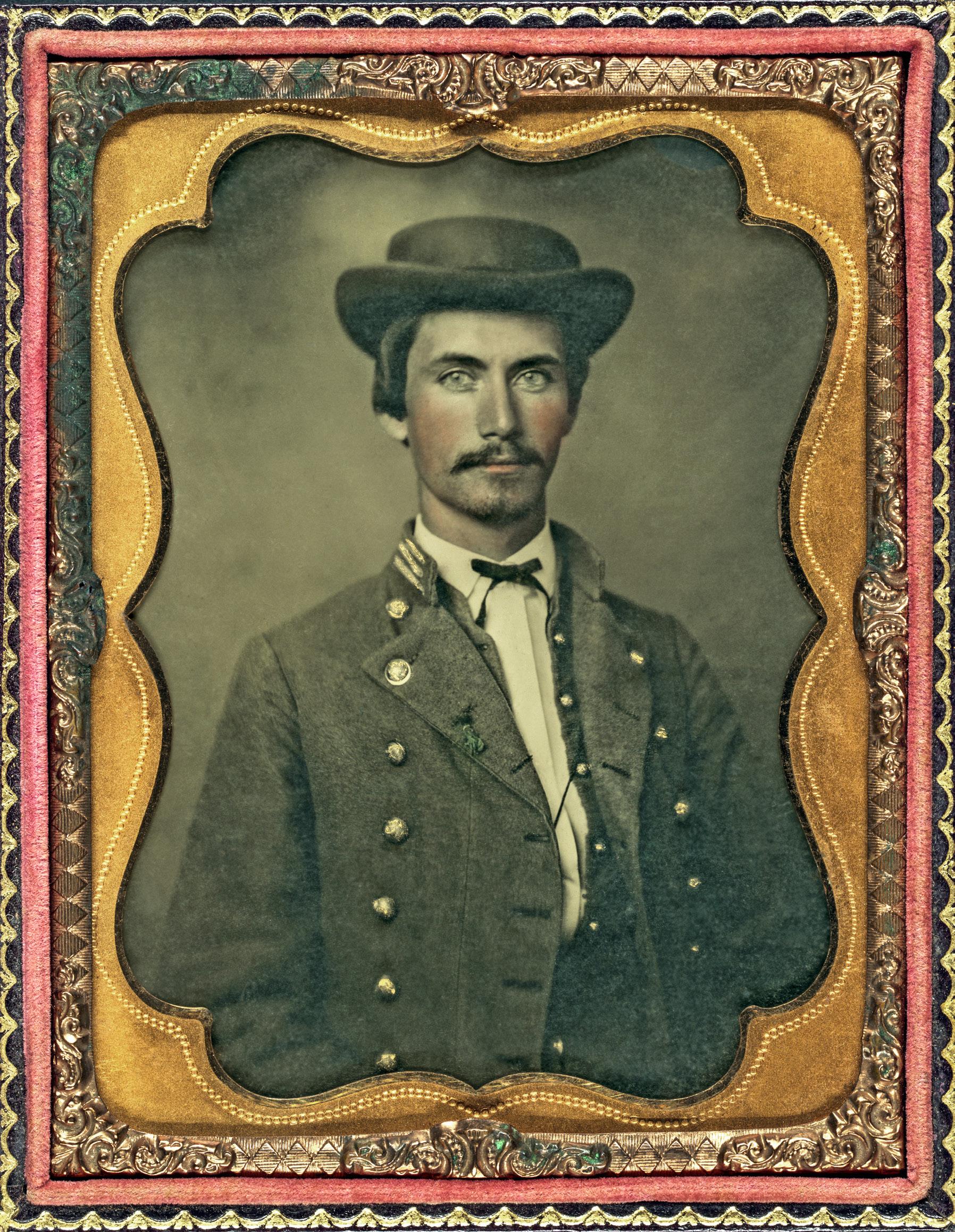
37 June 2023 37 June 2023 CivilWarNews.com CivilWarNews.com
Right: Captain Martin is photographed here mid-war just before Gettysburg, less than a year older, but now has grown a little facial hair. He is apparently wearing the same frock coat worn more casually with open collar and stylish headgear from the above photograph. Captain Martin led his men in Dorsey Pender’s Division against Seminary Ridge at Gettysburg July
where he was badly
The Artilleryman is a quarterly magazine for collectors, competition shooters and those interested in ordnance from the Revolutionary War to World War II, primarily focusing on cannon, implements, projectiles and related artifacts from the American Civil War. This full color magazine features articles on cannon safety, artillery history, projectiles, fuses, places to visit, book reviews, competition events, and so much more. The annual quarterly subscription price is just $37.95.



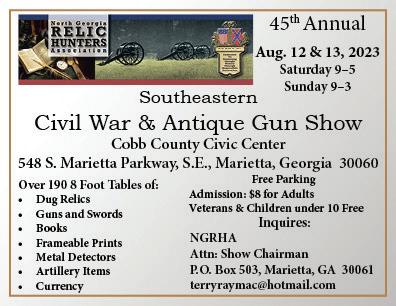







Military Antique Collector is a bi-monthly magazine with detailed high-resolution color photographs of some of the world’s most beautiful and unusual military collectibles. Dedicated to both the expert collector and novice alike, each issue is filled with informative articles written by leading authorities in their fields of expertise, including distinguished well-known authors, along with prominent museum and auction professionals. Issues spotlight rare and unusual military objects, craftsmanship works, and their relationship to historical figures dating from early American and European history to limited coverage of the post-1898 artifact. Priced at only $39.95 for 6 issues. It’s easy to see why Military Antique Collector magazine has become popular so quickly.




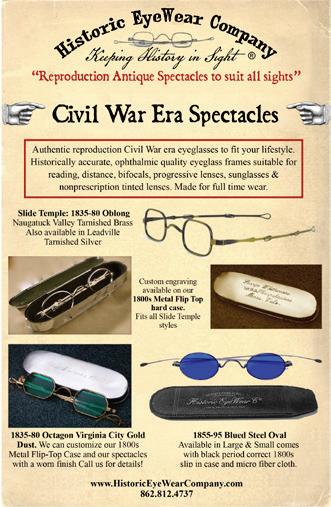
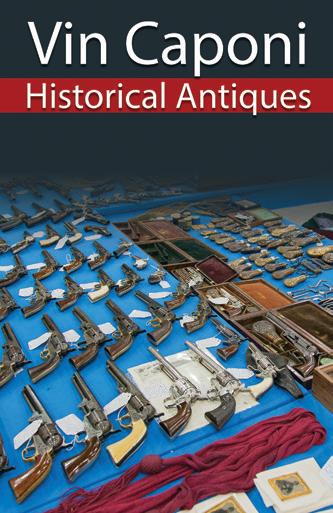



HistoricalPublicationsLLC.com




















































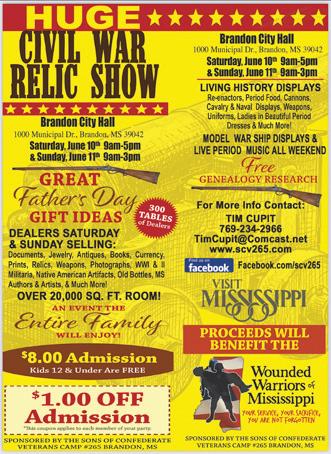












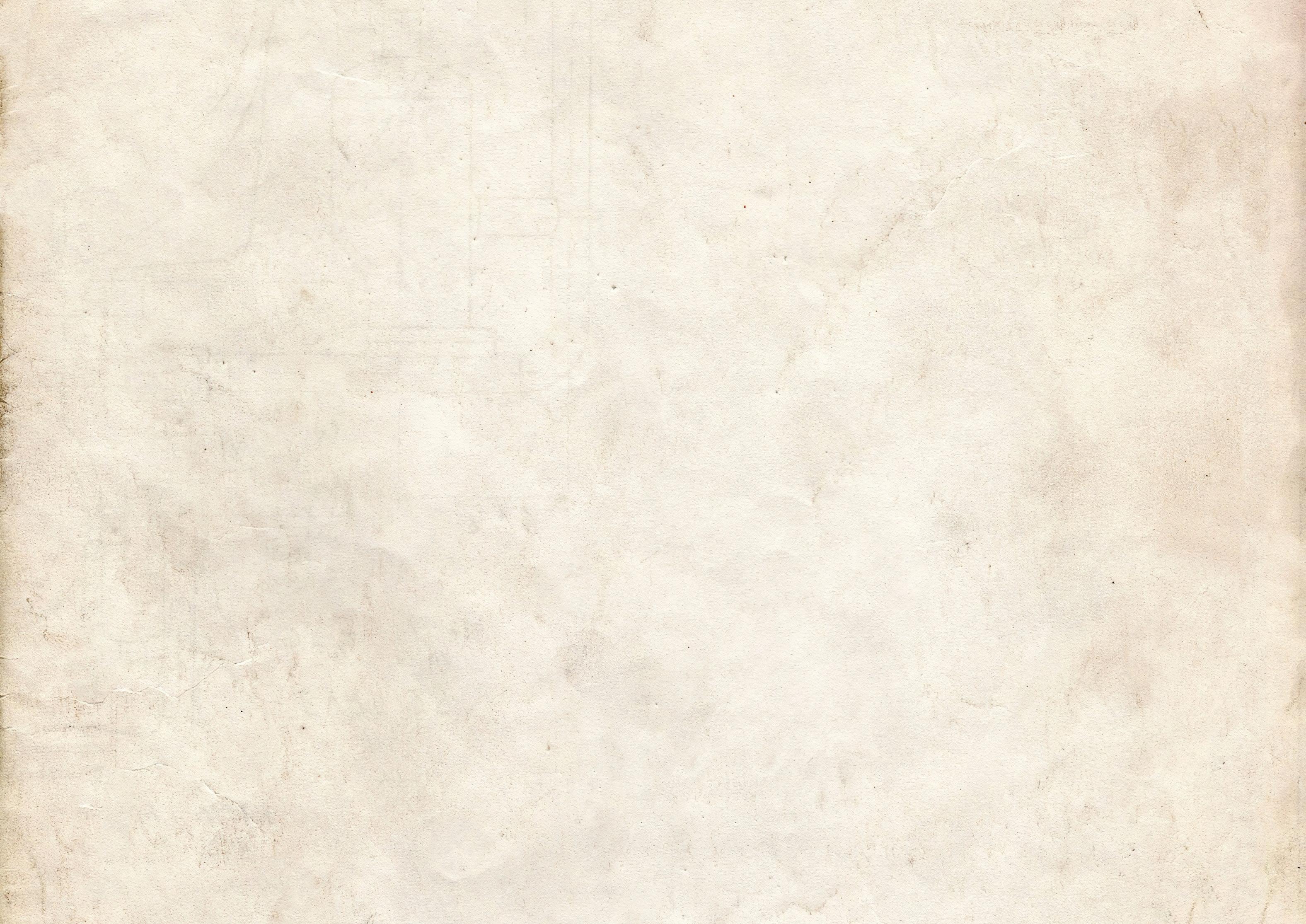
38 CivilWarNews.com June 2023 38 June 2023 CivilWarNews.com Museum Quality Civil War Union & Confederate Artifacts! WE HANDLE THE BEST Antique Bowie Knifes Civil War Swords Confederate D-guards Antique Firearms Dug Relics Buckles & Belts Identified Relics Letters & Documents Uniforms & Head Gear Images & Currency Flags ALLEN WANDLING 618-789-5751 • awandling1@gmail.com MidWestCivilWarRelics.com CONSIGNMENTS WELCOME Contact Glenn Dutton at: BUYING & SELLING Field & Heavy Artillery Cannon, Shells, Fuses & Etc. WE BUY ANTIQUE WEAPONS www.AndrewBottomley.com Mail Order Only Worldwide Shipping Calling the UK from overseas: +44 1484 685 234 Calling our UK cellphone from outside the UK: +44 7770 398 270 email: sales@andrewbottomley.com The Coach House, Holmfirth, England Scottish Highlanders Flintlock Pistol English Mortuary Basket Hilt Spanish Miquelet Pistol British Military Flintlock Blunderbuss Dated 1714 Your trusted source... ...for BOOKS, year-round author talks & appearances and MORE! www.GettysburgMuseum.com Operated by the nonprofit Gettysburg Nature Alliance Licensed Battlefield Guide tours available! 2023 Civil War Dealers Directory To view or download a free copy visit: civilwardealers.com/dealers.htm Promoters of Quality Shows for Shooters, Collectors, Civil War and Militaria Enthusiasts Military Collectible & Gun & Knife Shows Presents The Finest Mike Kent and Associates, LLC PO Box 685 Monroe, GA 30655 (770) 630-7296 Mike@MKShows.com • www.MKShows.com Northwest Georgia Trade Center 2211 Tony Ingle Parkway Dalton, GA 30720 February 4 & 5, 2023 Chickamauga (Dalton) Civil War Show Williamson County Ag Expo Park 4215 Long Lane Franklin, TN 37064 December 2 & 3, 2023 Middle TN (Franklin) Civil War Show l l over the image to go directly to the website for current show schedule. WALLACE MARKERT csacquisitions@gmail.com 16905 Nash Road Dewitt, Virginia 23840 804-536-6413 www.csacquisitions.com Shiloh 2405 Oak Grove Road Savannah, TN 38372 History@shilohrelics.com owner Rafael Eledge .com Dealing in the Finest Authentic Militaria Since 1995 Pistols, Muskets, Carbines, Rifles, Bayonets, Swords, Uniforms, Headgear, Belt Buckles, Cannon, Buttons, Bullets, Artillery Implements Etc. Are you… Afraid of buying “nice” piece just find RebelRelics.com “You gonna check out my website or whistle Dixie?” Brian “Rebel” Akins Greg Ton Buying the Finest in Confederate, Obsolete and Southern States Currency Greg Ton • P.O. Box 9 Franklin, TN 37065 Phone: 901-487-5944 • Email: GTon1@aol.com Since 1978 GregTonCurrency.com We have been a family business since 1965, buying and selling fine antiques. Our collection of antiques ranges from Civil War military to antique military and toys. the highest quality. As taught by my father before me, we sell original quality items that are backed by our family guarantee. Vin Caponi Historic Antiques 516-593-3516 516-353-3250 (cell) rampantcolt@aol.com 18 Broadway, Malverne, NY 11565 34 York St • Gettysburg, PA 17325 717-334-2350 CIVILWAR@UNIONDB.com uniondb www.CollegeHillArsenal.com College Hill Arsenal PO Box 178204 Nashville, TN 37217 615-972-2418 John Sexton ISA-CAPP 770-329-4984 CivilWarAppraiser@gmail.com OVER 40 YEARS EXPERIENCE AUTHENTICATION SERVICES FOR Consultations as to best monetize valuable objects or collections in Is your collection appraised and inventoried for your heirs and family? CONFIDENTIAL APPRAISALS & AUTHENTICATIONS Schedule essential estate planning appraisal www.CivilWarBadges.com badges@bellsouth.net 1036 Washington Ave. Woodstock, Georgia 30188 The Largest Selection of GAR & UCV Hundreds of Memorabilia Items from Rev War through Vietnam Secure & Easy Guaranteed Authenticity of Every Item Buttons, Belt Buckles, and Accoutrements. Allen Gaskins NC Relics BUYING AND SELLING AUTHENTIC Steve and Melody Strickland 770-633-5034 info@dixierelicsonline.com HTTPS://DIXIERELICS.COM The Maryland Arms Collectors Assoc., Inc. presents The “Original Baltimore” Antique Arms Show Since 1955 Maryland State Fairgrounds Timonium, MD North of Baltimore, York Road, MD. Rt. 45 March 18-19, 2023 Public Hours: Sat. to 5, Sun. 9 to 3. Admission: $10.00 – Modern Handguns are Prohibited –Complete information on web site: www.baltimoreshow.com Known as the “CROWN JEWEL” of Collector’s Shows! Welcoming Consignments complimentary estimate on single Get in touch! civilwarshop@gmail.com (252) 636-3039 WE BROKER! www.civilwarshop.com Life Member, Company Military Historians Sons of ConfederateVeterans BATTLEGROUND ANTIQUES, INC.
Vol. 39, No. 4 Fall 2018 $8.00 ArchaeologicalExcavationsataConfederateBattery•HistoricalArtilleryofLeHôpitaldesInvalides Coastal Artillery at Fort Moultrie • 100-Pounder Navy Parrott Shells Confederate 2.25-Inch Projectile Identified • The Evolution of Brooke Sabots Also in is issue:
June 3-4, Virginia. Reenactment: The Action at Wilson’s Wharf
The Action at Wilson’s Wharf. Located between Richmond and Williamsburg on the James River, scenic Fort Pocahontas was the site of the May 24, 1864 Action in which United States Colored Troops defended the fort they built against an assault by Fitzhugh Lee’s Confederate Cavalry. Open to the public 10-4 Saturday and 10-3 Sunday: $10/adults, $8/students; battle reenactments both days. See Civil War camps and enjoy history brought to life through family-friendly activities. For reenactors: pre-registration required starting January 9 at www.fortpocahontas.org; shaded campsites; Friday officers’ social; Saturday dinner and dance.
June 10-11, Mississippi. Civil War Show
Civil War Relic Show will be held at Brandon City Hall, located at 1000 Municipal Drive, Brandon, Mississippi. 300 tables of relics, weapons, prints, documents, artillery, WWI & WWII, bottles, books, currency, living history displays, and more. Admission $8, 12 and under are free. Saturday, 9 a.m. to 5 p.m., Sunday, 9 a.m. to 3 p.m. Contact Tim Cupit at TimCupit@comcast. net or call 769-234-2966, or visit www.scv265.com.
June 23-25, Pennsylvania. 50th Gettysburg Civil War Show
The nation’s premier Civil War relic and collectors show at the Eisenhower All Star Complex at 2634 Emmitsburg Rd., Gettysburg. Our 300+ tables are a great way to view and even purchase authentic Civil War artifacts. Browse the tables and speak with the vendors who are all well versed in history and artifact identification. Better than a museum! Every item has someone willing to give you its history lesson and answer all your questions. $100 VIP Charitable donation includes Friday and early admission for the serious collector. Hours: Sat. 10-5, Sun. 9-2. Admission $10, children under 12 free. For more information visit https://www.gbpa.org/event/annual-civil-warrelic-show.
Aug. 12-13, Georgia. Civil War Show and Sale
45th Annual Southeastern Civil War & Antique Gun Show in Marietta at the Cobb County Civic Center hosted by the North Georgia Relic Hunters Association. Cobb County Civic Center, 548 South Marietta Pkwy SE, Marietta, GA 30060. Hours Sat. 9 a.m. to 5 p.m., Sun. 9 a.m. to 3 p.m. Admission $8, veterans and children under 10 are free. Show chairman: Ray McMahan at terryraymac@hotmail.com. For more info visit www.ngrha.com.
Sept. 23, Illinois. Civil War & Military Extravaganza
Zurko Promotions presents The National Civil War Collectors Fall Show and Sale which will be held at the DuPage County Fairgrounds, 2015 W. Manchester, Wheaton, Ill. Hours: 9 a.m. to 4 p.m. Admission is $10, Early Admission $25. Free parking. For more information visit www. chicagocivilwarshow.com or call Zurko Promotions at 715-526-9769.
Oct. 6-8, Virginia, Annual Conference
Central Virginia Battlefields Trust hosts its 2023 annual conference, “1863: Chancellorsville-The Crossroads of Fire.” This year’s conference features a Friday tour of Moss Neck, Gen. “Stonewall” Jackson’s 1862-63 winter headquarters with historian Frank O’Reilly. That evening the President’s Reception will be at the Sentry Box, one of Fredericksburg’s most historic homes. Saturday features a tour of the Chancellorsville battlefield with historians Chris Mackowski and Kris White. Saturday evening includes a banquet and the annual meeting with a keynote address by Kris White at historic Belmont in Falmouth. Sunday brunch at Stevenson’s Ridge includes a panel discussion about “Chancellorsville as the Prelude to Gettysburg” with historians Sarah Kay Bierle, John Hennessey, Robert Lee Hodge, Scott Walker, and others. The weekend registration is $260.00 per person. More information and online registration are available at: https://www.cvbt.org/ cvbt-annual-conference.
Oct. 6-8, Virginia. Period Firearms Competition

The North-South Skirmish Association 148th National Competition near Winchester. Over 3,000 uniformed competitors in 200 member units compete in live-fire matches with muskets, carbines, revolvers, mortars and cannon
plus costume competitions and historical lectures. The largest Civil War live-fire event in the country. Free admission, large sutler area, and food service. For more information visit the N-SSA web site: www.n-ssa.org.
Oct. 21-22, Virginia. Reenactment
The 159th Anniversary Reenactment of the Battle of Cedar Creek recreating the last major battle in the Shenandoah Valley will be held the weekend of Oct. 21-22 at 8437 Valley Pike in Middletown, Va. See cavalry, artillery, and infantry soldiers in action and in camp. Battle scenarios, music, symposia, and medical, military, and civilian demonstrations are scheduled each day. Fundraising raffles, period merchants, and food vendors onsite. Don’t miss the Evening Candlelight Tour Program. 1-day, 2-day, and discount options available! Children 6 & under are free! For more information; 540-869-2064, Info@ccbf.us or www.ccbf.us.
Nov. 10, Pennsylvania. US Marine Corps Birthday Observance
Join us at the Laurel Hill Cemetery, 3822 Ridge Ave, in Philadelphia at 11 a.m. at the grave of General Jacob Zeilin, 7th Commandant of the Marine Corps during the Civil War. A special ‘Veterans’ Day tour of heroes ‘killed in action’ and buried at Laurel Hill Cemetery will follow. sponsored by: The Legion Post 405; MOLLUS; General Meade Society. For information; 215-228-8200, awaski01@gmail.com, 215-423-3930 or www.thelaurelhillcemetery.org.
Nov. 18, Pennsylvania. Remembrance Day in Gettysburg
General Meade & his Generals and the veterans of the Battle of Gettysburg Honor/Dedication Ceremonies during the Remembrance Day Observance. Honoring all commanders and veterans of the Battle. Meet at the General Meade Equestrian Monument at 10 a.m. For information; Jerry McCormick at 215-848-7753 or gedwinmc@msn.com.
Nov. 18, Virginia. Civil War Show
In conjunction with the Central Virginia Civil War Collectors Association, Bullet and Shell is proud to present the 42nd Annual Central Virginia Military Antique Show (formally Mike Kent’s Capital of the Confederacy Civil War Show). This year, the show is moving to a new location at Meadow Event Park, 13191 Dawn Blvd, in Doswell, Va. The show will host vendors and displays of American military history from the Revolutionary War through WWII. Bring your relics for appraisal or to sell. Over 300 tables! There will be many historical items to add to your collection. Show hours are 9-5 on Saturday, vendor setup on Friday. Parking is free and admission is only $10/adults with children under 12 free. For more information; www.MilitaryAntiqueShow.com.
Dec. 3-4, Tennessee. Civil War Show and Sale
MK Shows presents the 36th annual Middle Tennessee Civil War Show and Sale at the Williamson County Ag Expo Park, 4215 Long Lane in Franklin. The nation’s largest Civil War show, featuring 750 tables of antique weapons, artifacts and memorabilia from top dealers and collectors around the country and encompassing all eras of military history from the Revolutionary War through World War II. Appraisers are always on hand to help you identify and value your military collectibles at no cost. Hours are 9-5 on Sat., 9-3 on Sun. Free Parking. Admission is only $10/ adults and children under 12 are free. For information; www.MKShows.com or Mike@MKShows.com.
Dec. 31, Pennsylvania. Annual General Meade Birthday Celebration
This year will mark the 208th annual anniversary of the birth of General George G. Meade.
The General Meade Society of Philadelphia will celebrate his birthday at Historic Laurel Hill Cemetery, 3822 Ridge Ave. at noon. A champagne toast and reception will follow the program. For information; 215-228-8200 Laurel Hill Cemetery.
https://www.historicalpublicationsllc.com/site/eventlistings.html for all 2023 events.
45th
39 June 2023 39 June 2023 CivilWarNews.com CivilWarNews.com
Before making plans to attend any event contact the event host.
Southeastern Civil War & Antique Gun Show Cobb County Civic Center 548 S. Marietta Parkway, S.E., Marietta, Georgia 30060 Free Parking
$8 for Adults
& Children under 10 Free
Admission:
Veterans
Annual
Over 190 8 Foot Tables of: • Dug Relics • Guns and Swords • Books • Frameable Prints • Metal Detectors • Artillery Items • Currency Inquires: NGRHA Attn: Show Chairman P.O. Box 503, Marietta, GA 30061 terryraymac@hotmail.com
Aug. 12 & 13, 2023 Saturday 9–5 Sunday 9–3



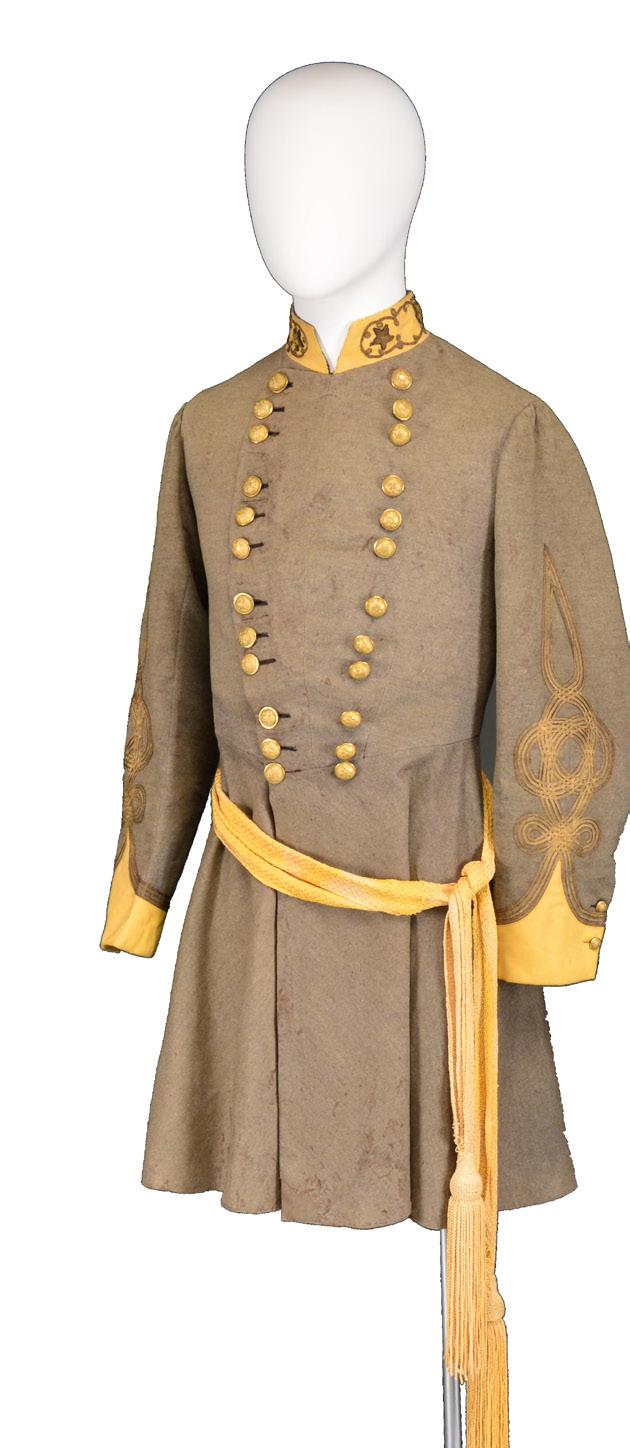

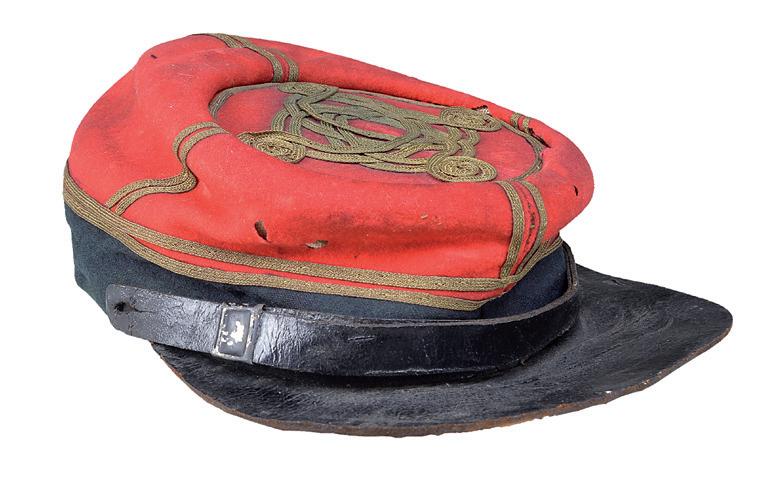

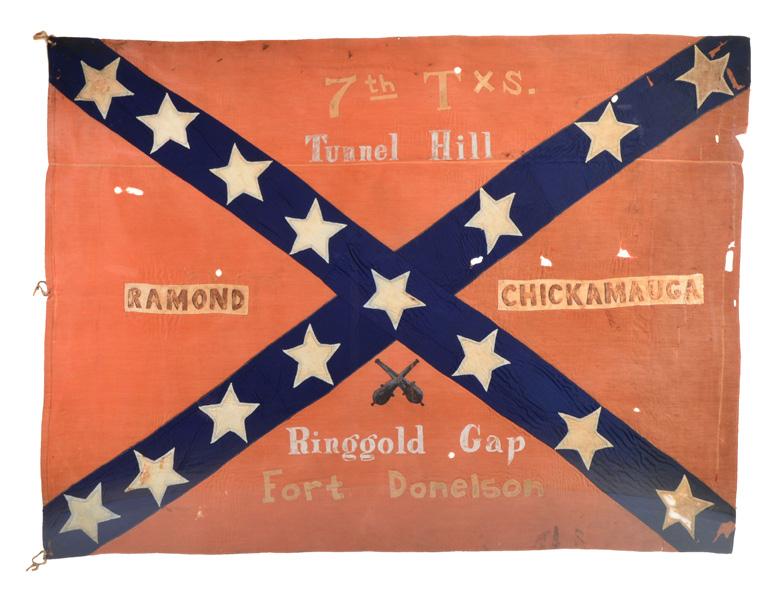

poulinauctions.com | 199 Skowhegan Rd, Fairfield, ME 04937 | Stephen Poulin, ME Lic # 1115 • Reputation - Sterling reputation for honest, straight forward business relationship with both buyers and sellers alike. • The Best Rates In The Industry - The Poulin & Julia family provides the most competitive commission rates in the industry. Including 0% or better seller’s commission on expensive items and valuable collections. • Finest Expertise - We utilize over 250 years of combined professional consultant experience and an additional three-generations of marketing expertise of nearly $1 BILLION in combined total sales by the Poulin & Julia Family. • Unique Auction Description Guarantee - We utilize honest, knowledgeable and detailed descriptions with the most comprehensive guarantee, building the highest level of confidence from bidders and generating the greatest return for consignors. • Presentation - Building interest and enthusiasm from potential bidders is crucial for achieving the maximum value for our consignors. Utilizing the finest detailed photography, catalog design and state of the art auction facility generates the highest level of excitement from potential bidders & the best results for your collectibles. • Additional Poulin & Julia Family Benefits - Fully insured, numerous bidding options available, complimentary consignment pick up for expensive items and valuable collections, massive client base of international and domestic clientele & extremely aggressive marketing campaign. Nearly IN COMBINED TOTAL SALES Contact Jim for a free consignment consultation at (207) 742-0007 or email jamesjulia@poulinauctions.com $1 BILLION THE TRADITION CONTINUES... FAMILY REUNION! His expertise and experience in marketing and achieving the best results for high end quality firearms & collectibles will help continue to grow our firm into the leading specialty firearms auctioneer in the world. We are pleased to announce the renewed partnership with the world-famous auctioneer... James D. Julia! 0% Or Better! Seller’s Commission On Expensive Items & Valuable Collections THE POULIN & JULIA FAMILY DIFFERENCE If you are interested in more information about consigning a single item or an entire collection, we would very much like to discuss with you the methods and strategies to generate you, the consignor, the greatest return. Contact James Julia for a free consignment consultation at: or by email: (207) 742-0007 jamesjulia@poulinauctions.com Auction World Record: Confederate Uniform $92,000 AUCTION WORLD RECORDS 2nd Highest World Record: Confederate Kepi $57,500 Auction World Record for a Civl War Martial Small Arm Sold $575,000 Visit Poulin Auctions YouTube.com for more! $63,250 Auction World Record: Confederate Kepi In The Civil War Genre Set by Poulin Antiques and Auctions: For more information, please visit: www.poulinauctions.com or call (207) 453-2114 and become a consignor today! ACCEPTING CONSIGNMENTS FALL 2023 PREMIER FIREARMS & MILITARIA AUCTION November 3rd, 4th, & 5th, 2023 | Fairfield ME Antiques & Auctions Inc. $230,000 2nd Highest World Record: Confederate Flag













































































































































 By Bob Ruegsegger
By Bob Ruegsegger















 Elmore
Elmore


 and
By Robert F. O’Neill. Illustrated, maps, notes, appendices, bibliography, index, 319 pp. Potomac Books. Potomacbooksinc.com 2023, $36.95.
and
By Robert F. O’Neill. Illustrated, maps, notes, appendices, bibliography, index, 319 pp. Potomac Books. Potomacbooksinc.com 2023, $36.95.

























































































